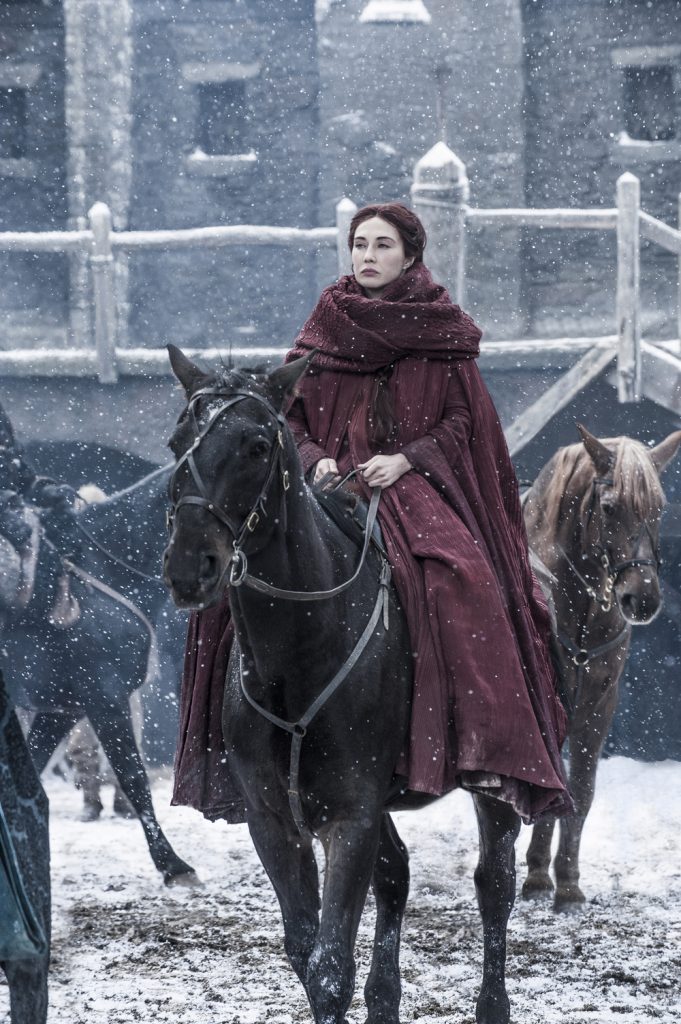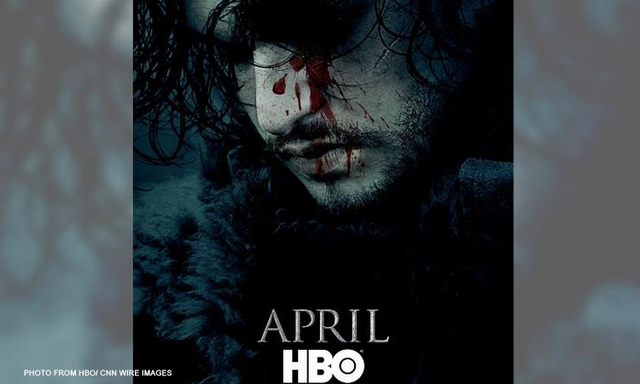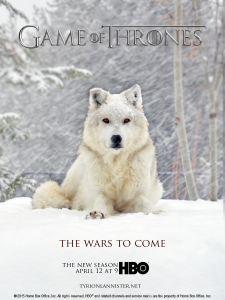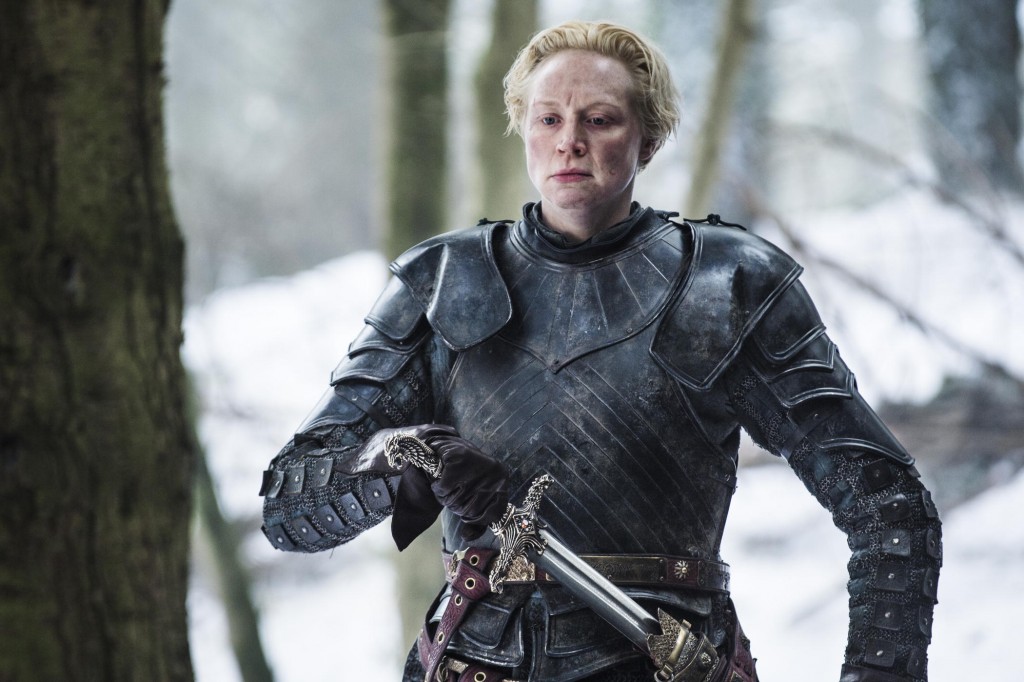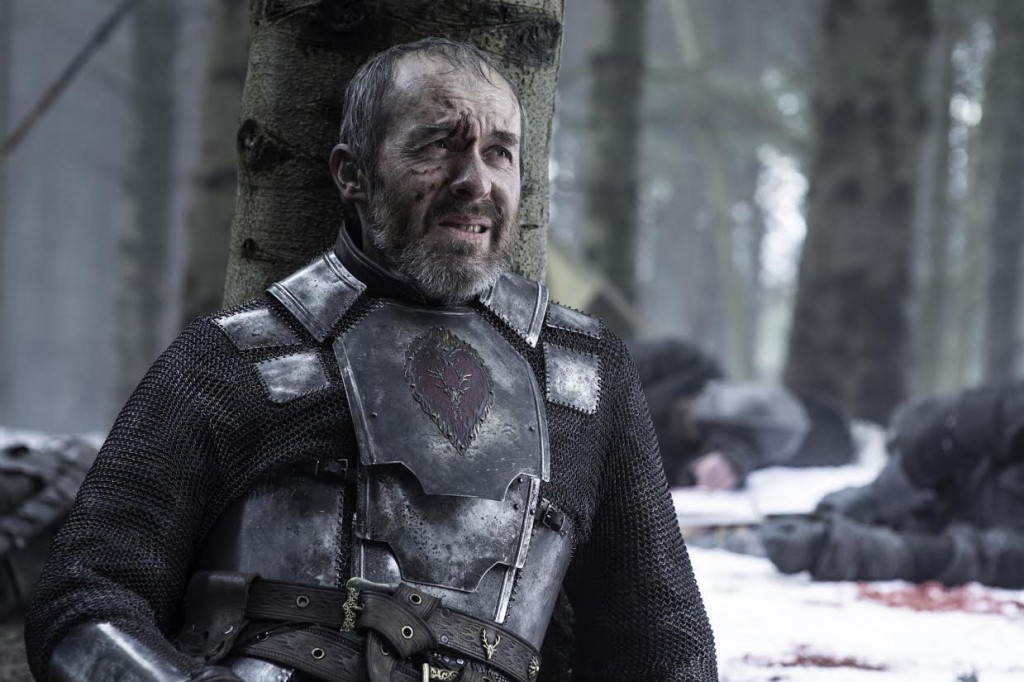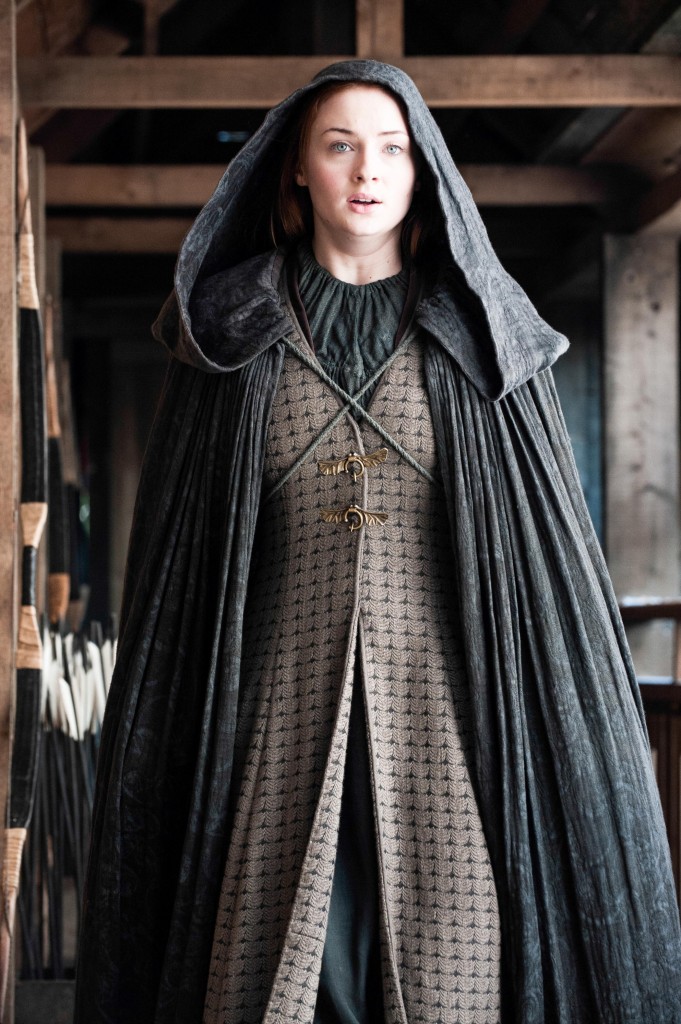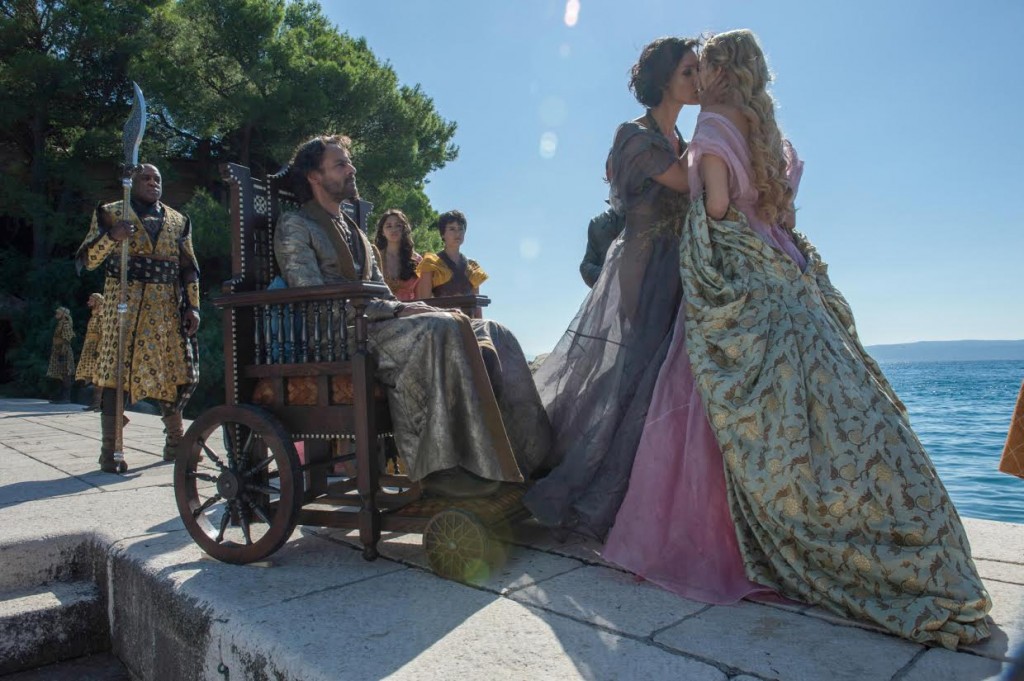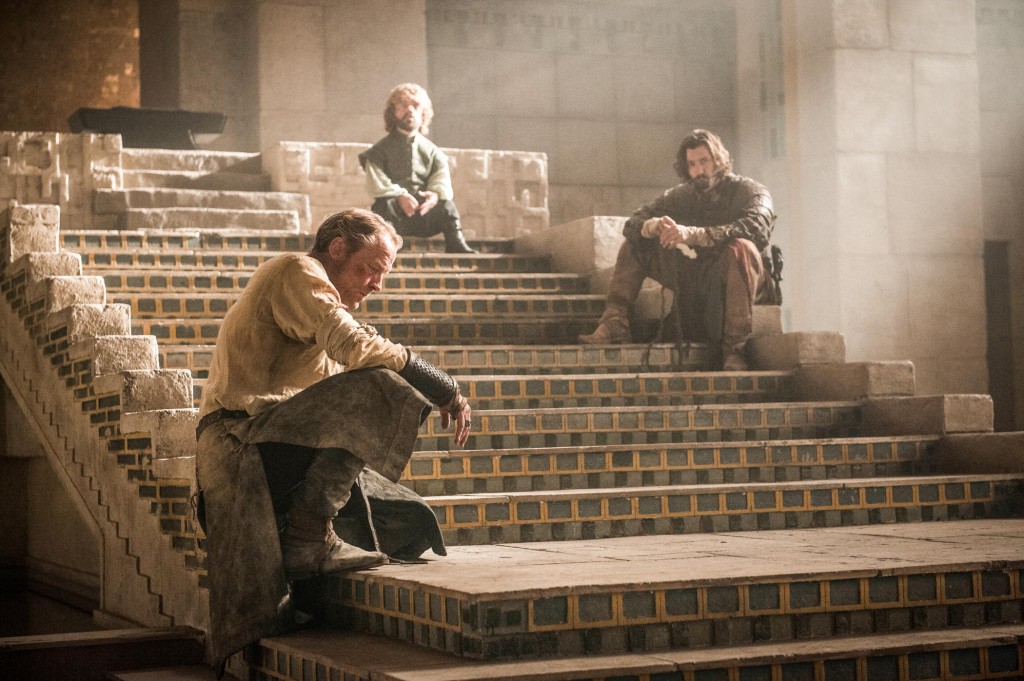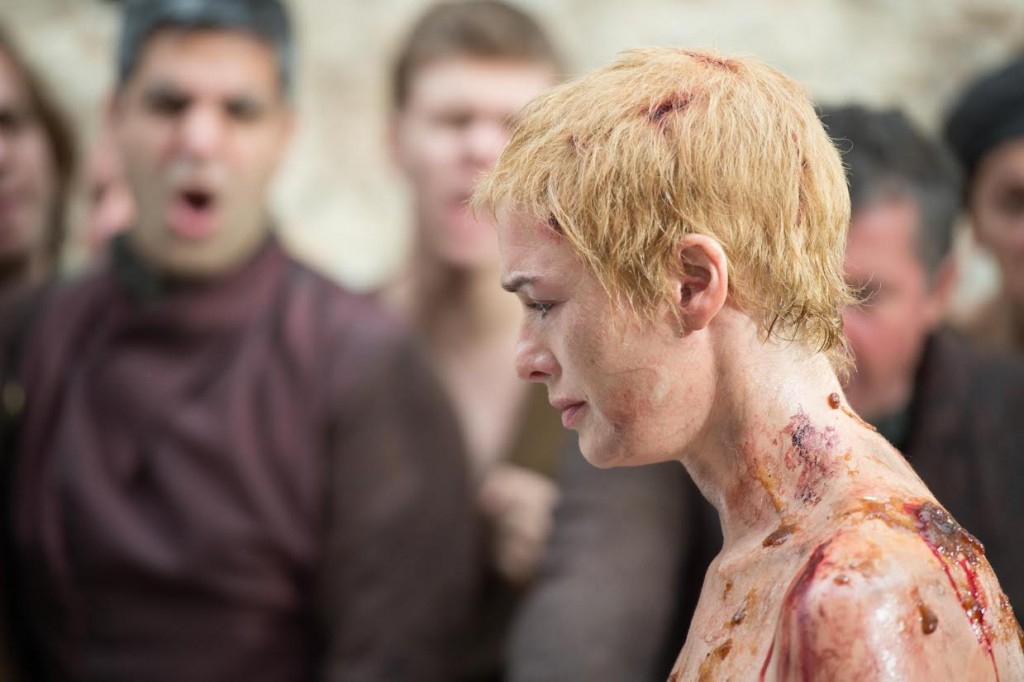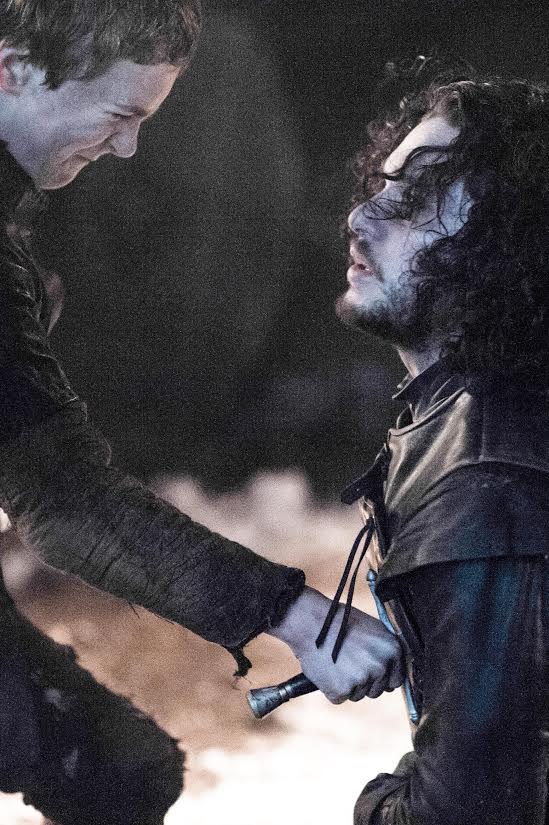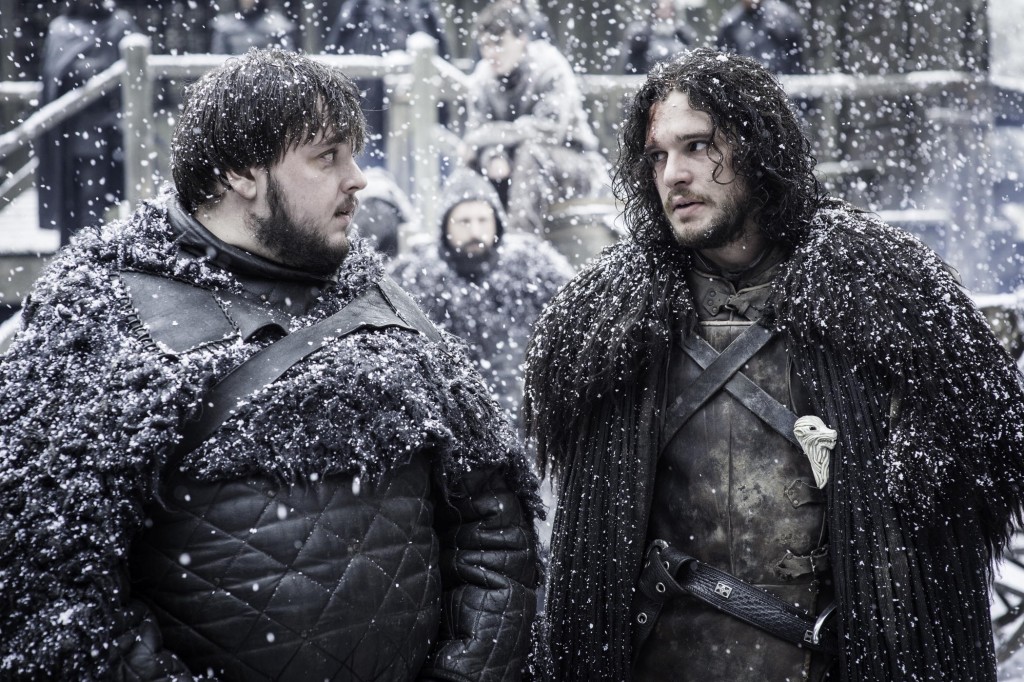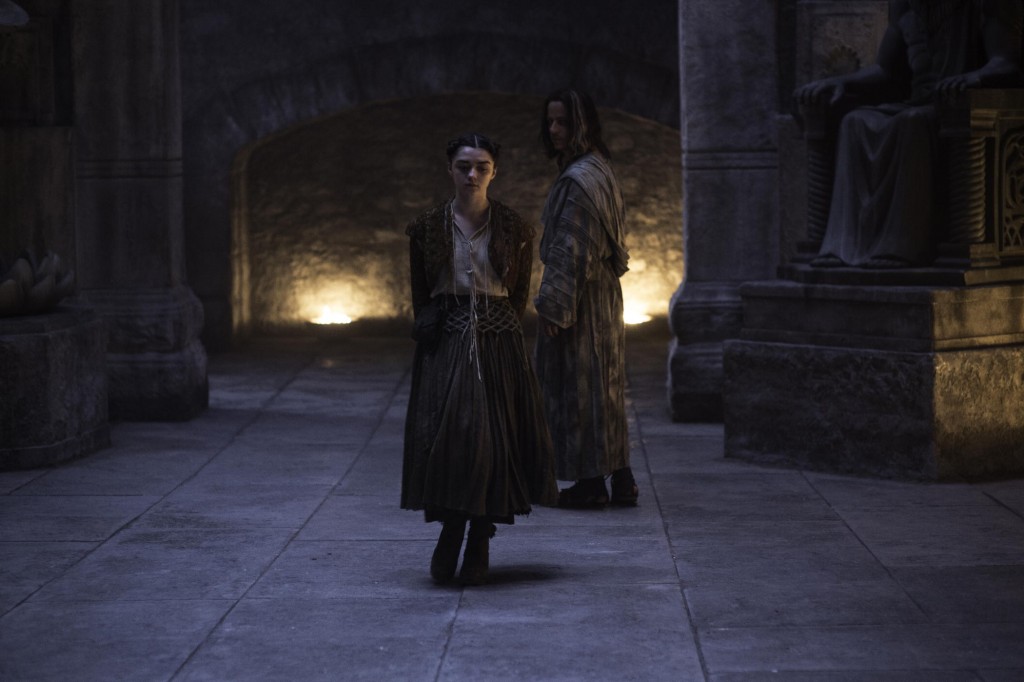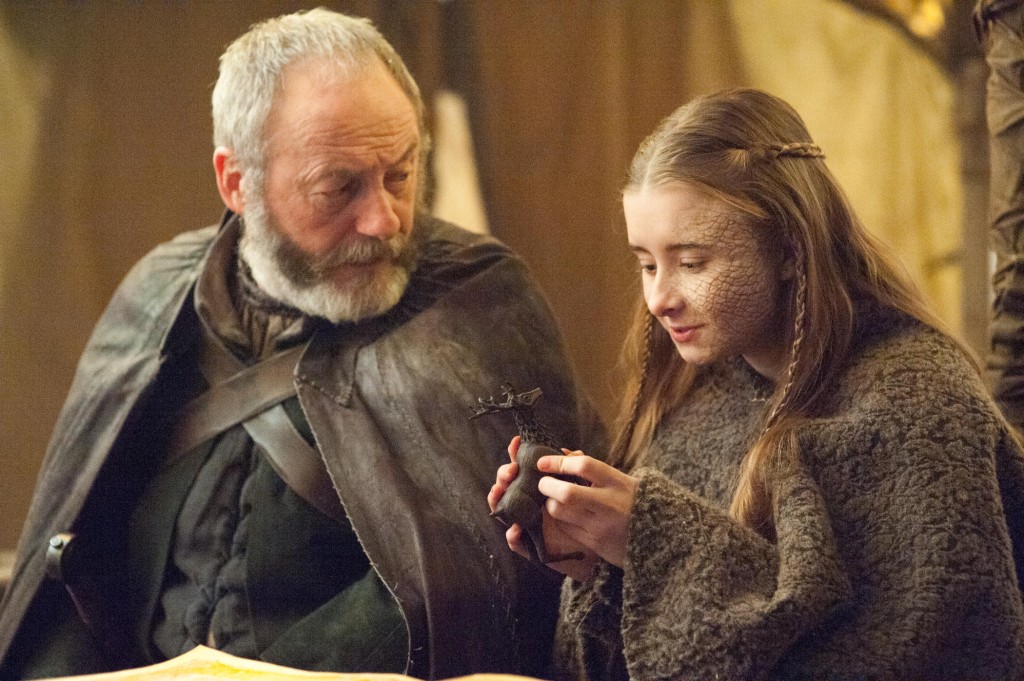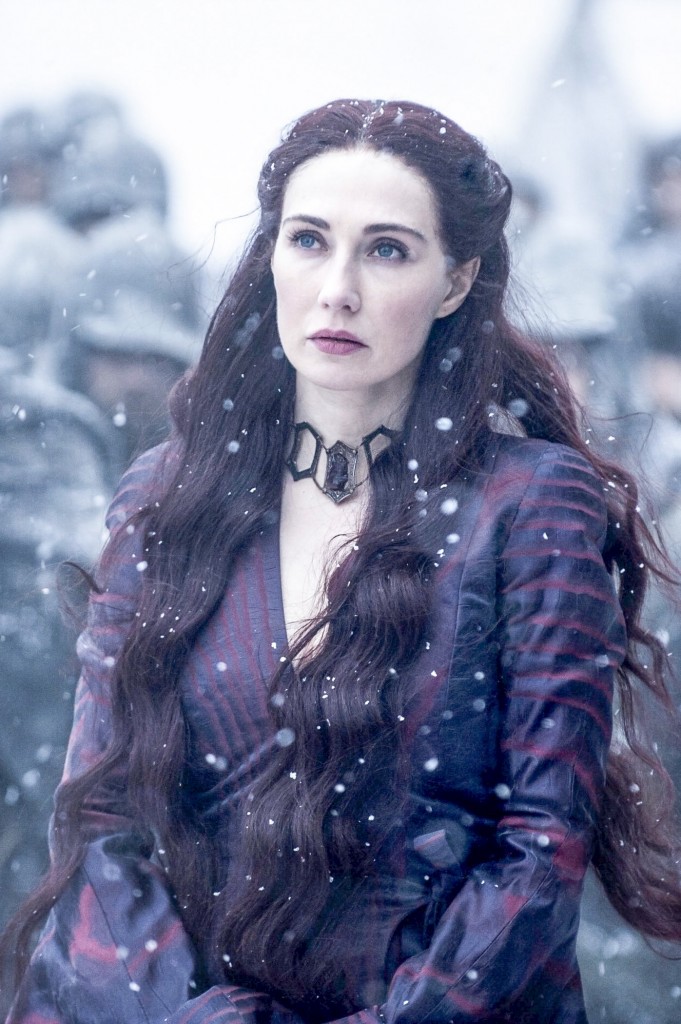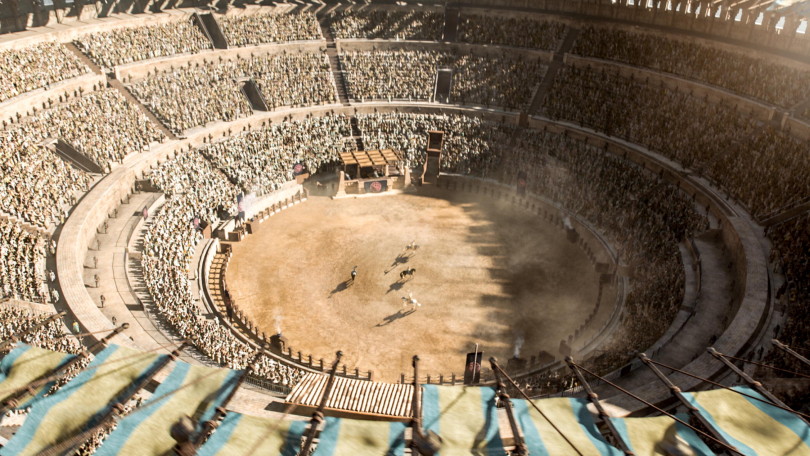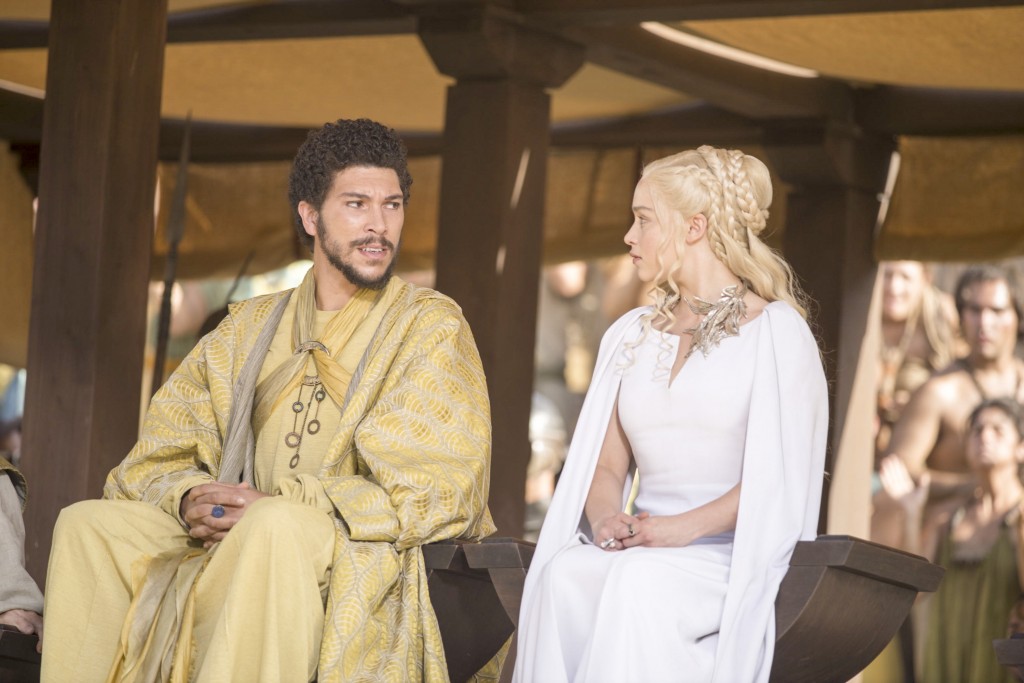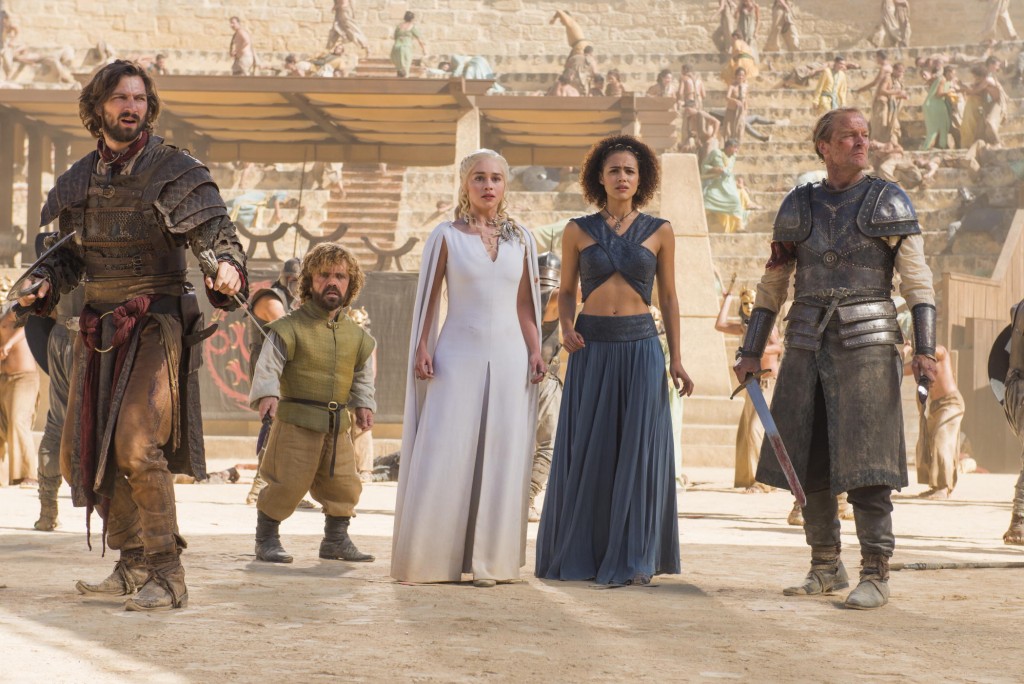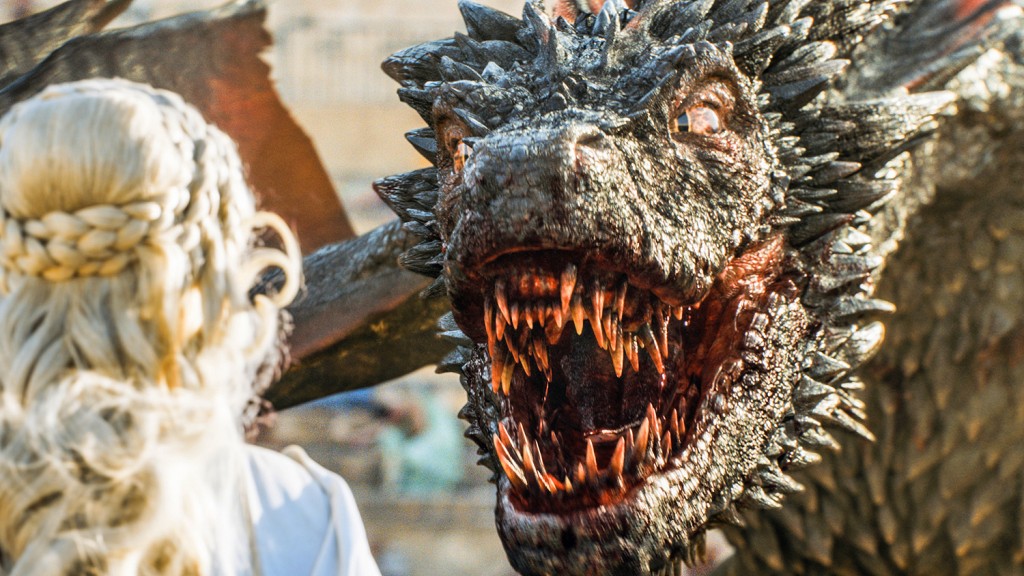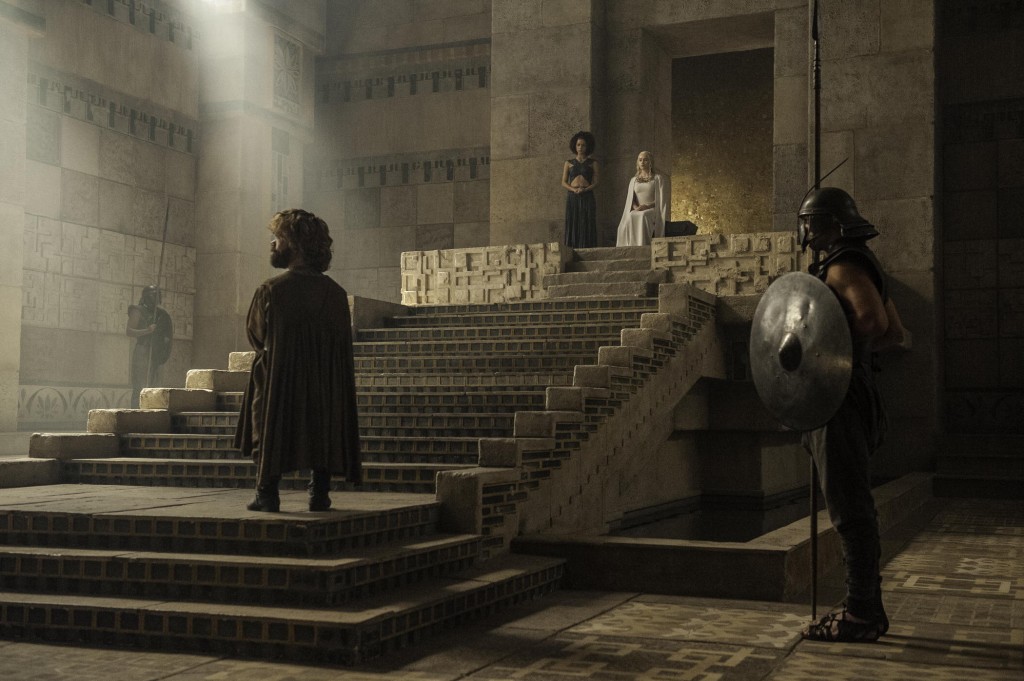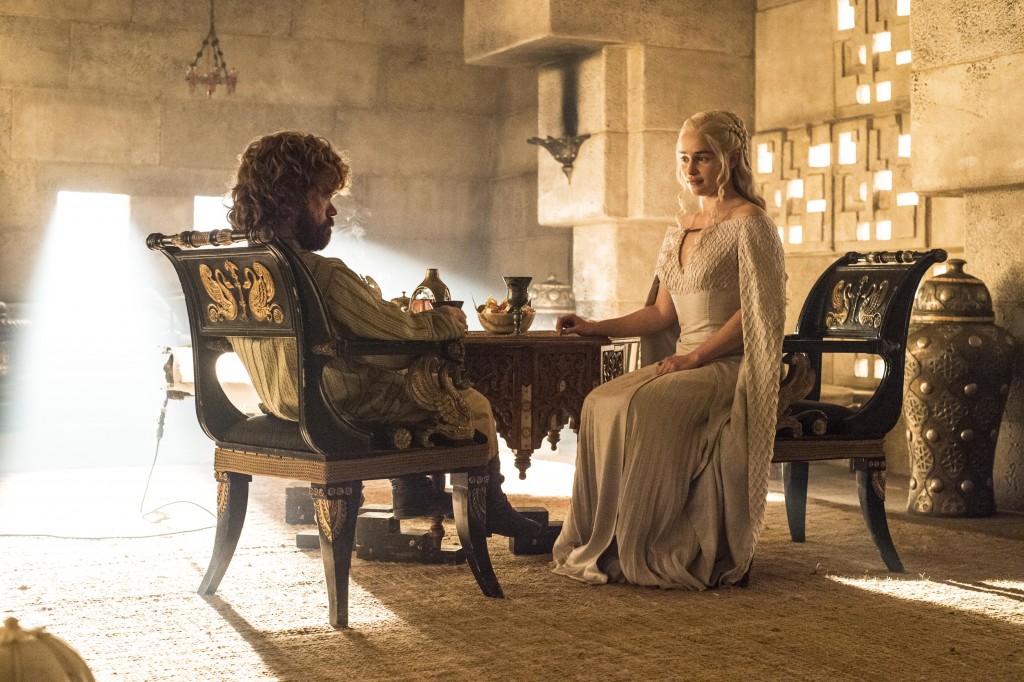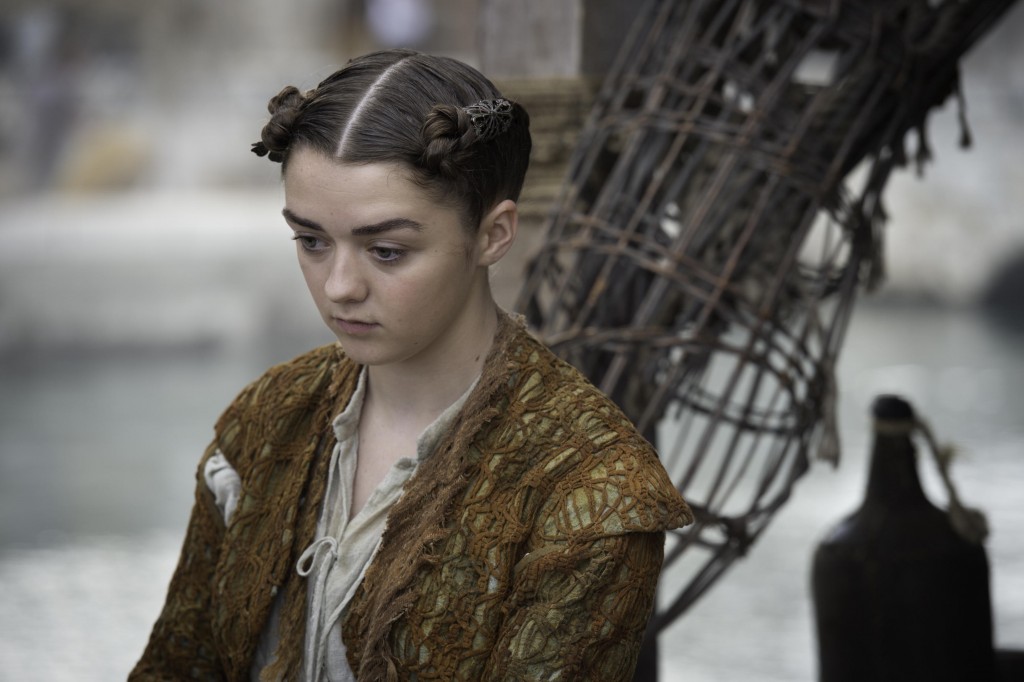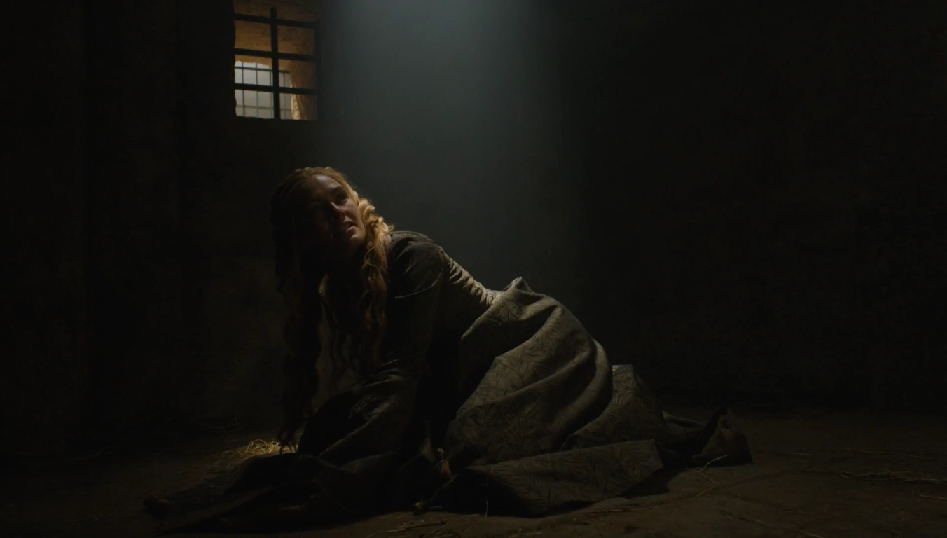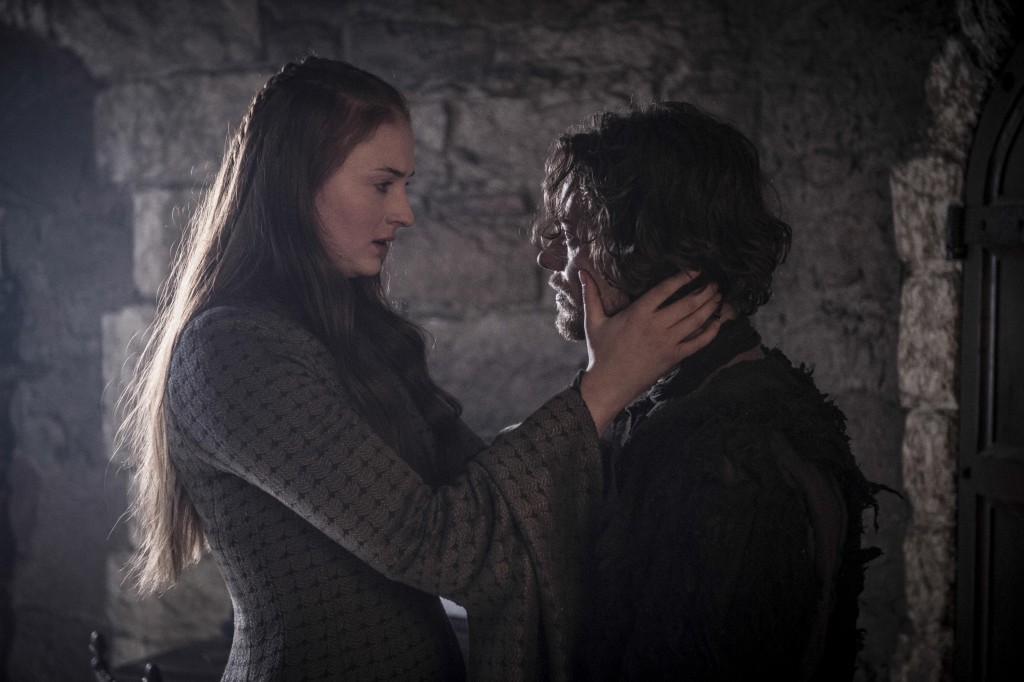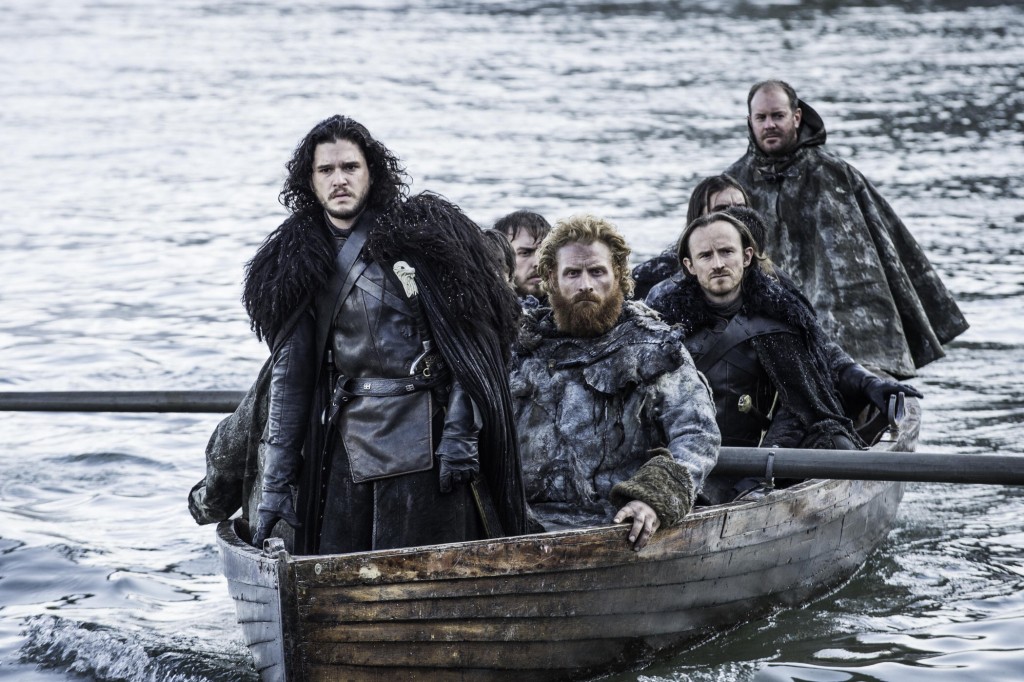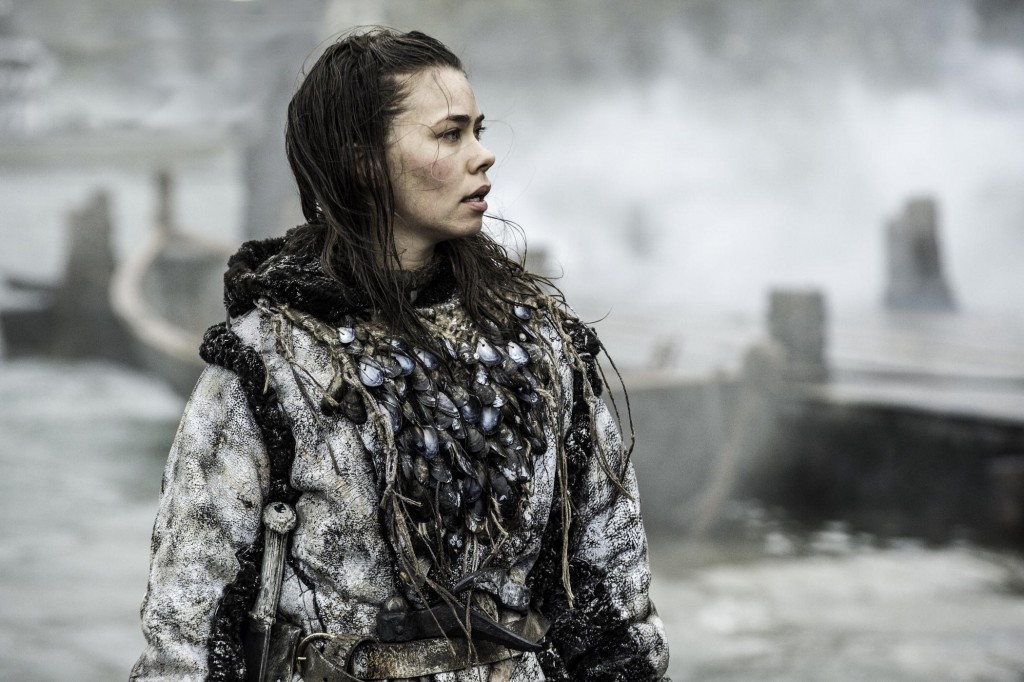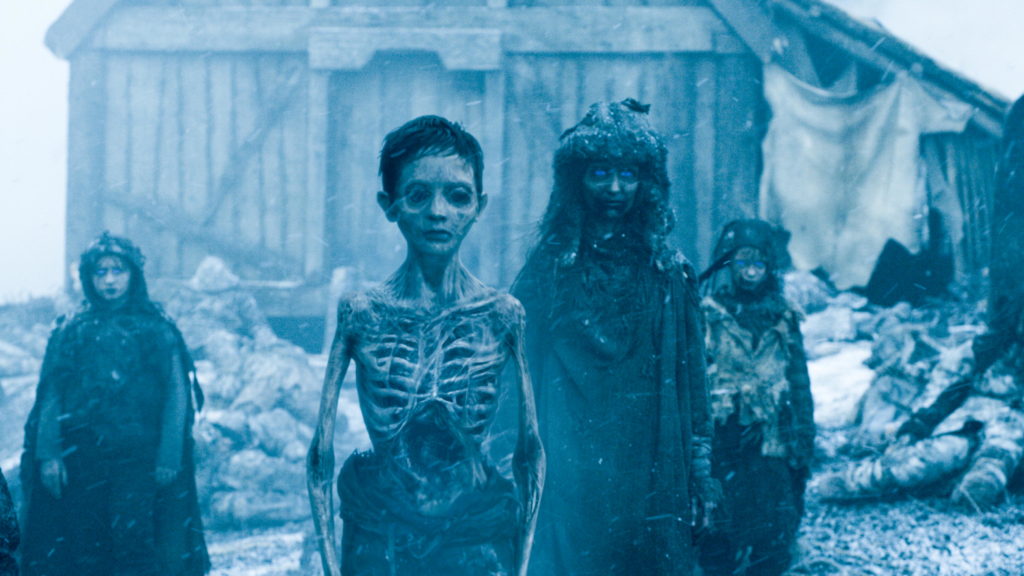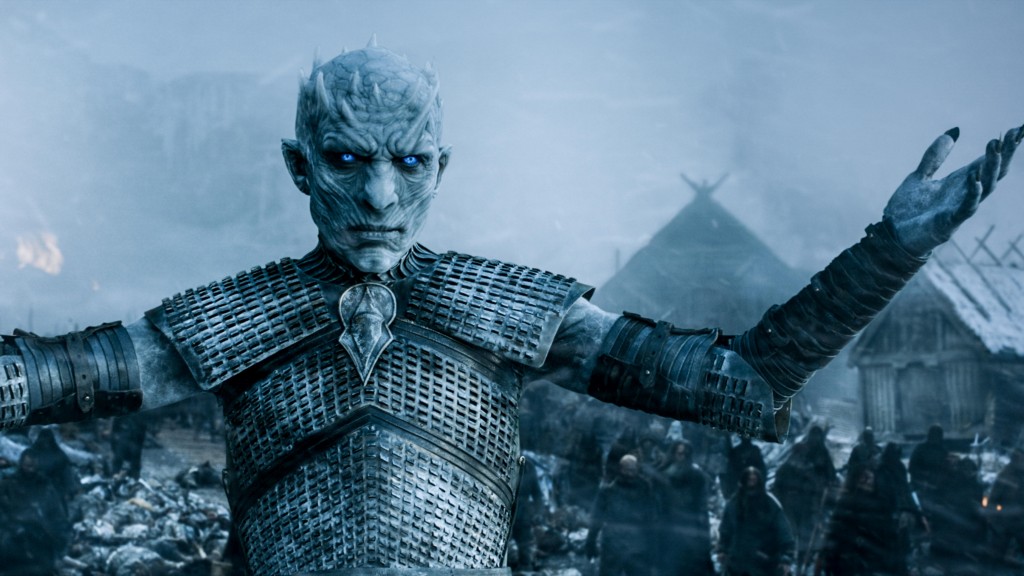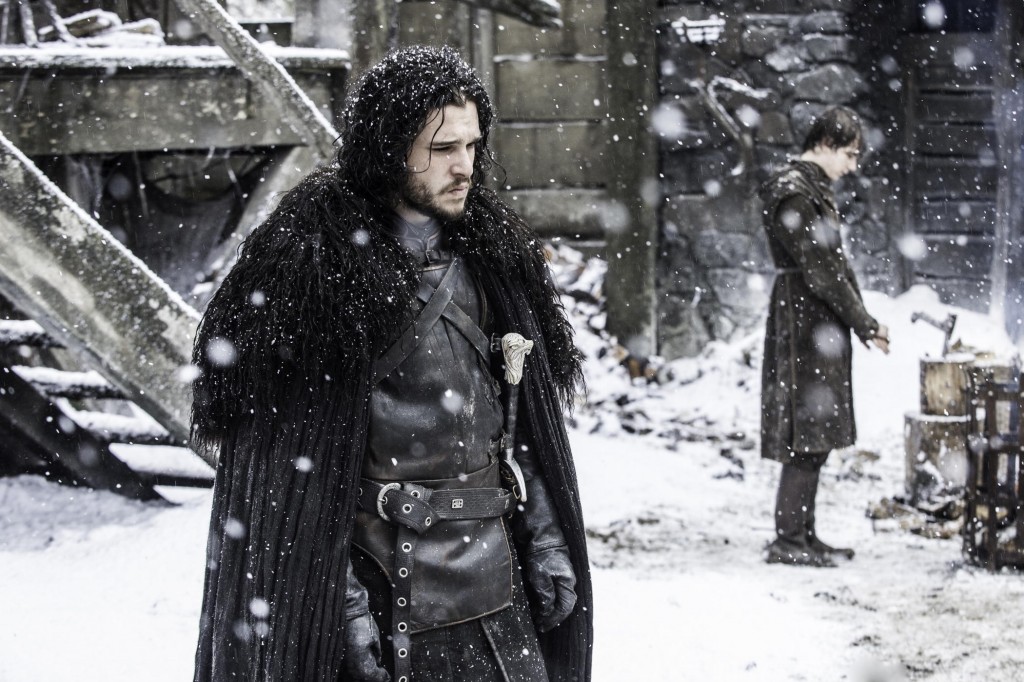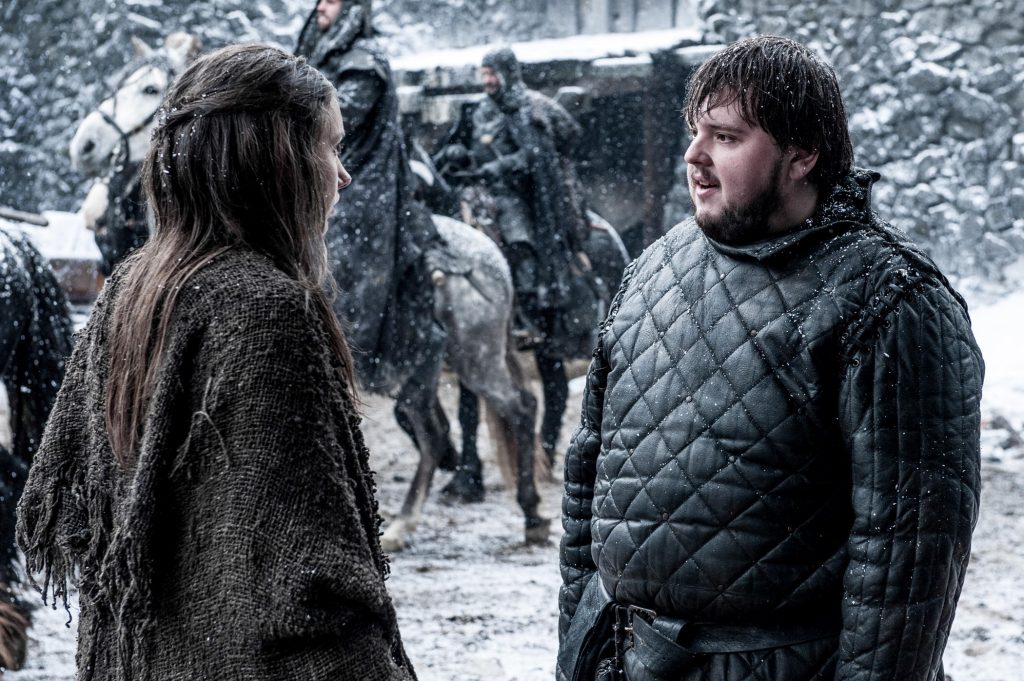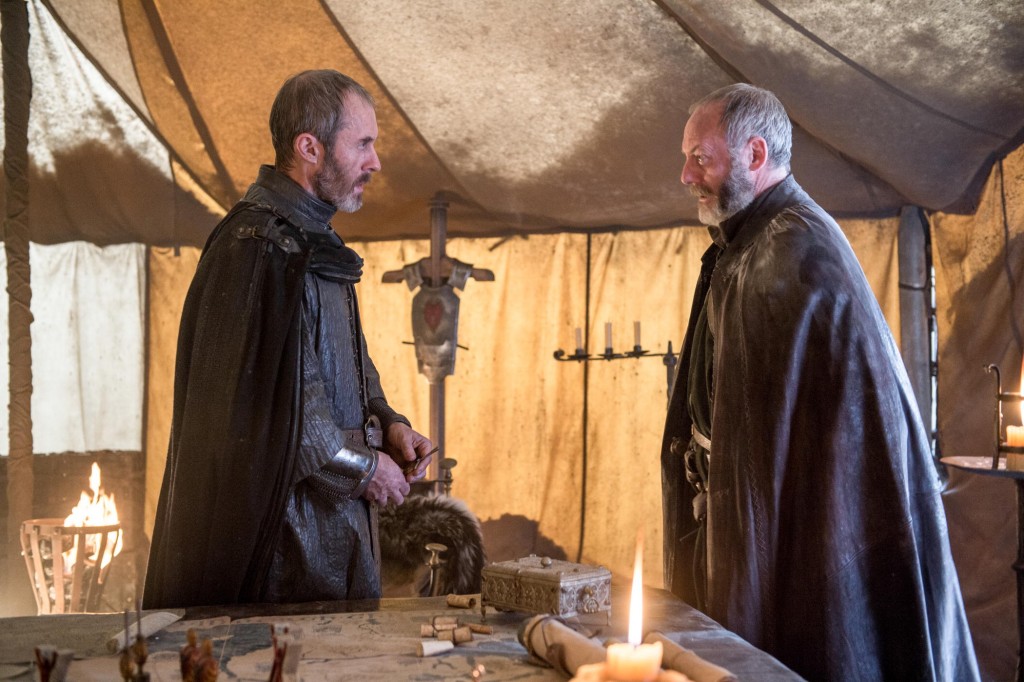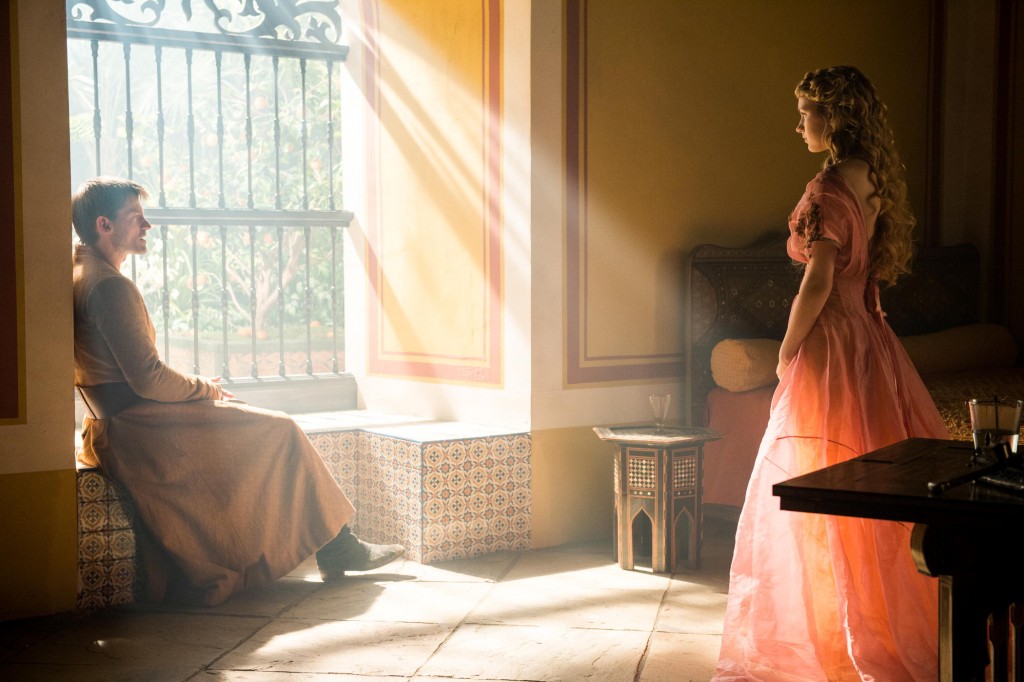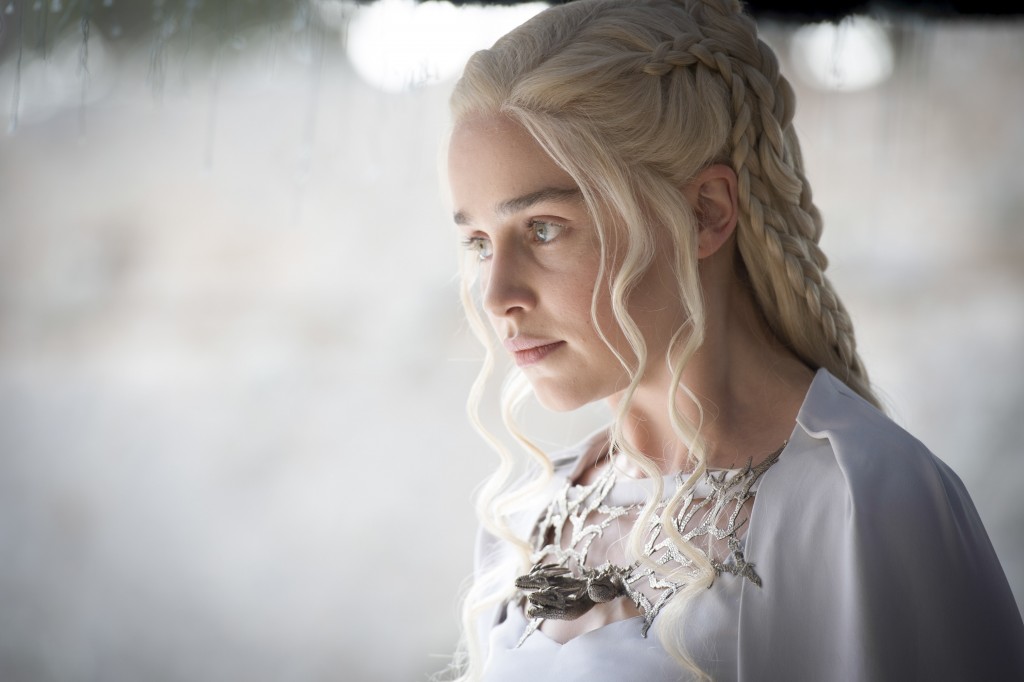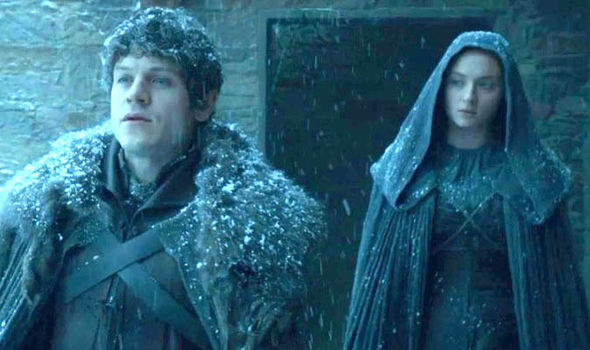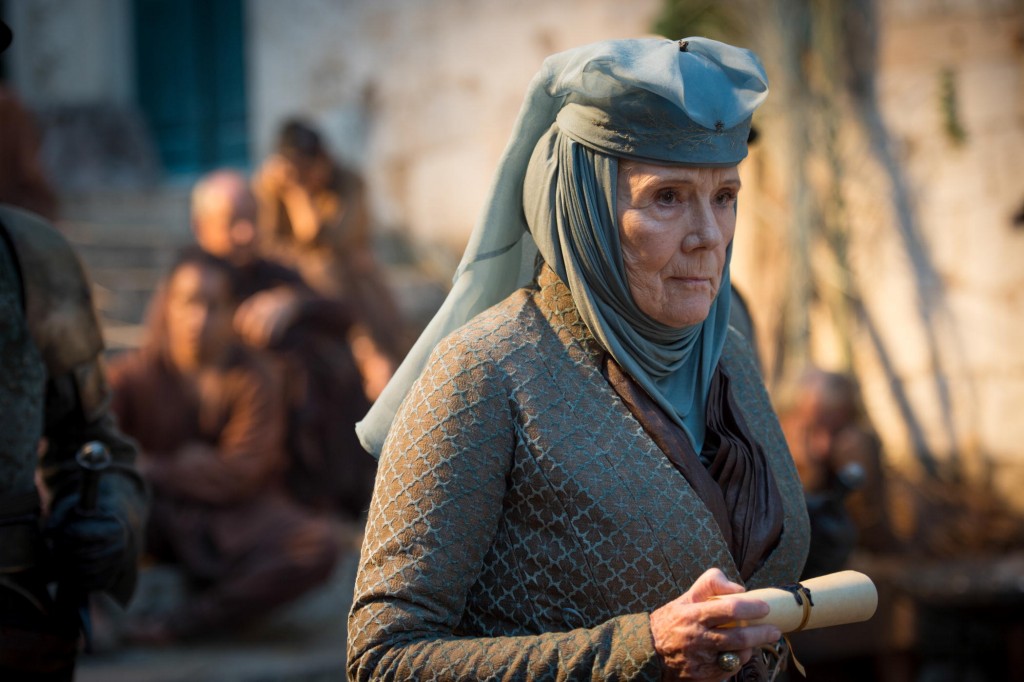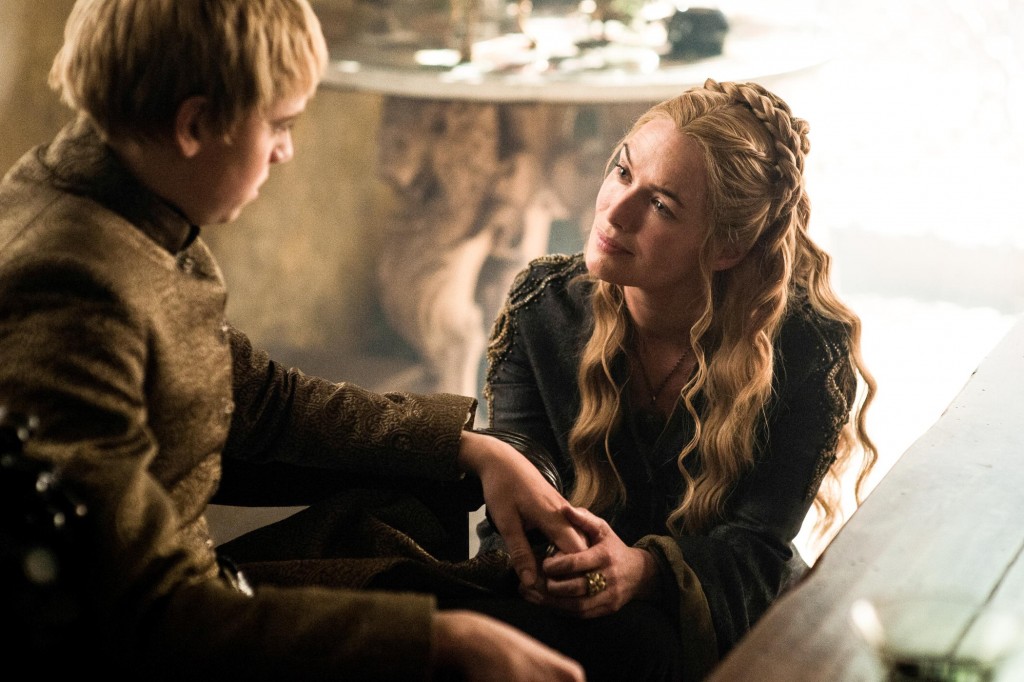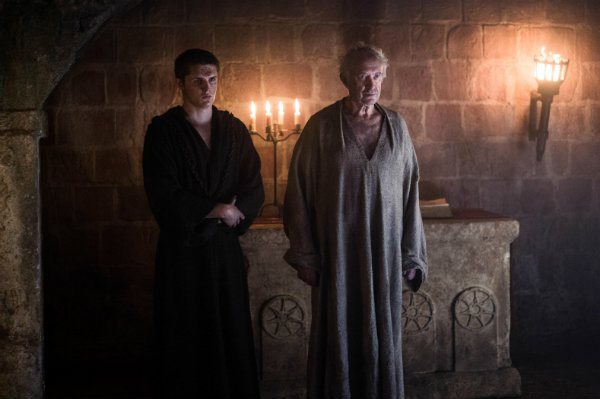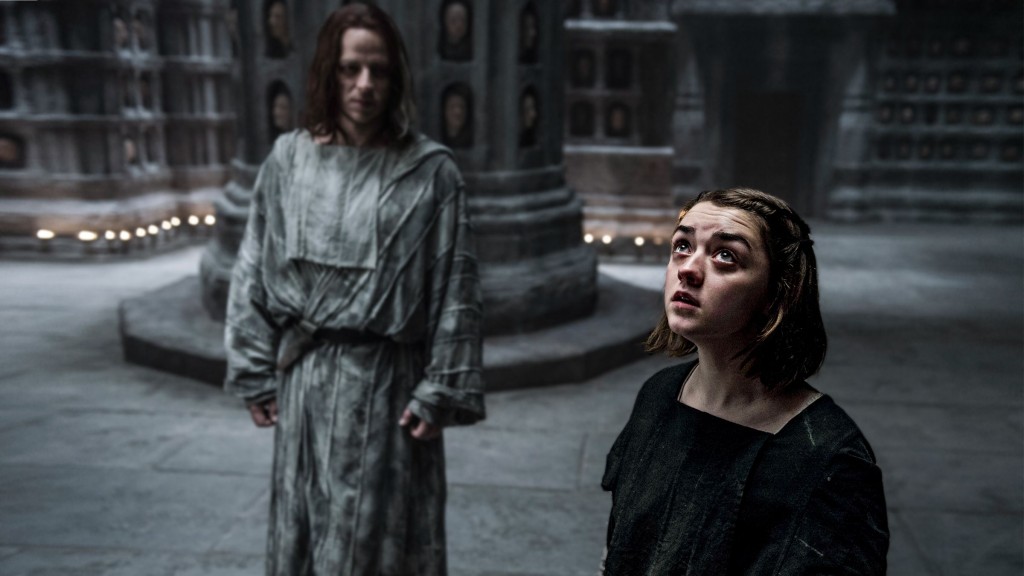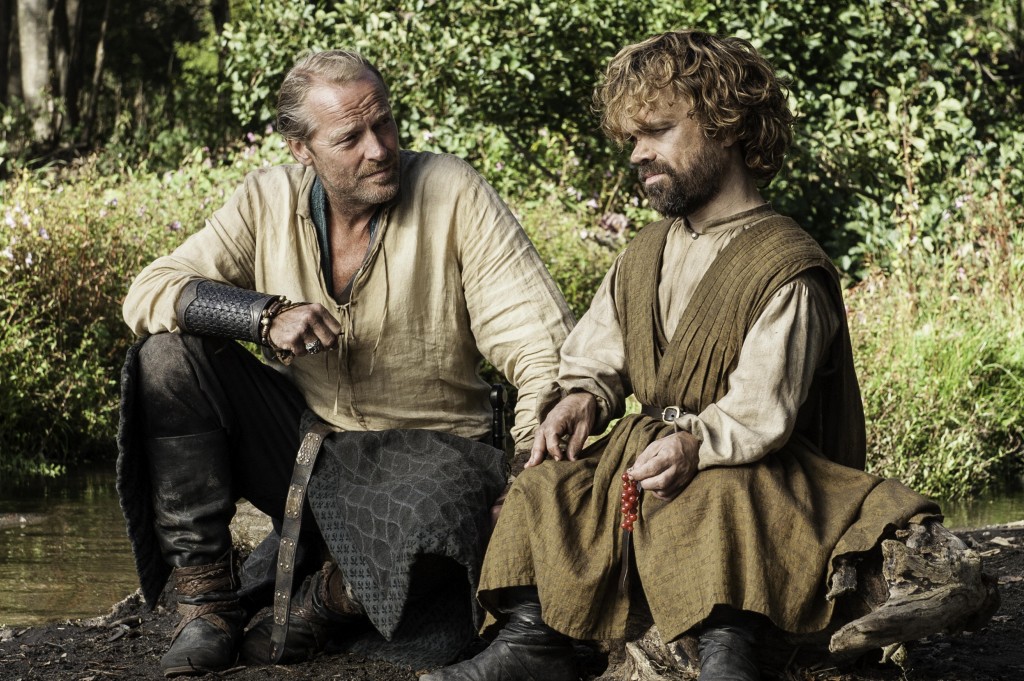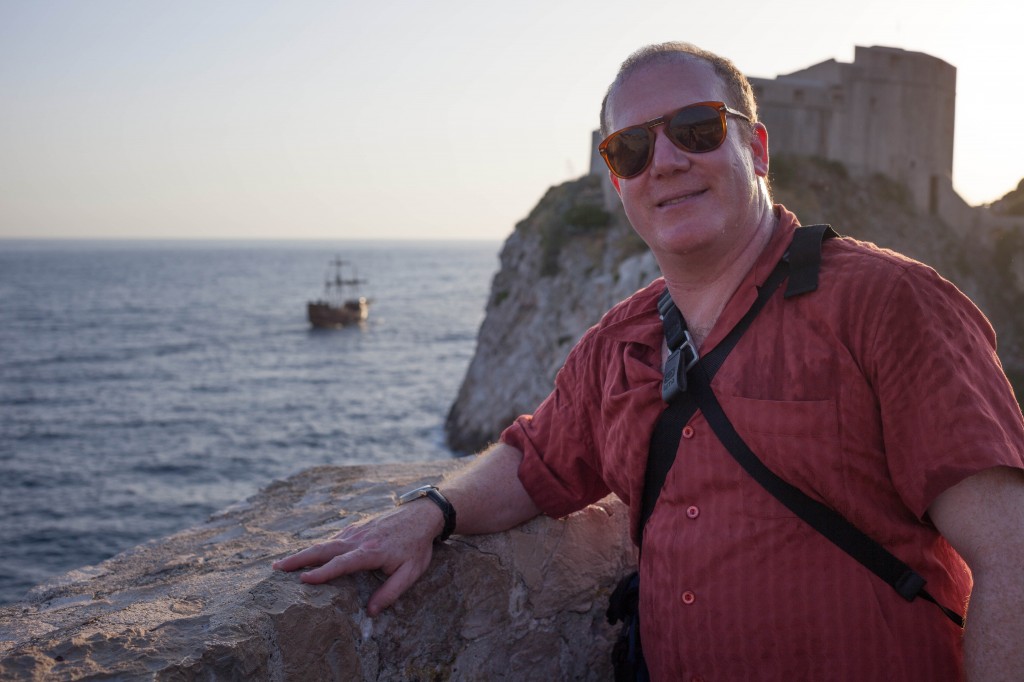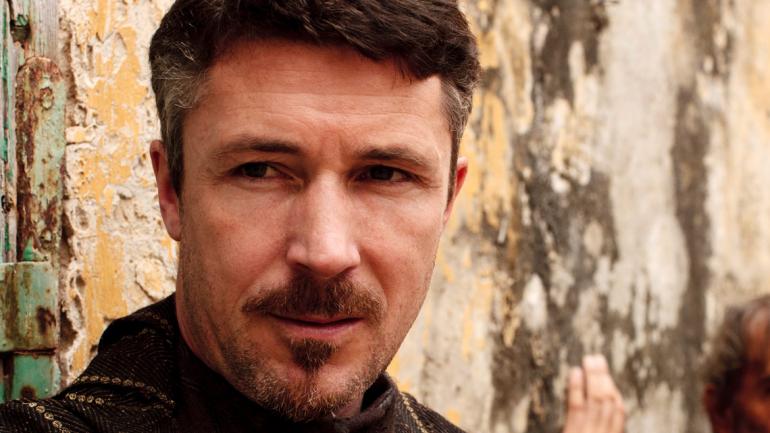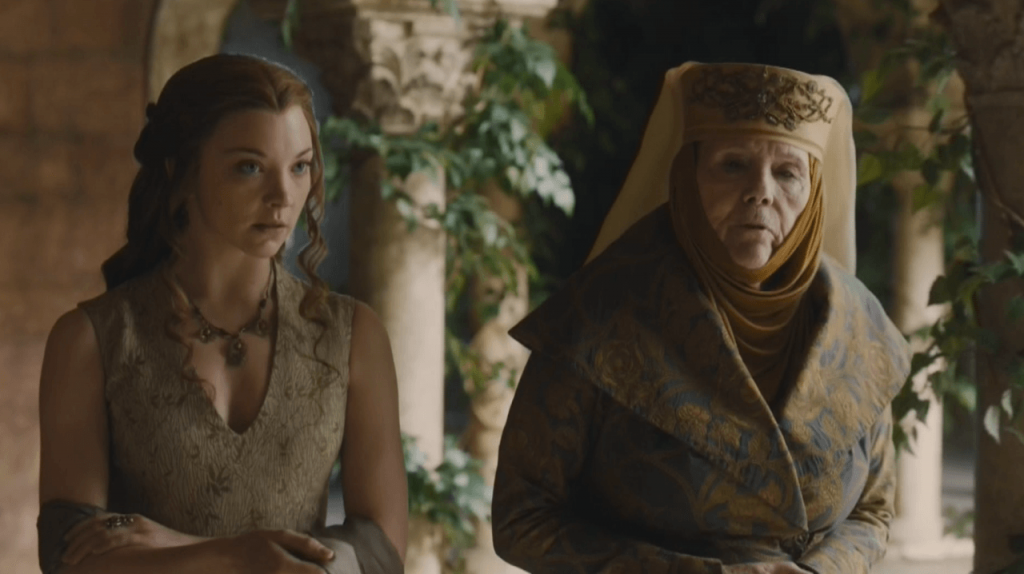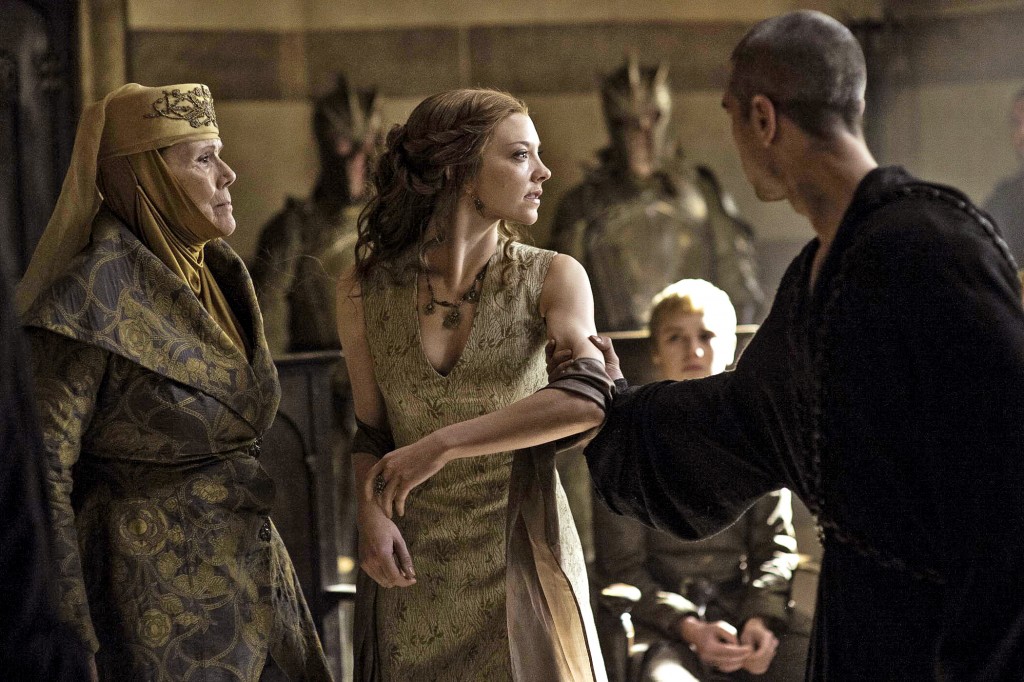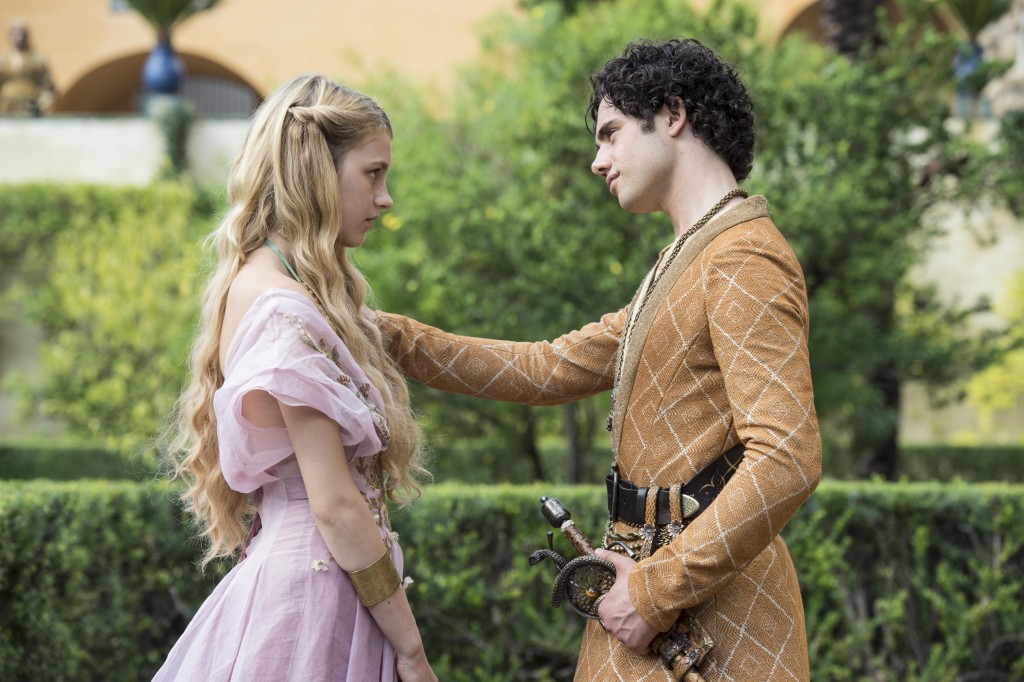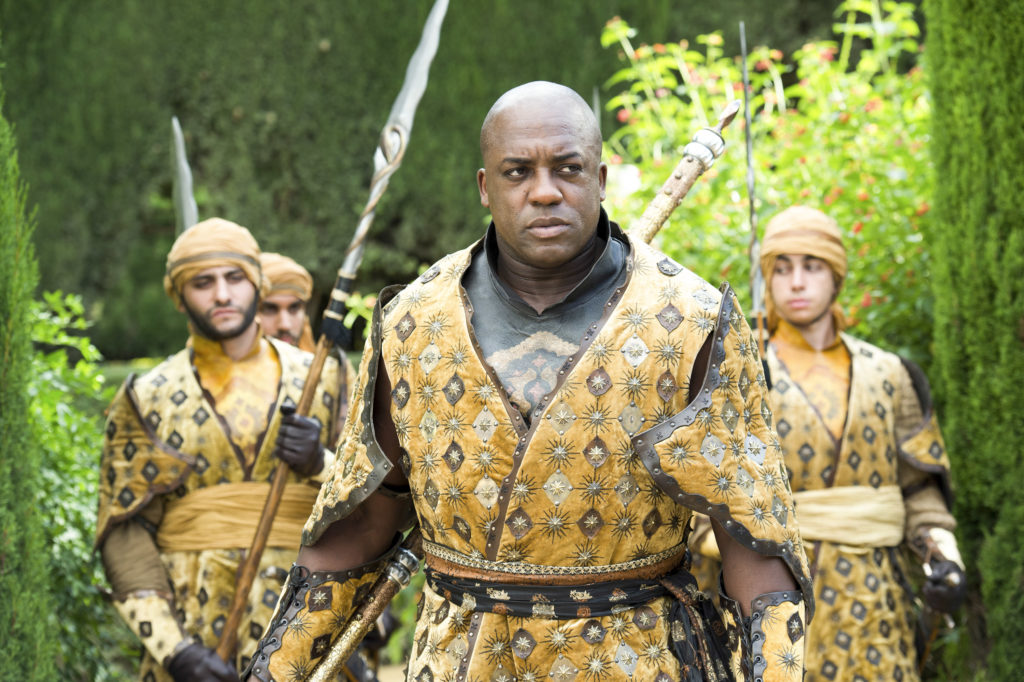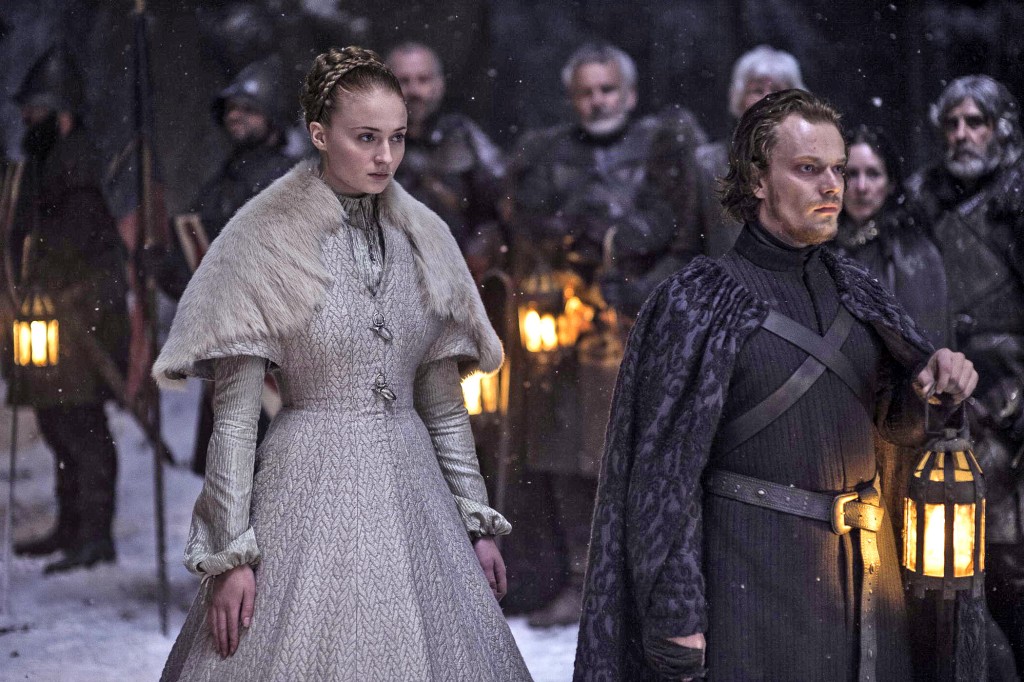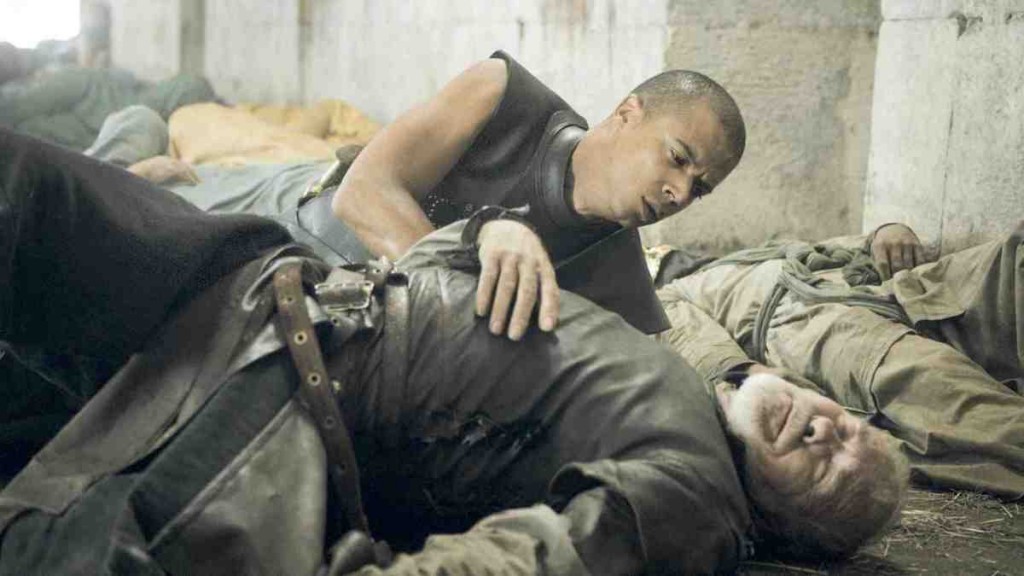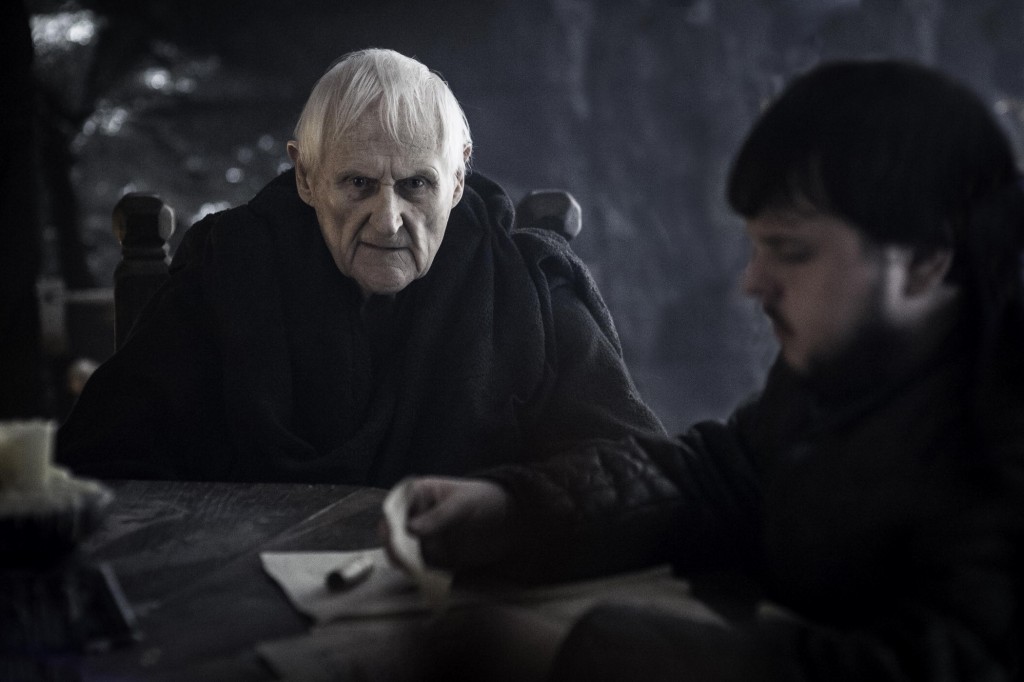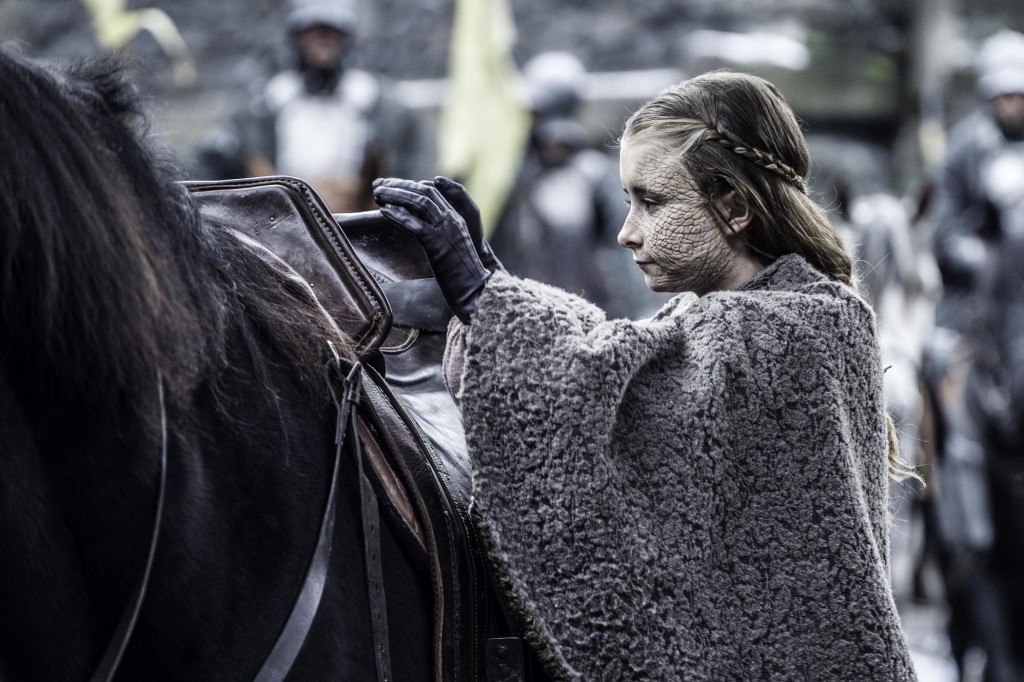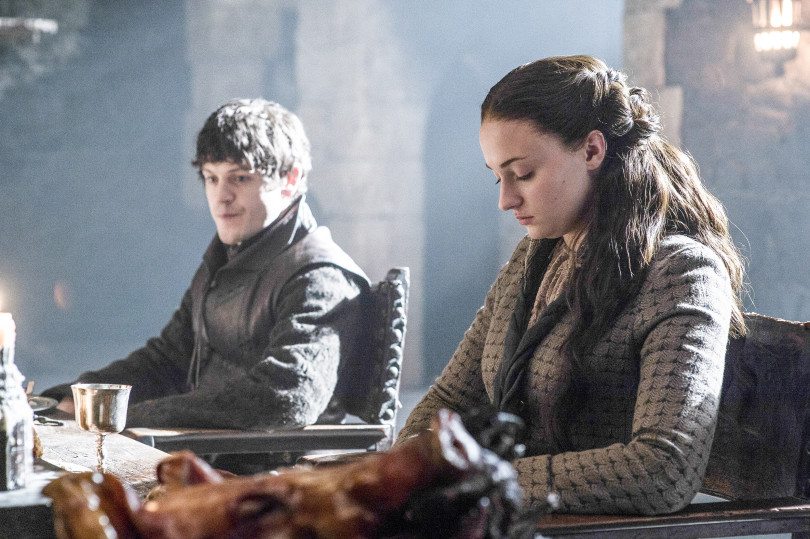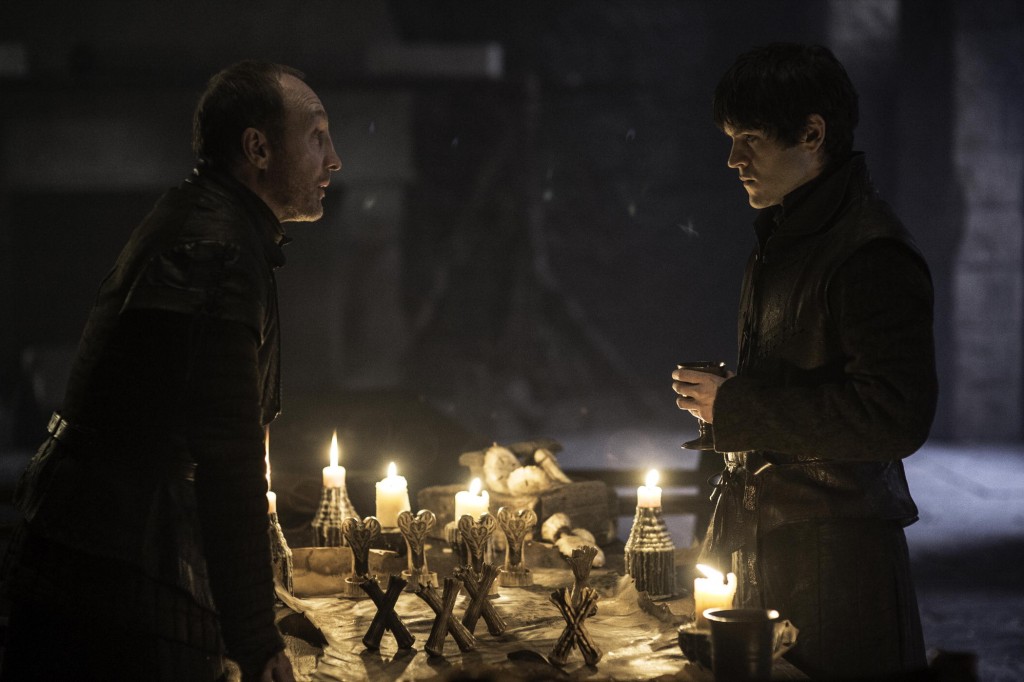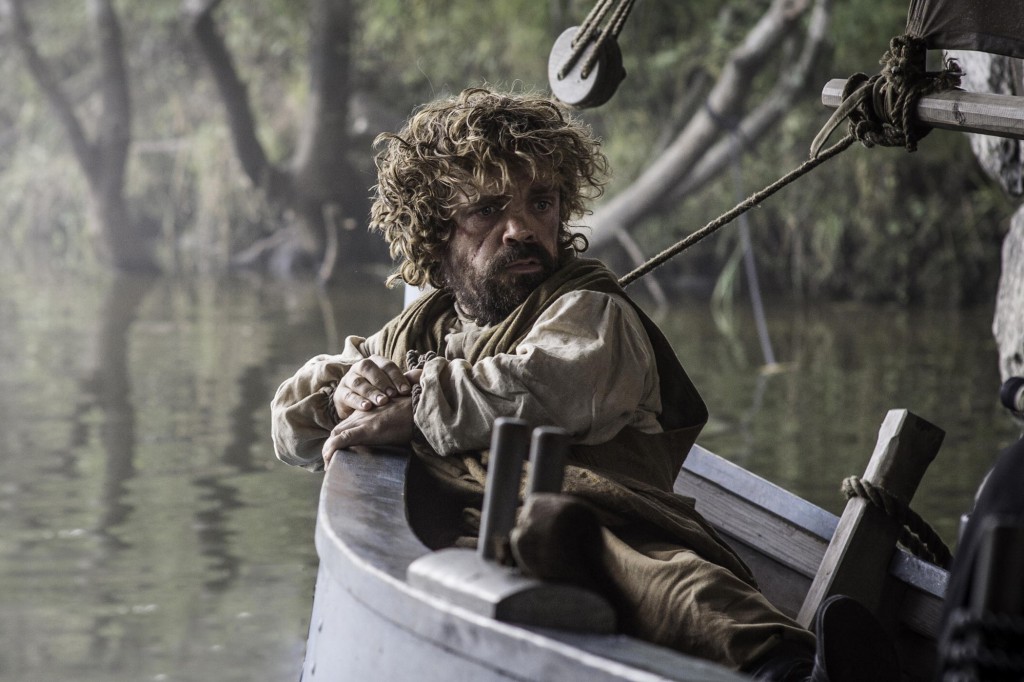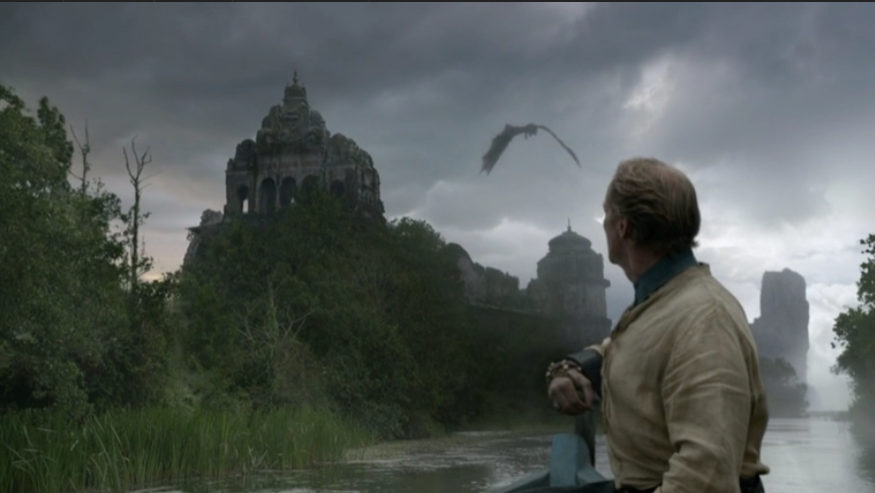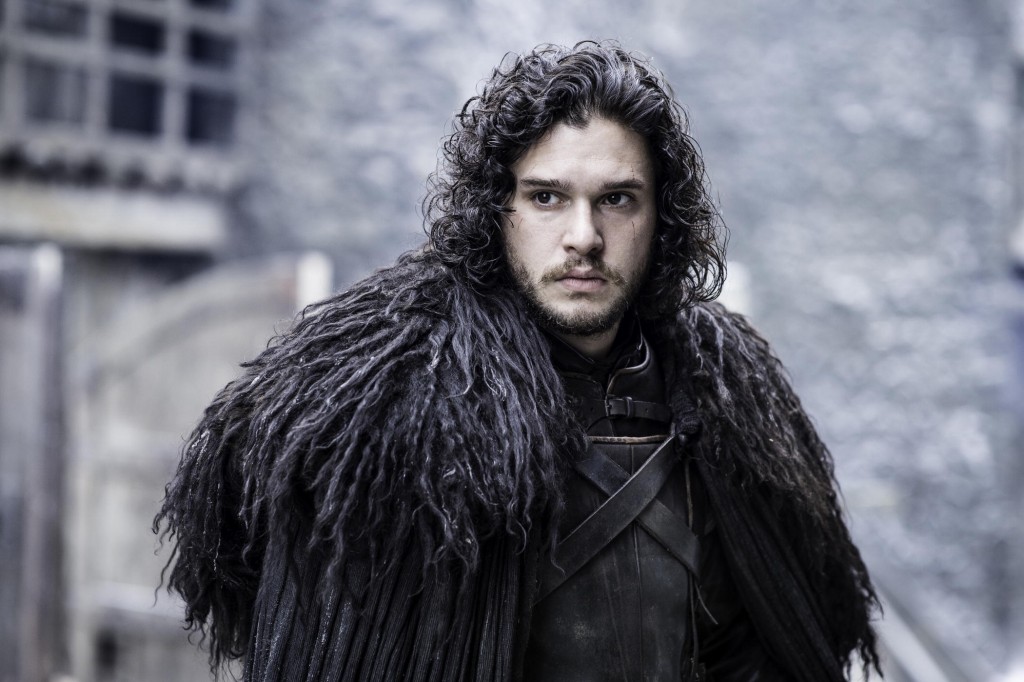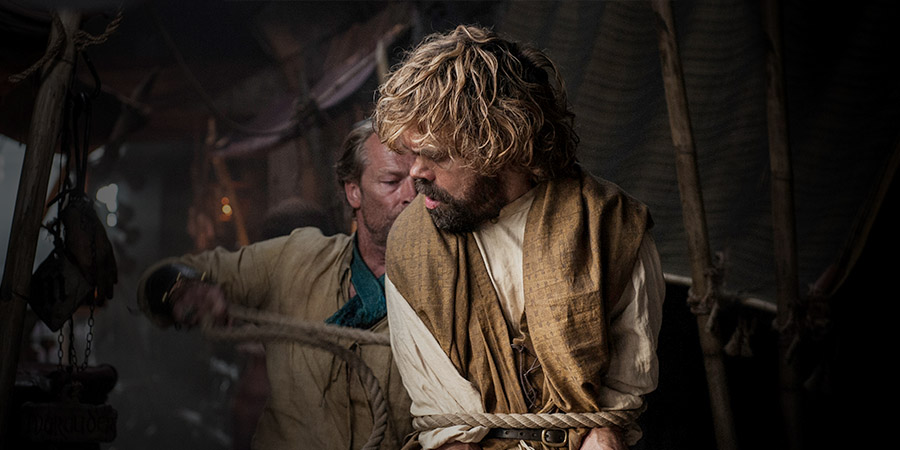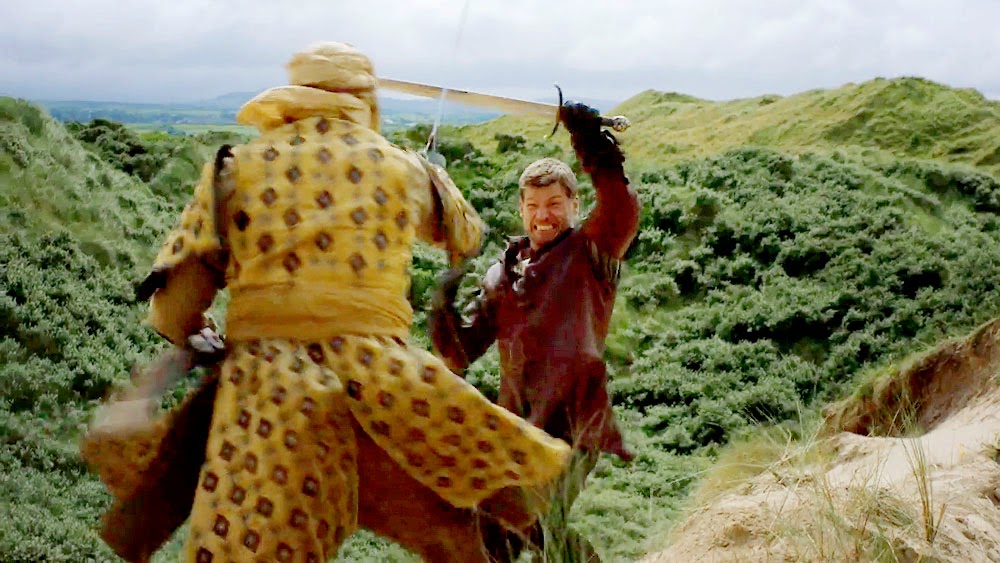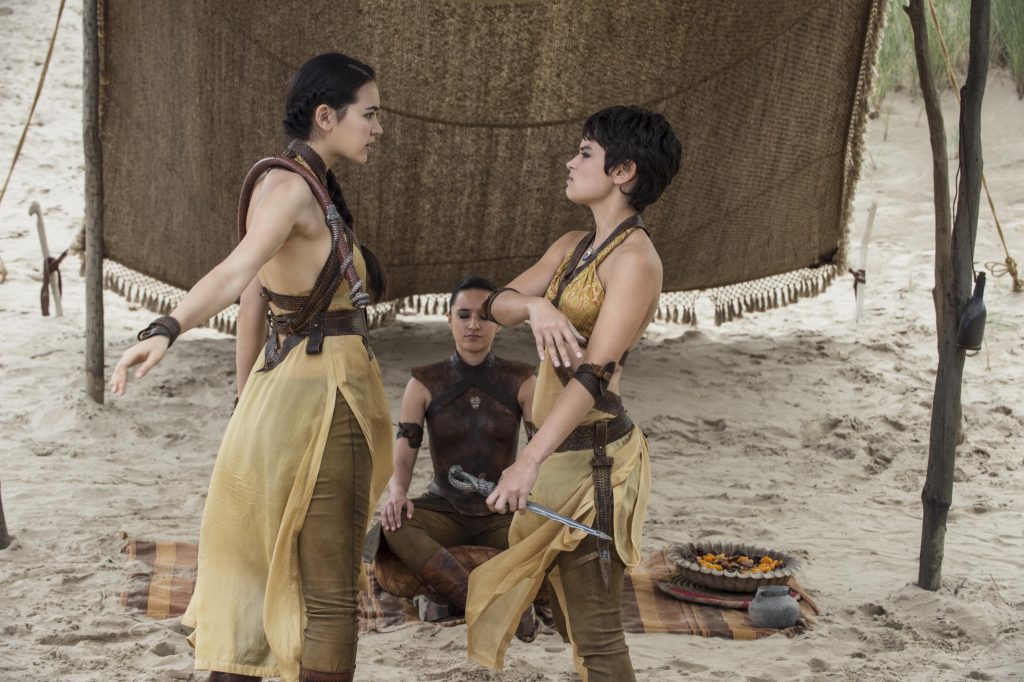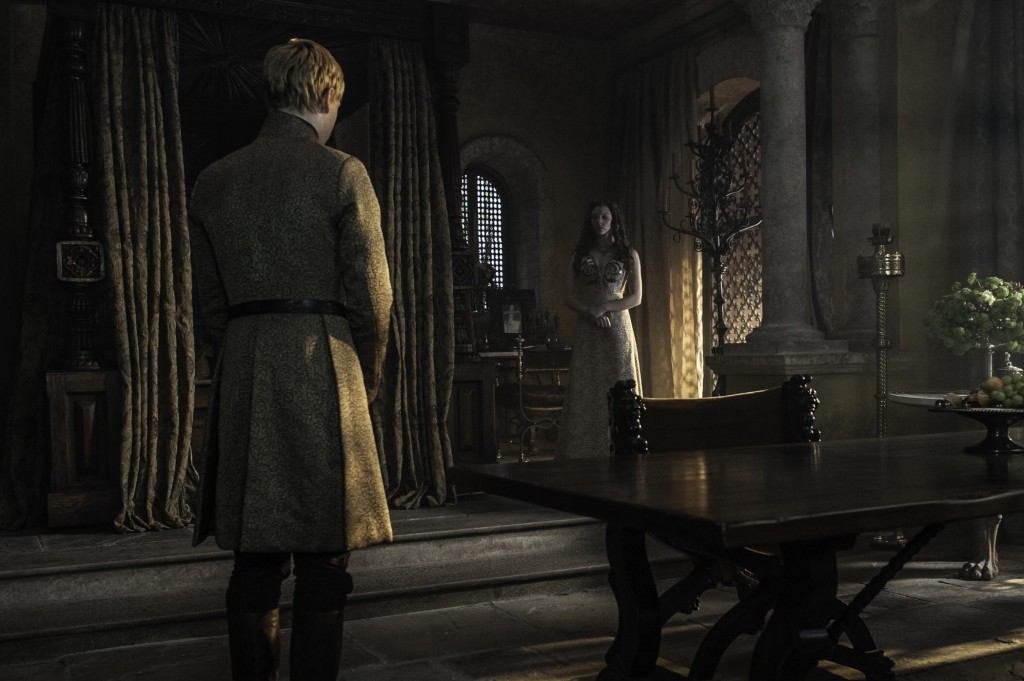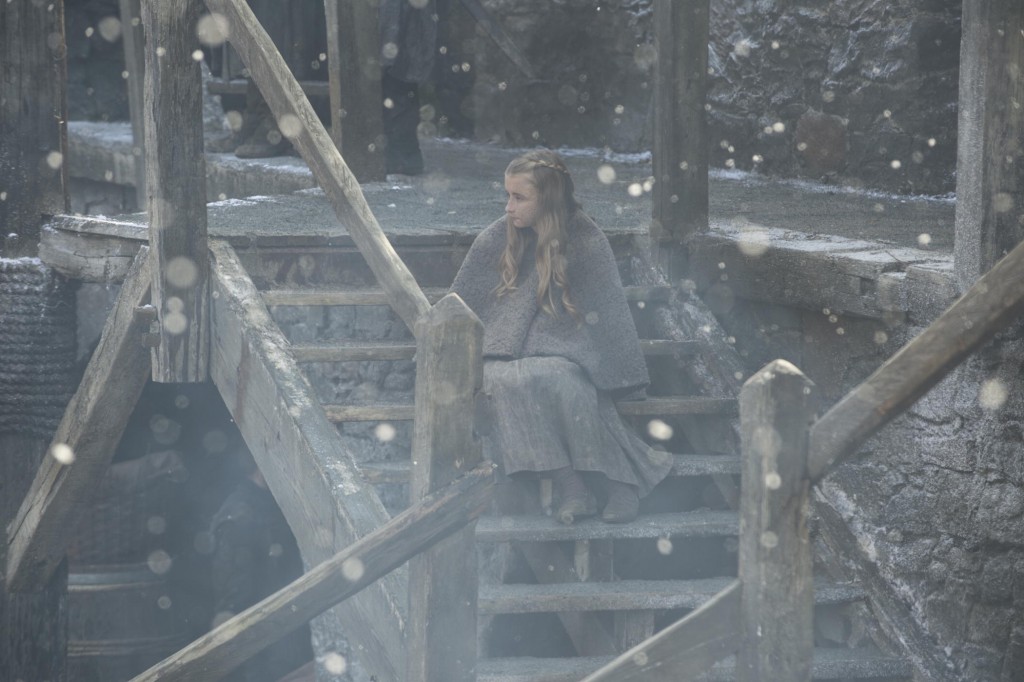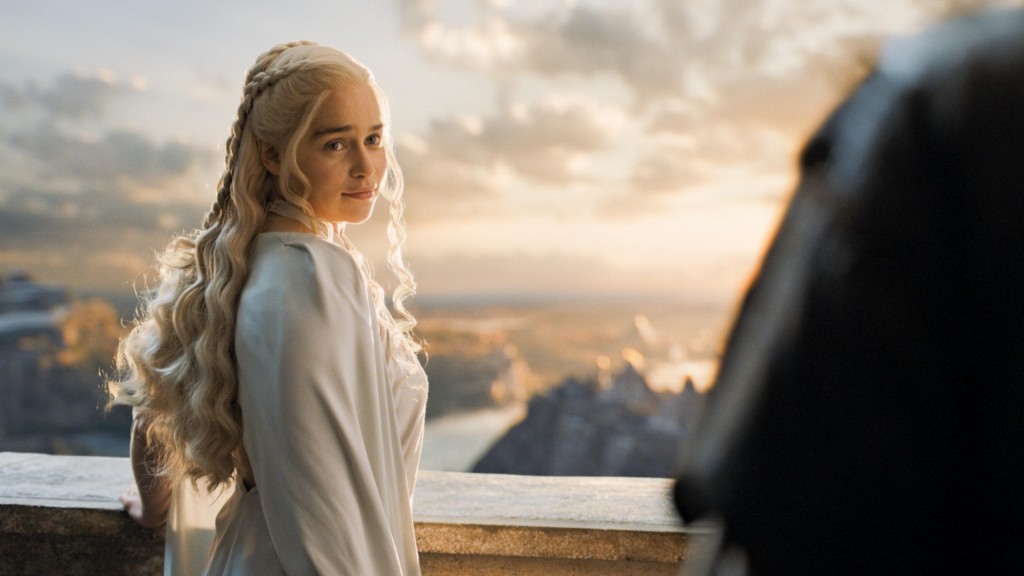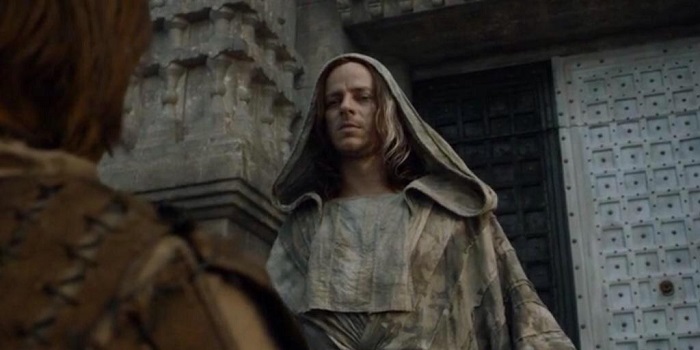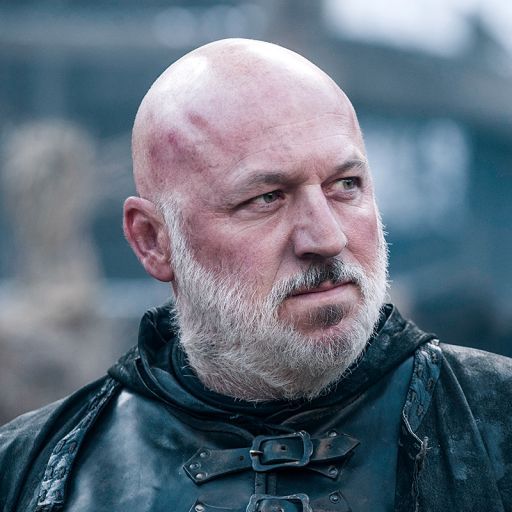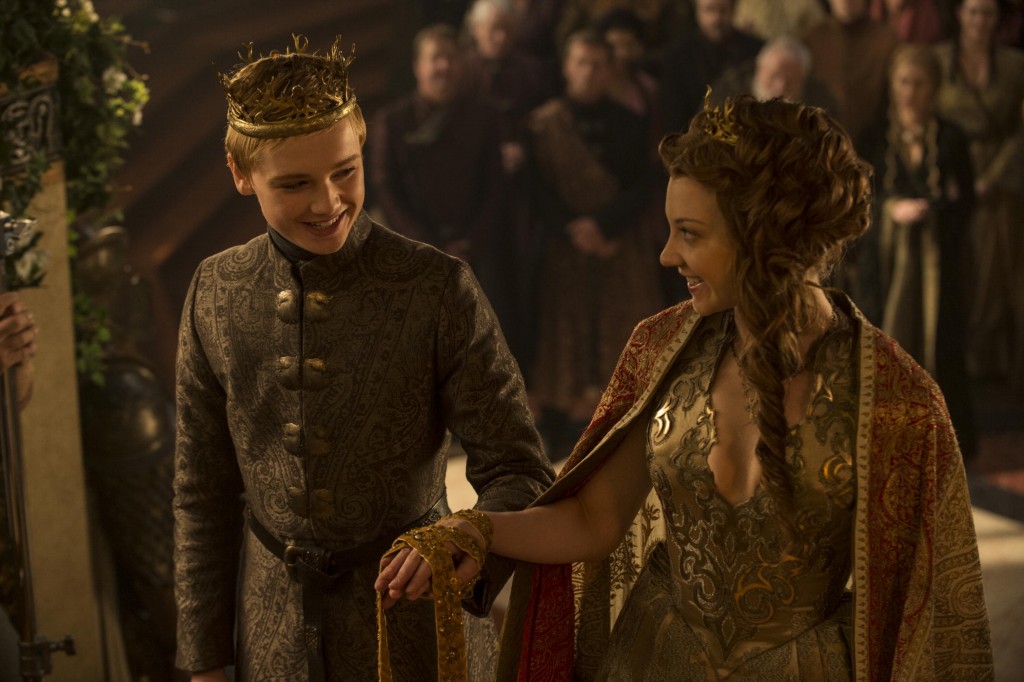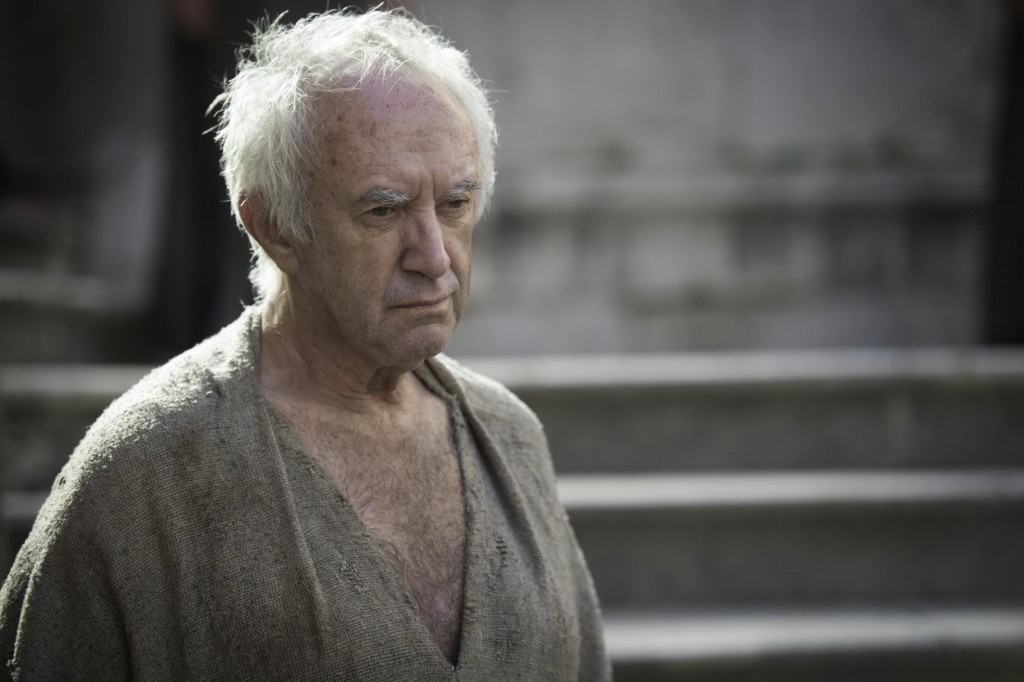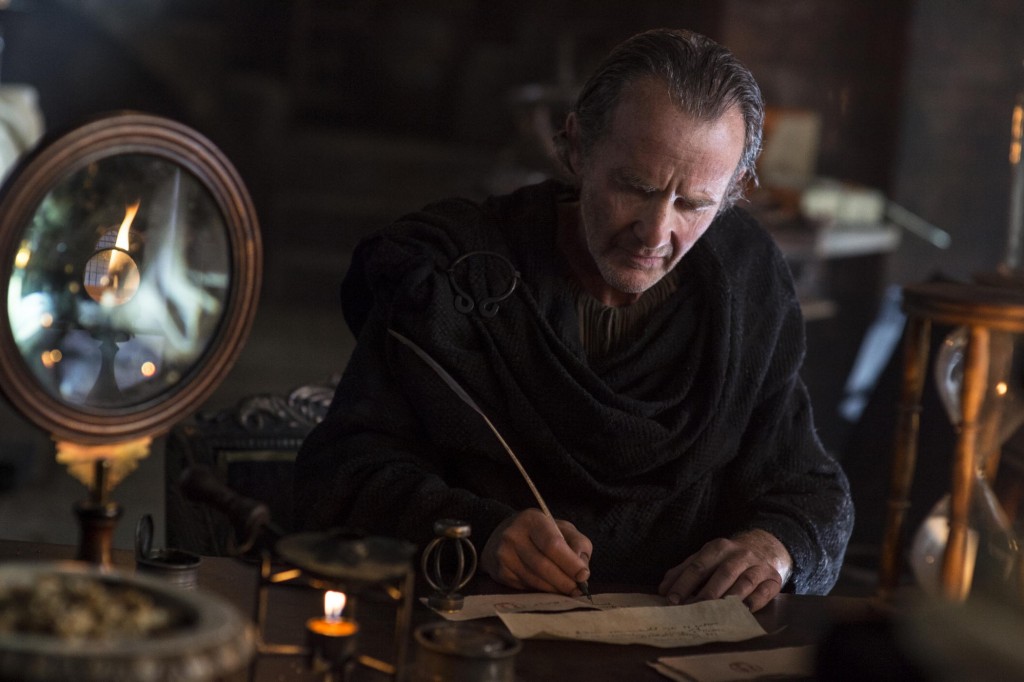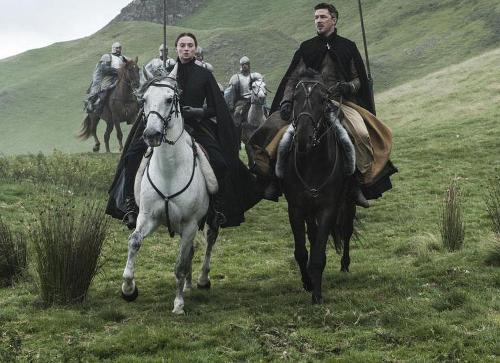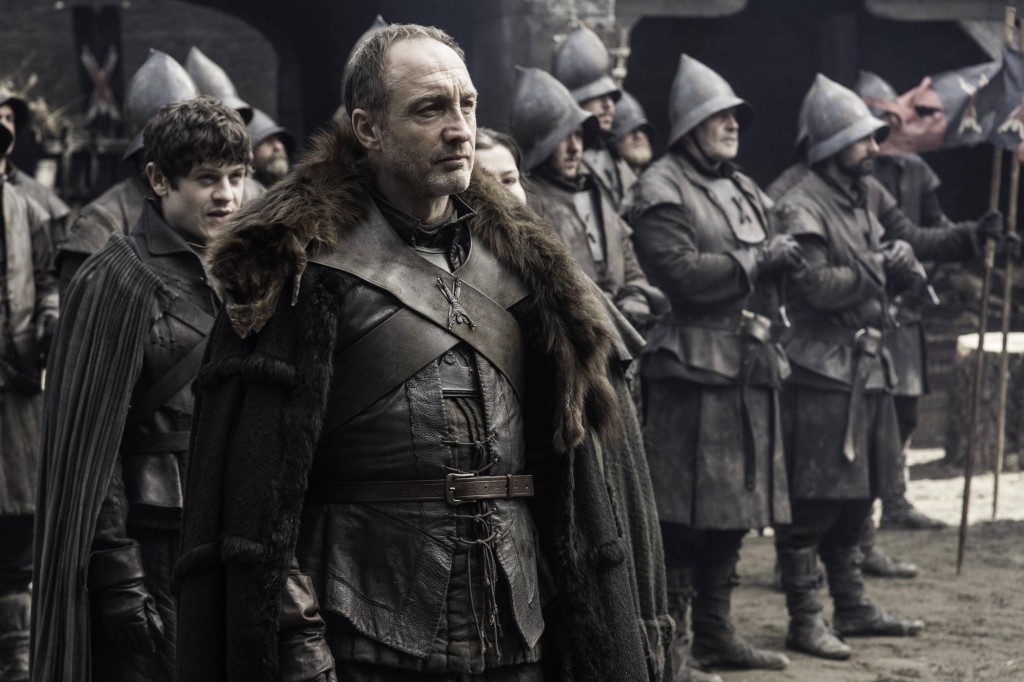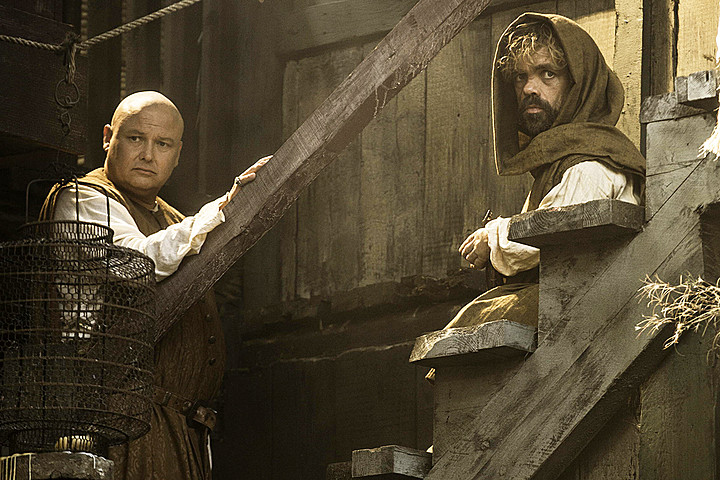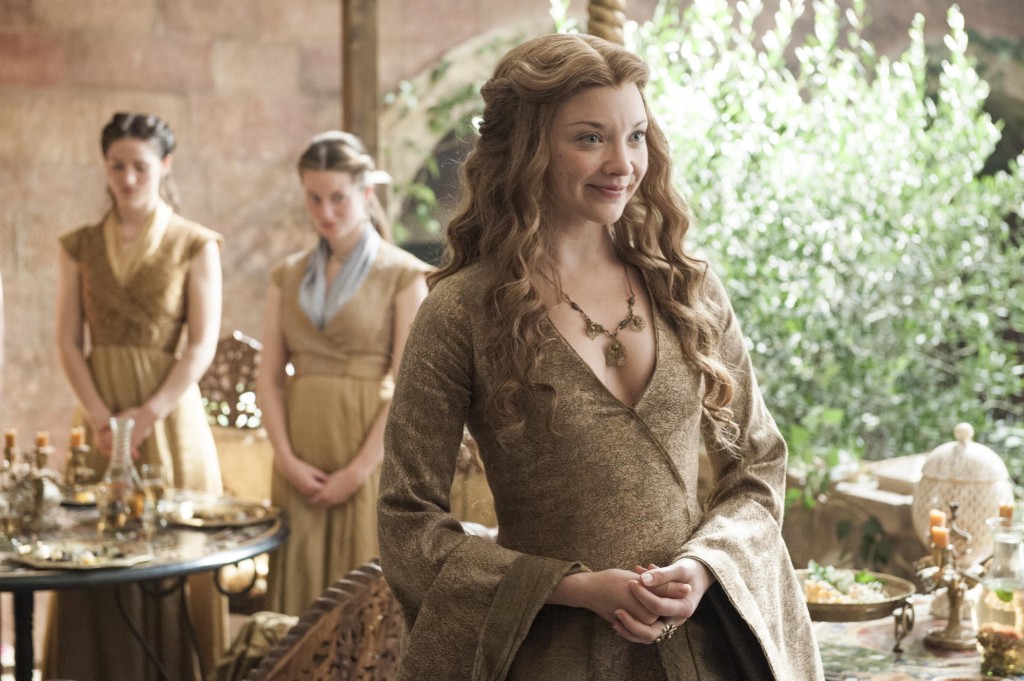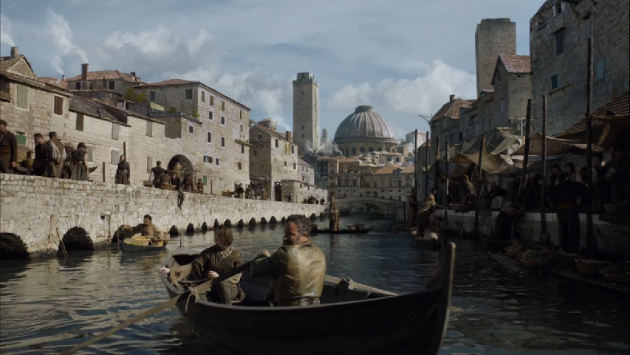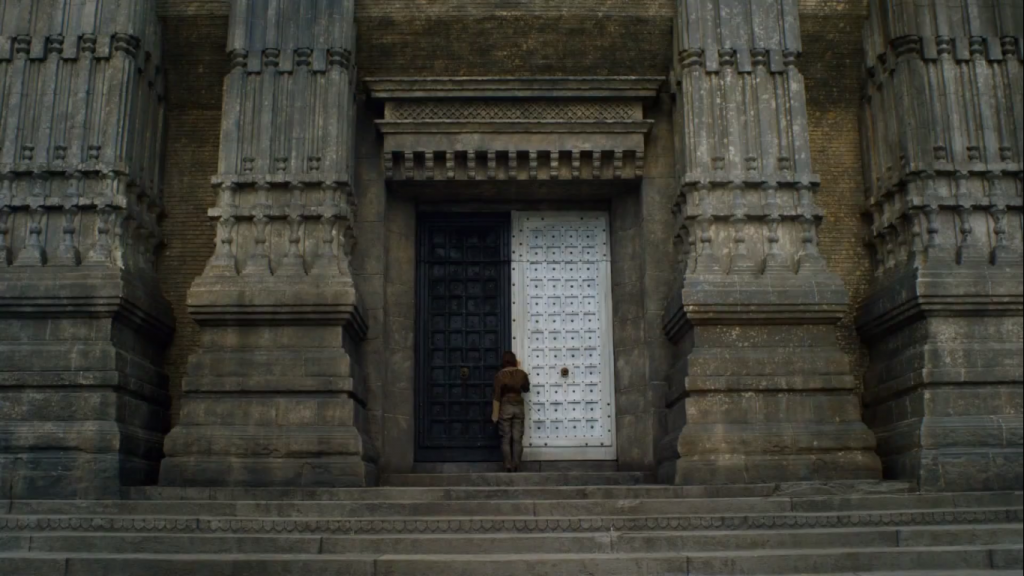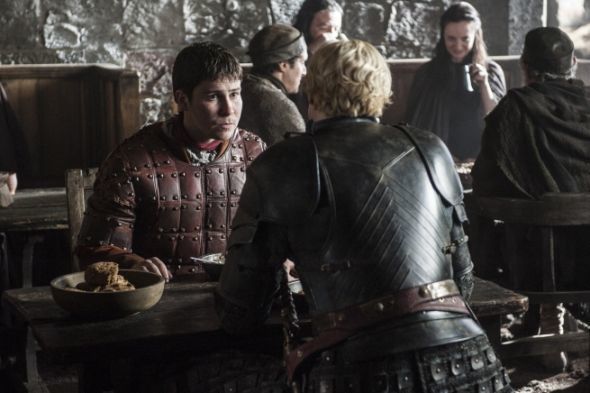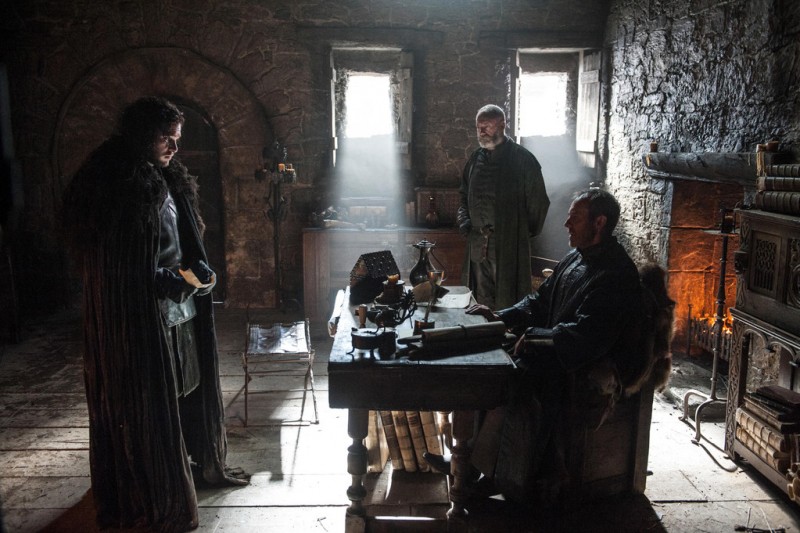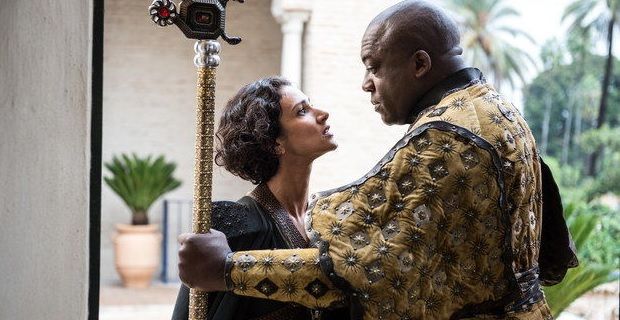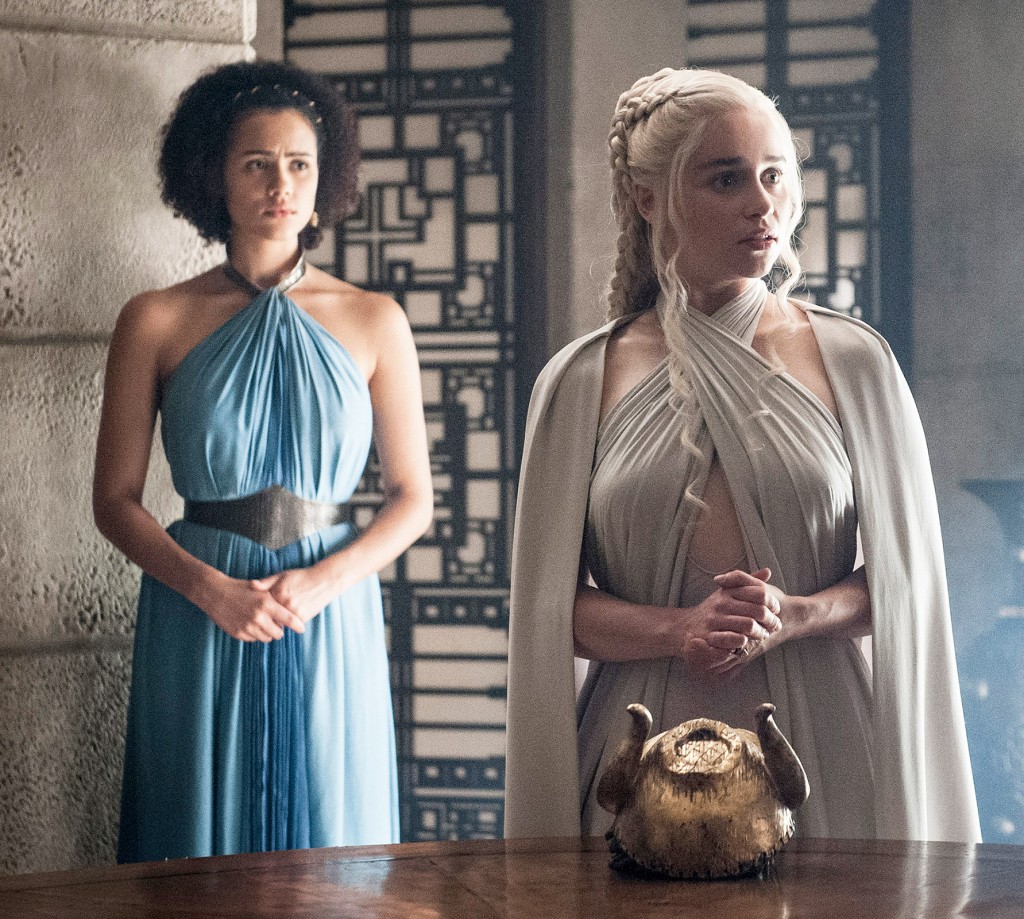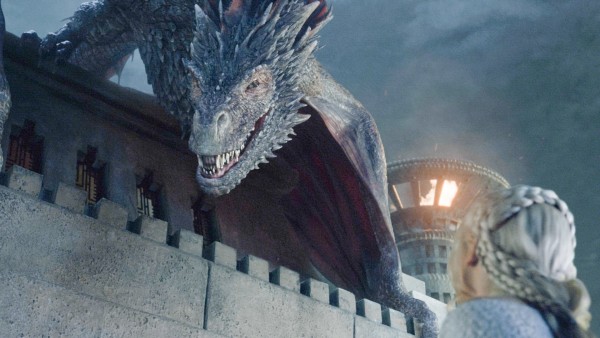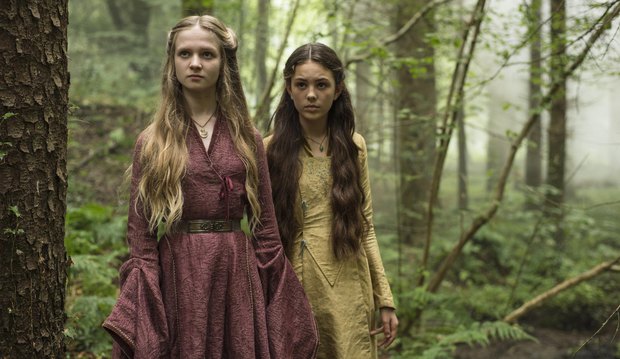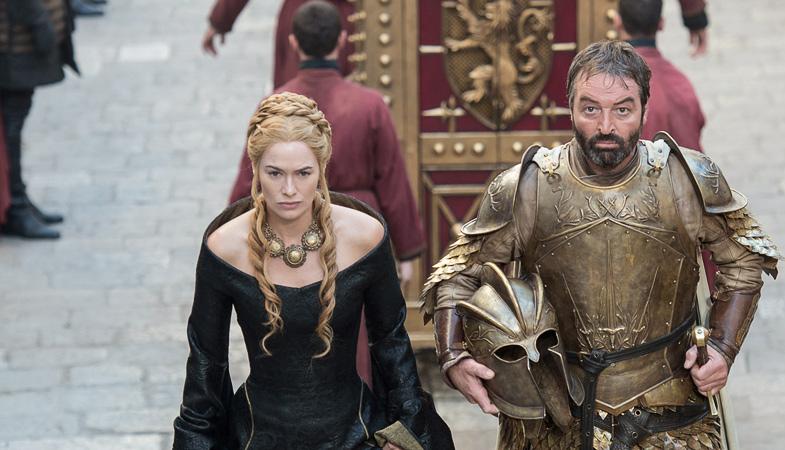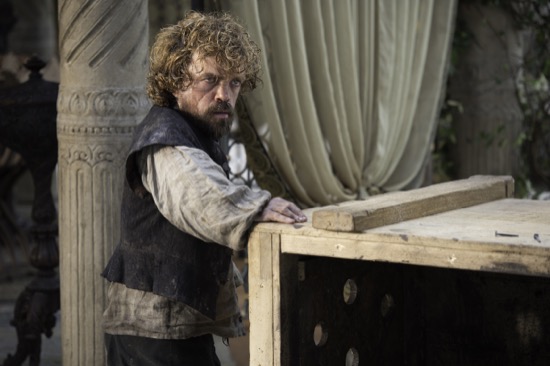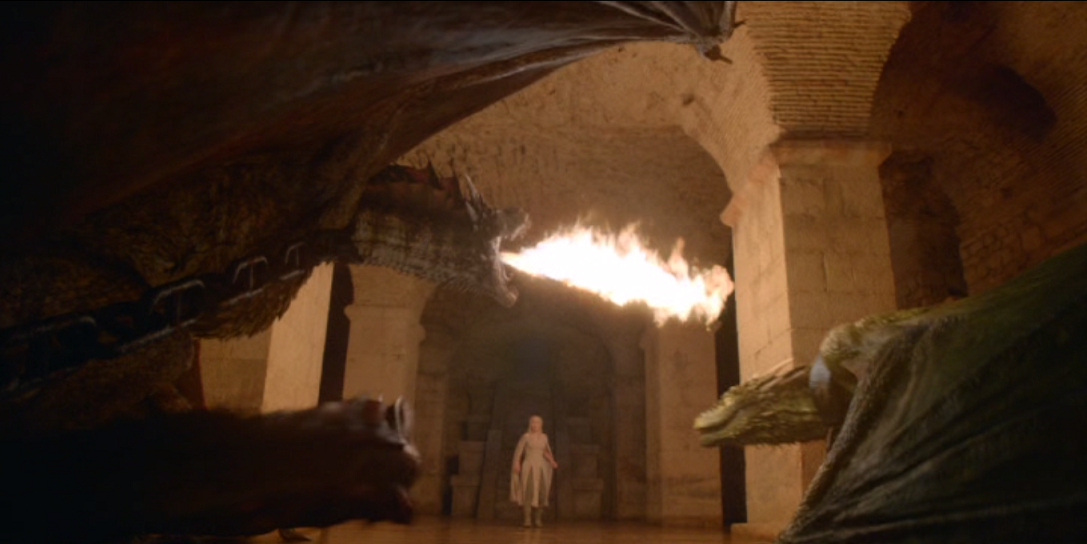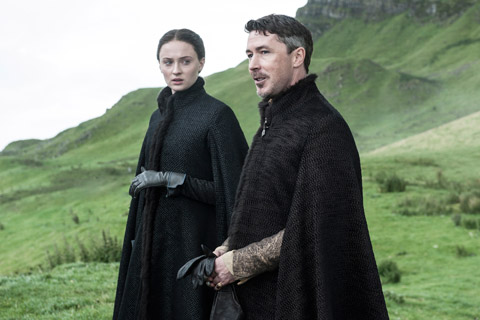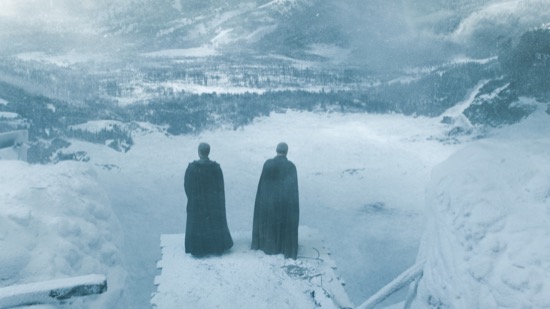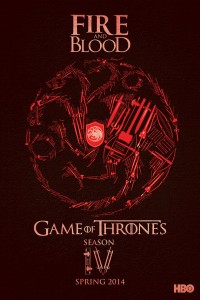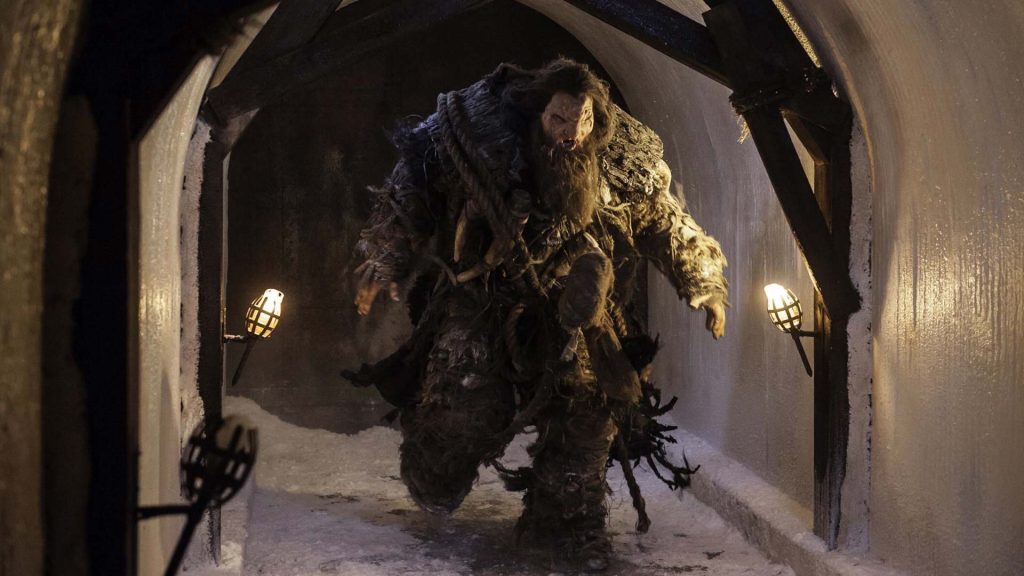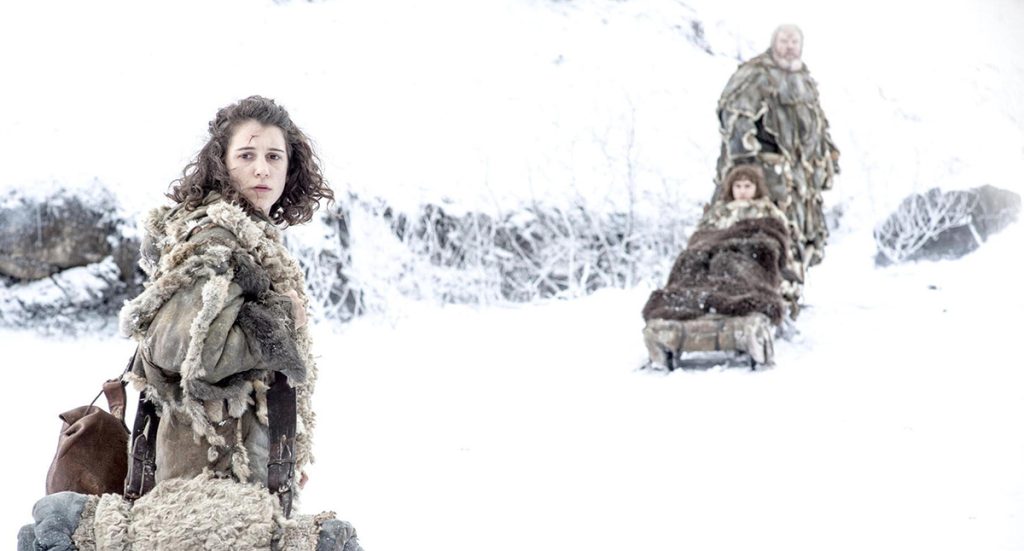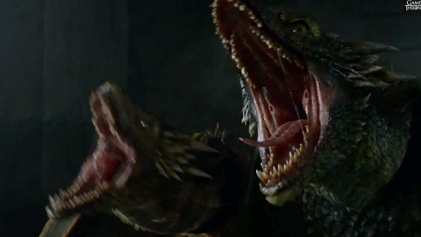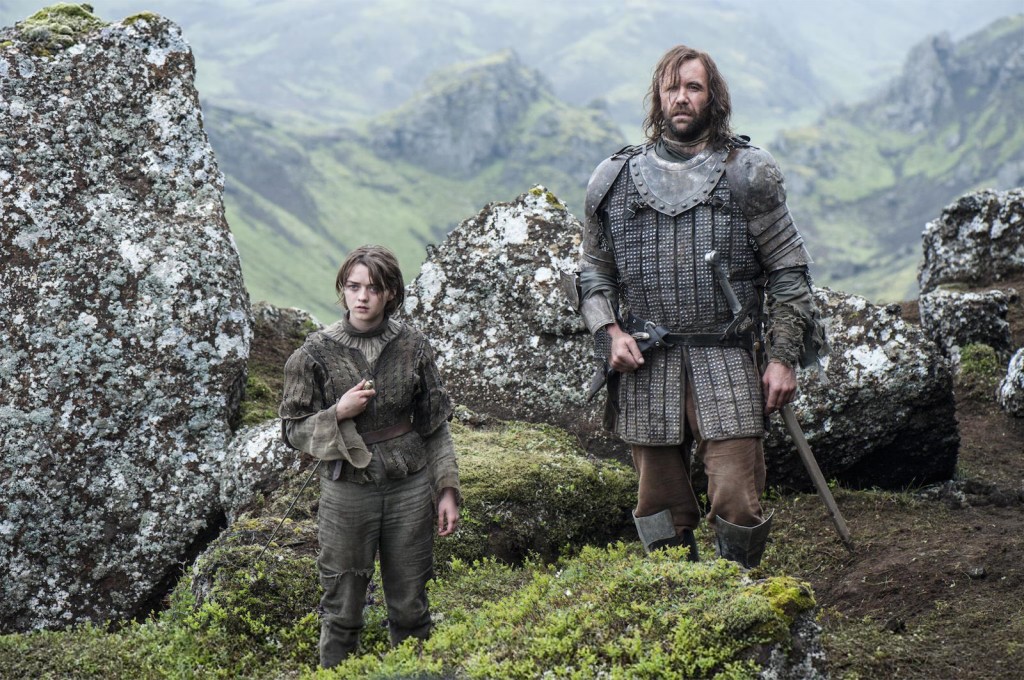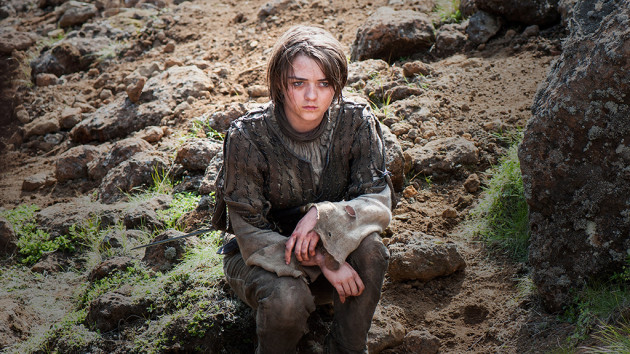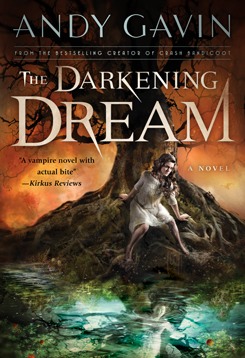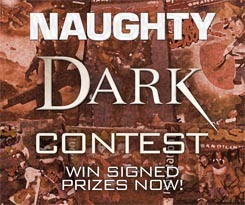I just finished my full binge rewatch of all seven existing seasons of Game of Thrones — in preparation, of course, for the April debut of the final season. I wanted to offer some thoughts on the show as a whole, instead of the detailed episode by episode analysis I usually do. Bear in mind that I’ve watched many of these episodes 6-8 times (particularly the first 2-3 seasons) and read the books 3 times. However, it’s been 3 or 4 years since I did a big watch on the show, maybe a bit more, so it wasn’t too fresh (a good thing). Seasons 6 and 7 I only watched once previously when they were released (with maybe an episode or two watched twice).
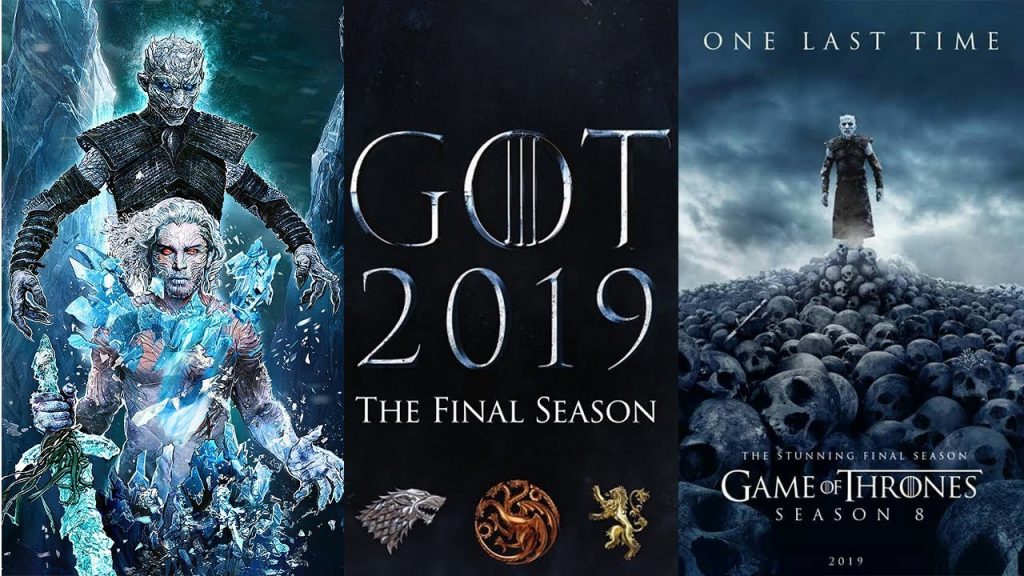
I’ll just make a series of observations based on this watch. It took me about 4 weeks to view all 67 episodes (Feb 13 – Mar 18, 2019). There were a couple big binges in there, particularly season 7 which was all one day.
- It’s hard to say if GOT or Buffy the Vampire Slayer is now my favorite television show of all time. Let’s just call them tied. Clearly GOT is far less dated but 7 full watches later Buffy is still a work of art. The slot just below them goes to Madmen.
- You can really feel the budget ratchet up, particularly starting with season 4. Big events in season 1 and 2, namely the large scale battles, feel skimpy by the standards we have grown accustomed to. For example, Tyrion’s season 1 battle and the Battle of the Whispering Wood and even the season 2 Battle of Blackwater Bay. Large scale (CG) troop action is avoided for cost reasons. In the first few seasons some FX shots look a bit fake whereas they are seamless from season 4 on. An example would be Dany and her dragons at the end of season 1 or her “destruction” of the House of the Undying in season 2.
- GRRM’s general pattern of oscillating the fortunes of each character in a slightly random sinusoidal pattern is more evident (and just as brilliant) when taken in bulk. Take a major character like Tyrion. His fortunes rise, hit setbacks, rise, then fall, then rise, then fall. Each of these individual notes (given the number of characters) combines in an orchestra like effect to form the whole.
- He also really knows how to put characters to the test with really tough choices. They are often really really difficult. From Jaime’s simple choice in episode 1 to be caught with Cersei or push Bran out the window to Theon’s torturous decision as to whether to stay at Winterfell and die vs crawl home a coward. Each major character is confronted again and again with these breaking points.
- As with the books, Season 1 still has the most dramatic and complex narrative. Really A Game of Thrones is a near perfect novel. GRRM’s ability to introduce such a vast range of characters, detailed world, and tell such a complex story is brilliant. Dany’s narrative in S1 / AGOT mirrors the whole season and is perfect rise and fall and rebirth.
- Season 2 and to a slightly lessor extent 3 suffer the most relative to the books. A Clash of Kings and A Storm of Swords are nearly as good as A Game of Thrones and yet much larger. Compressing these two chunks of the narrative into one season each, when it probably needed 2.5-3 total makes season 2 in particular feel rushed. Watching it as a binge it’s less noticeable, but there is a lot of good stuff touched on, but not fully realized.
- If seasons 1-3 are probably slightly inferior to the books, seasons 4-6 generally handle the material from A Feast of Crows and A Dance of Dragons better than the source novels. Both these novels suffer from terrible editing of the different narrative streams and the addition of useless and boring POV characters like Damphair and the forgotten extra heirs (2 sets?) who travel to Dany and get torched. Yes, the show’s Dorne narrative is weak, but at least it’s pretty short and gives Jaime and Bronn some banter.
- Season 7 was better on this rewatch and felt a bit less rushed.
- Still there were some stupid decisions like the whole idiot plan to grab a live wight (losing the dragon).
- Also the narrative attempt to “fool” us with regard to Sansa and Arya’s relationship felt forced and an unusual distortion of the usually straightforward (show) POV.
- The season is nearly one continuous set of character reunions / dramatic first meetings (heroes and villains alike). But they nearly all work — even the “band of brothers” north of the wall.
- The binge watching helps to smooth over the uneven episode presence of different characters. For example, Dany often disappears for an episode or two, particularly in season 2 or 3. Watched week to week this is very noticeable but all together not a big deal.
- GOT has a tremendous number of characters and we can break them into a few tiers: A level (book POV characters like Dany, Jon, Tyrion, Arya, Sansa, Ned, Theon, Cersei, Davos, Jamie etc), B level (extremely important non POV characters like the Hound, Drogo, Littlefinger, Varys, Jorah, Ygritte, Tywin, the Red Lady), C level (memorable minor characters like Ser Roderick, Jaqen H’ghar, Gendry, the Sand Snakes, etc), and D level bit players. The books have vastly more C and D level characters. The show generally merges and minimizes many of the D level characters and promotes nearly everyone in the C and B level upward.
- Even the A characters have their narratives smoothed out. Due to a combination of Martin’s heavy POV style and his terrible breakdown for books 4 and 5 (discussed a bit here) the “pacing” of the individual character narratives is much better in the show. A perfect example would be Theon. He’s more or less always present in the show, even if his role in the first half of season 1 is minor. In the books, after his capture by Ramsay, he just vanishes for several books, then reappears in a narrative trick much later. The reconstruction of the Reek narrative over seasons 3 and 4 bridges this and keeps him relevant.
- B level characters of high importance like the Hound, Littlefinger, Varys, Jorah, Bronn etc get a huge promotion and much more development than in the books where the gap between POV and not POV is tremendous. A role for them is often found in parts of the story where Martin left them out.
- The ability of actors to add depth even during short performances (for example, Syrio Forel — but there are many others) breaths life into some of the C level characters. Others are are merged or given more involved stories like Gendry.
- Some of the irrelevant D level characters like those in the one off POV prologues lose out — but this is a wise choice.
- Occasional weird recasting:
- The Mountain (3 actors!) is poorly handled (in season 2). Actors 1 and 3 are more or less interchangeable, but the decision to go with a tall skinny guy for season 2 sucks and would almost certainly make novice viewers not even realize this incarnation of the character is the same person.
- The Dario recasting is odd too, although I like the second Dario better.
- Bran ages the most poorly of all the characters. He just looks (and once he’s the raven) acts so different. I know this later is on purpose, but you do feel like you’ve lost him.
- It’s amazing how much emotional impact some characters that have very little overall time in the narrative have, for example Ned, Robert, Oberyn, and even Viserys.
- Because I watch a TON of British period television, I constantly notice how GOT uses nearly every common BBC actor. Even minor little ones. And of course the batch overlap with certain shows like Rome (Mance, Ellaria Sand, Tobias Menzies), Skins (Gendry, Gilly), Iron Fist (Loras, Nym) and I’m sure more.
- There are a couple of oddball castings/performances:
- Mace Tyrell is so broad and comic
- The Sand Snakes are so lame, particularly Obara. And I love Jessica Henwick in the Iron Fist — but she’s lame here. Speaking of, early (more swishy) Loras and Danny Rand are barely recognizable as the same actor.
- The “sexposition” ratchets down after the first few seasons, although there is still some tendency to throw in gratuitous nudity even in later seasons. By gratuitous, I’m not talking about the love scenes, but for example, in the Season 6, the theatrical troupe is half naked back stage (and a bit on stage). Not that I mind, but in a mixed gender setting this would never happen in the middle ages — East or West. Perhaps among slaves in the ancient world.
- Because Croatia (namely Dubrovnik and Split and environs) feature so prominently as filming locations, all/most of the cities have a seaside that looks a bit Adriatic. Or Irish (like in the case of Pyke). Or Spanish (Dragonstone, Dorne). This leads Kings Landing, Bravos, and Meereen to have some considerable overlap in visual style, particularly with the coastal view, general terrain, and grey stone streets. If they had shot Meereen in the middle east or something this could have been avoided, but the show has a lot of filming locations as it is.
- GOT borrows liberally from all across history. A bit of history’s great hits. George R. R. Martin does it in the books and the show does it even more (as it continues the trend on a visual and stylistic level). The series is rife with out of time historical borrows/allusions. Below are a few ancient references repurposed into this largely medieval setting:
- Arya’s presenting Frey with the pie containing his sons’ is reminiscent of Herodotus describing the Persian king Cambyses as serving his enemies their dead children.
- The Titan of Bravos is borrowed from the Colossus of Rhodes.
- The architectural style of Old Town’s Citadel is copied directly from the Lighthouse of Alexandria (a second wonder of the Ancient World).
- As many of the scenes were filmed in the Palace of Diocletian, they have a Roman feel. As does the Dragonpit which is obviously old Roman construction because of the telltale Roman brickwork (looking it up, it’s a Roman amphitheater in Seville).
- Slavers bay feels vaguely Babylonian — the harpies subbing in for winged bulls and the like.
- The Dothraki are of course an amalgamation of steppe people like the Mongols and Huns. There have been steppe cavarly armies sense early antiquity and they posed a constant threat to city people until the invention of small (gunpowder) arms. At least one of the Dothraki “flavor” conversations is borrowed from Gibbon’s description of statements allegedly made by Atilla.
| If you liked this post, follow me at:
My novels: The Darkening Dream and Untimed or all my Game of Thrones posts or episode reviews: Season 1: [1, 2, 3, 4, 5, 6, 7, 8, 9, 10] Season 2: [11, 12, 13, 14, 15, 16, 17, 18, 19, 20] Season 3: [21, 22, 23, 24, 25, 26, 27, 28, 29, 30] Season 4: [31, 32, 33, 34, 35, 36, 37, 38, 39, 40] |

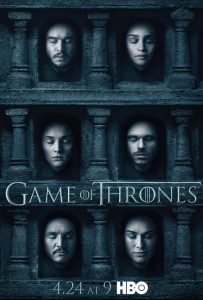 Show:
Show: 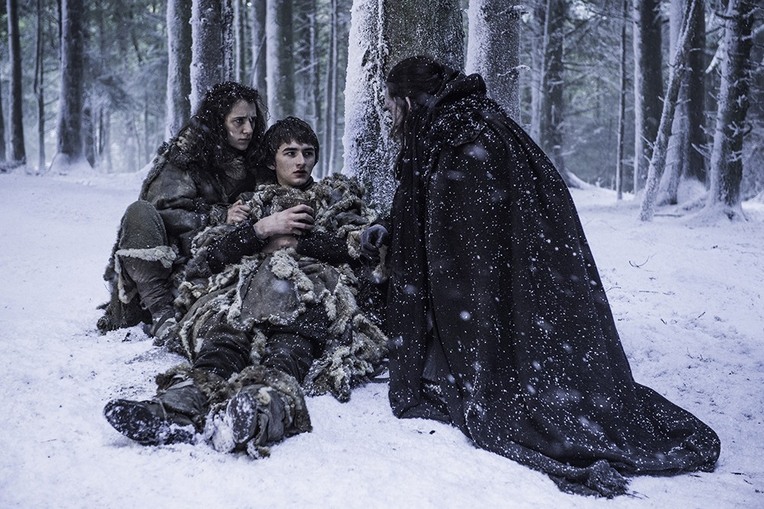
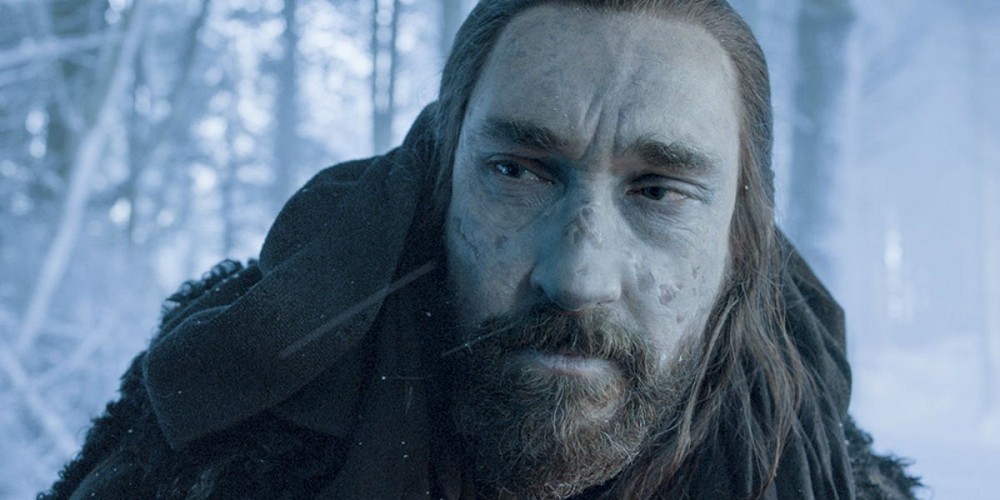
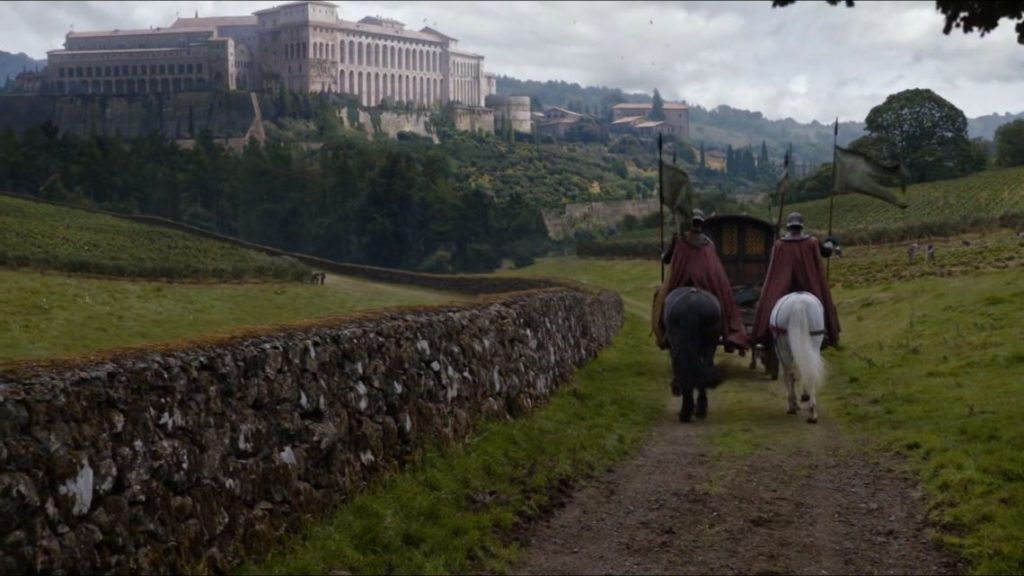
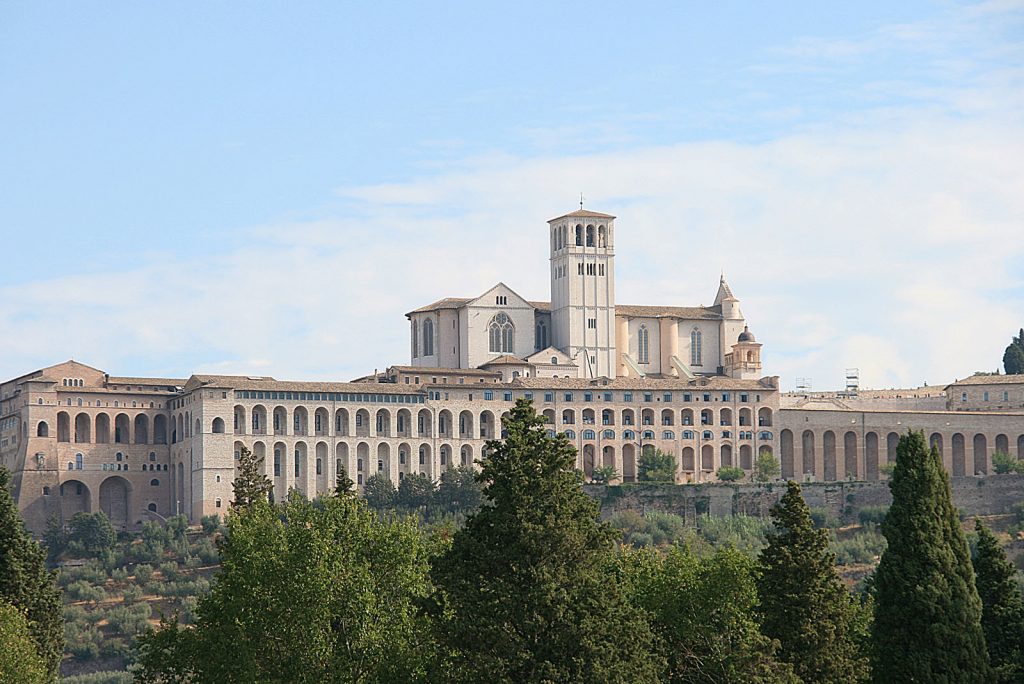
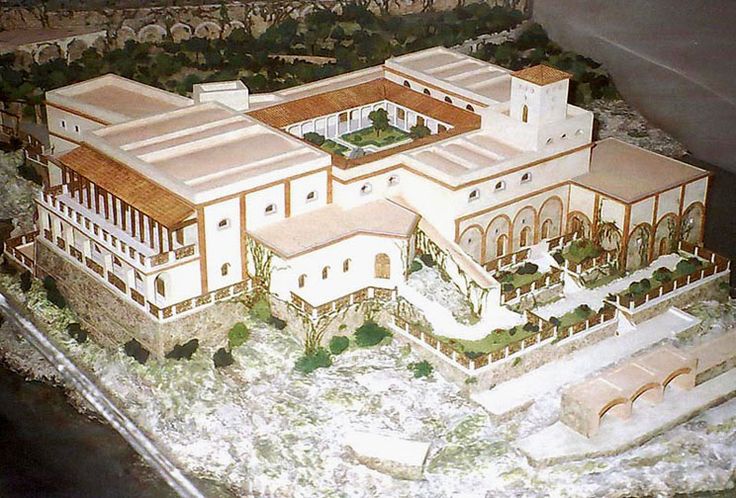
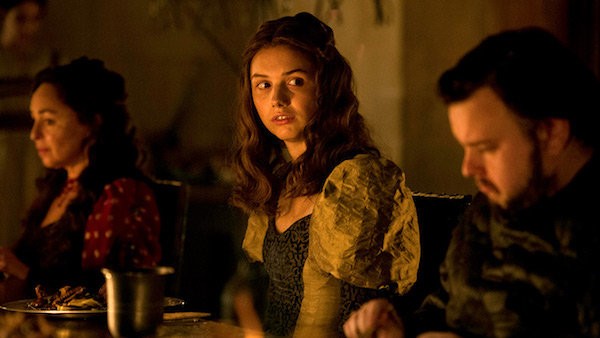
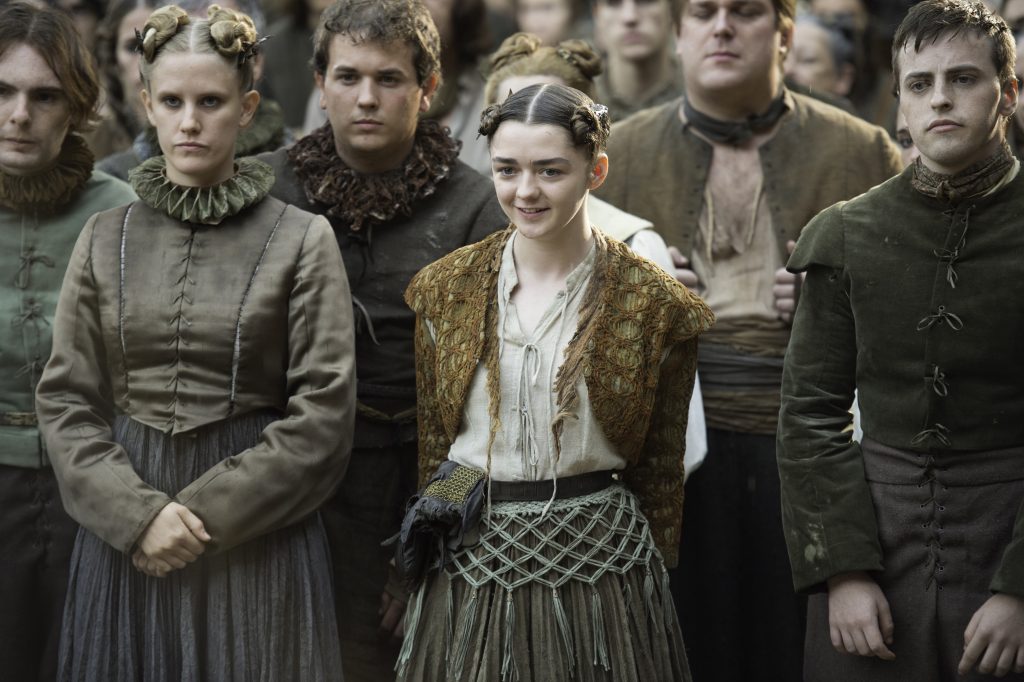
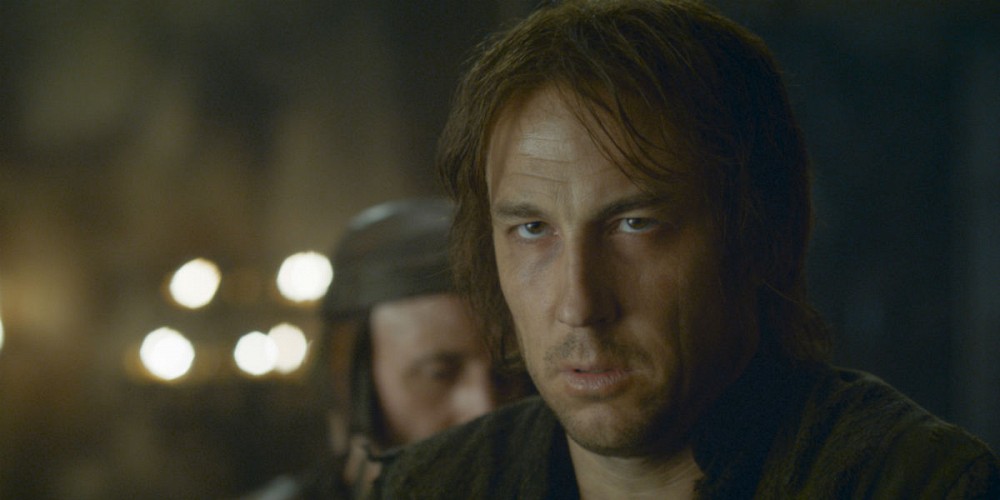
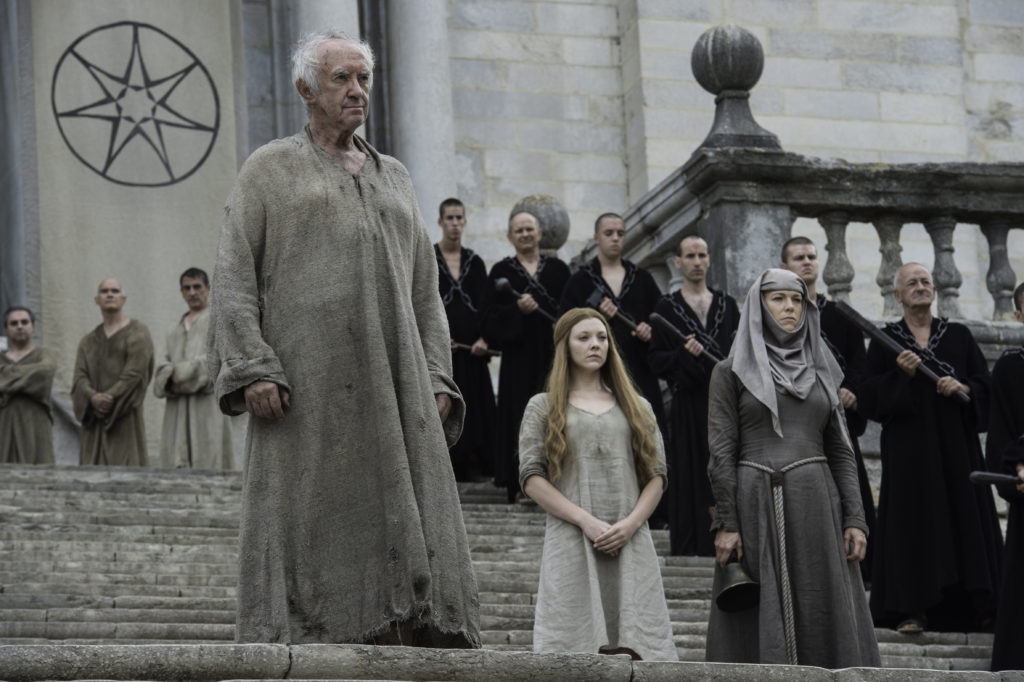
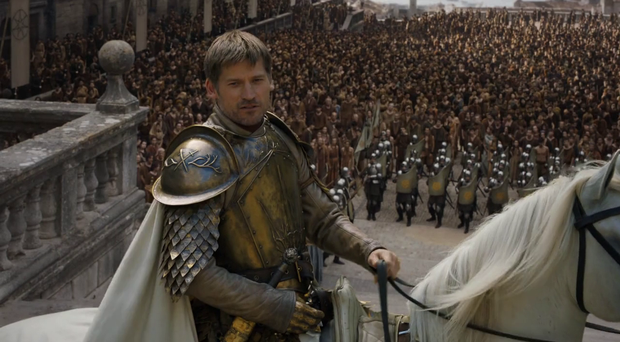
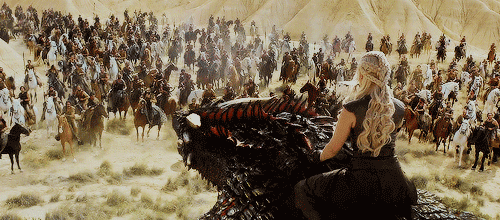
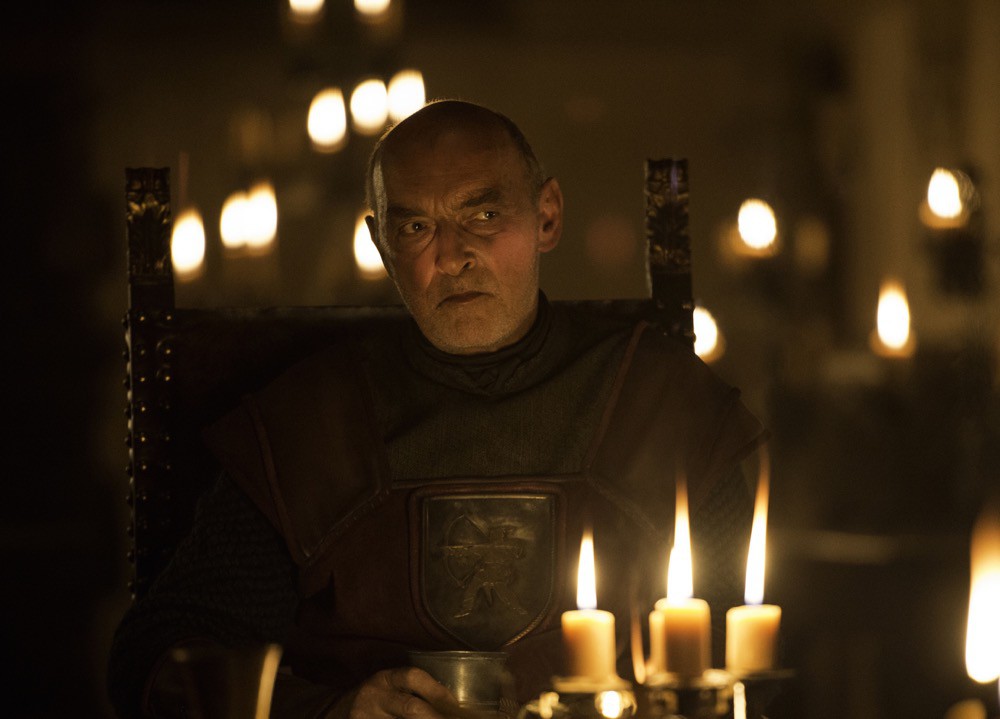
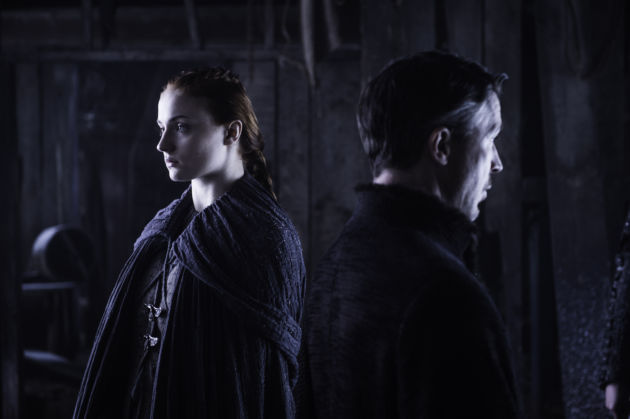
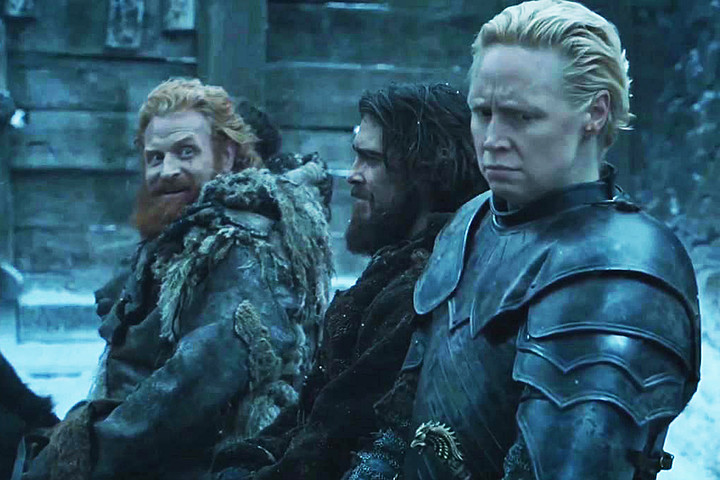

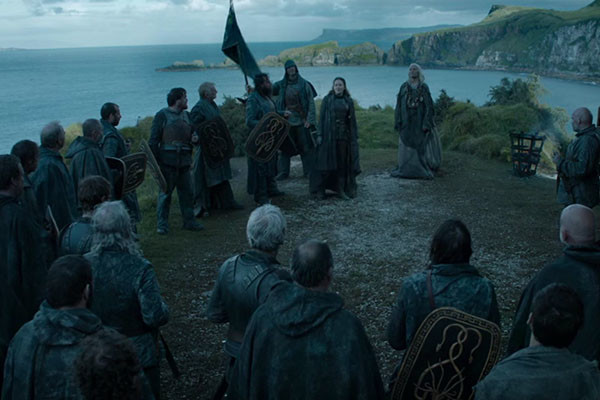
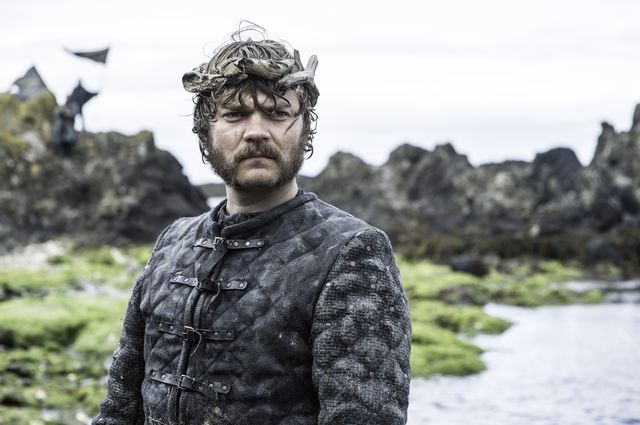
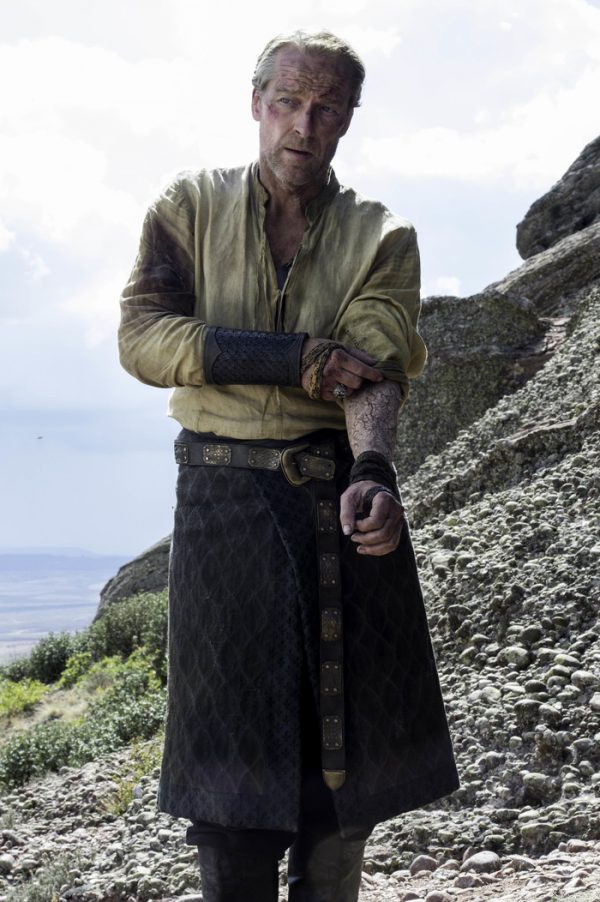
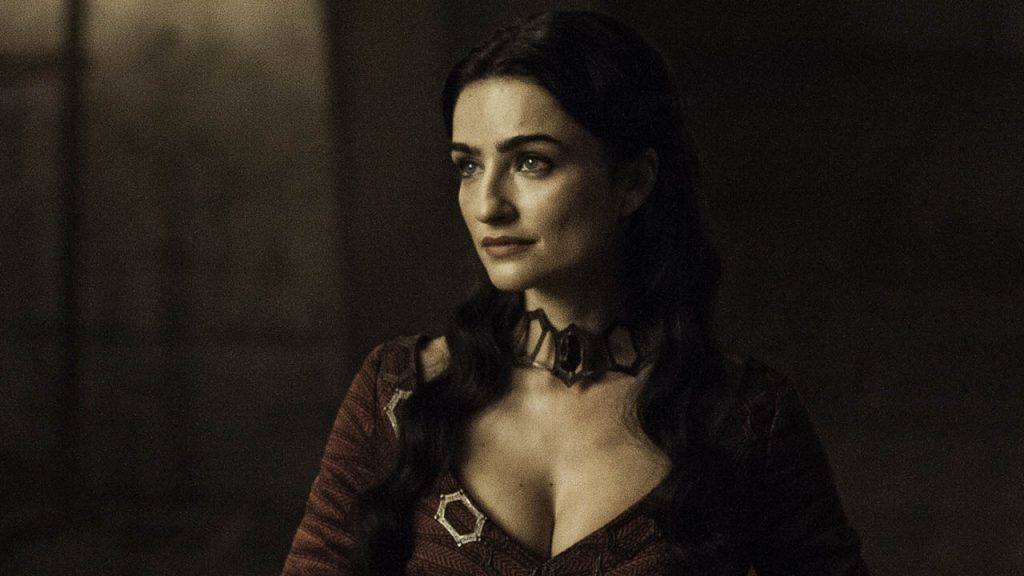
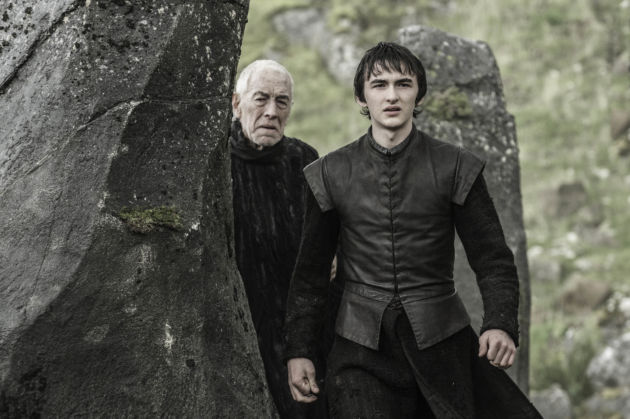

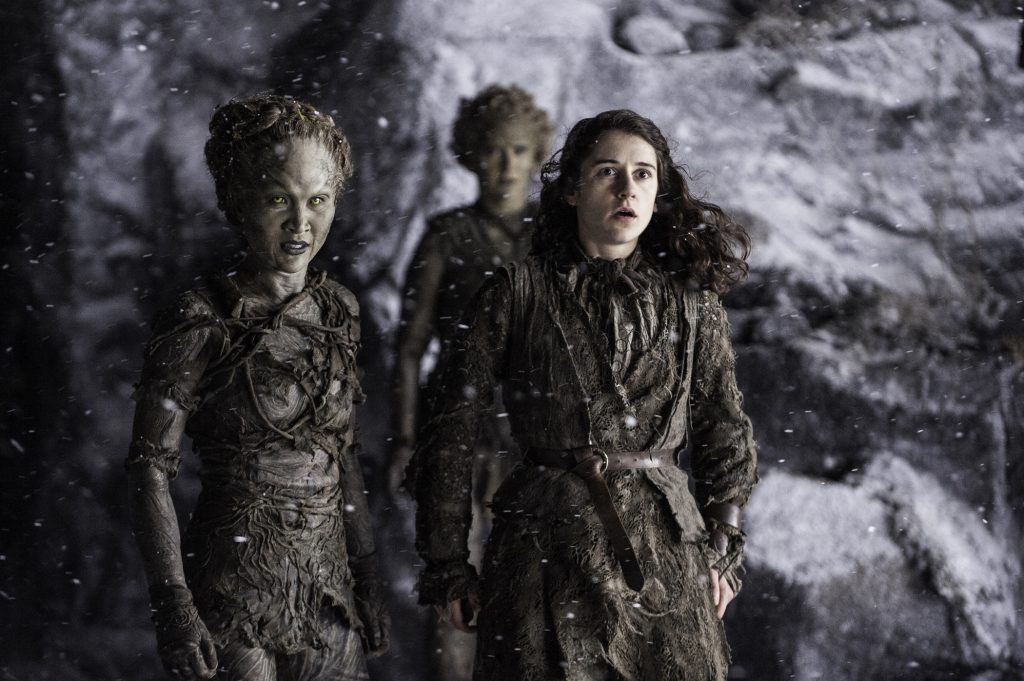
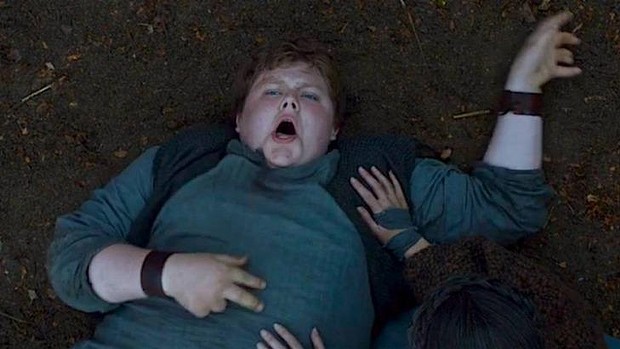
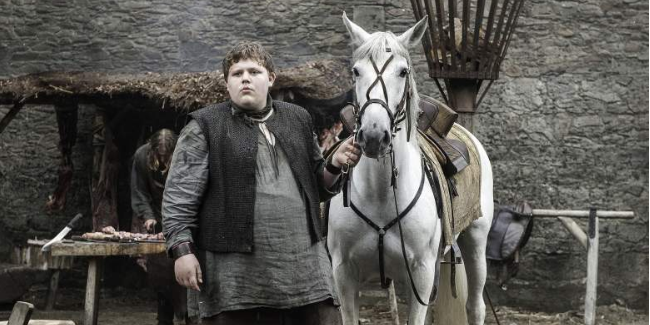
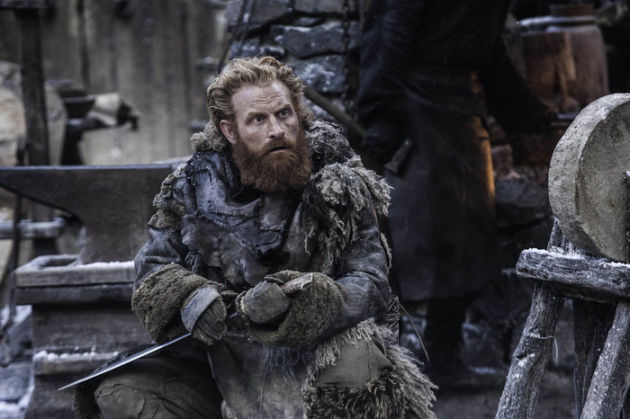
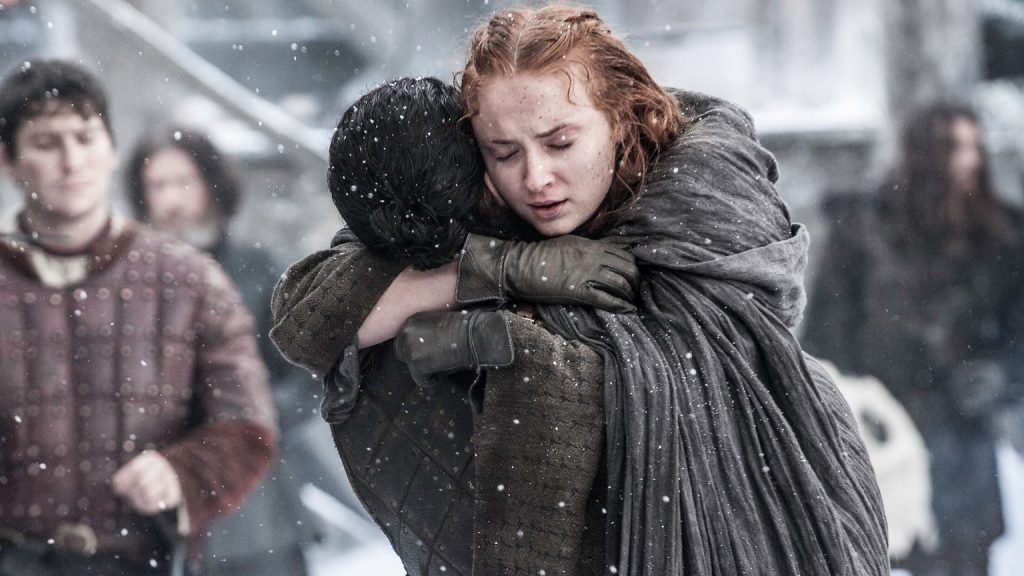
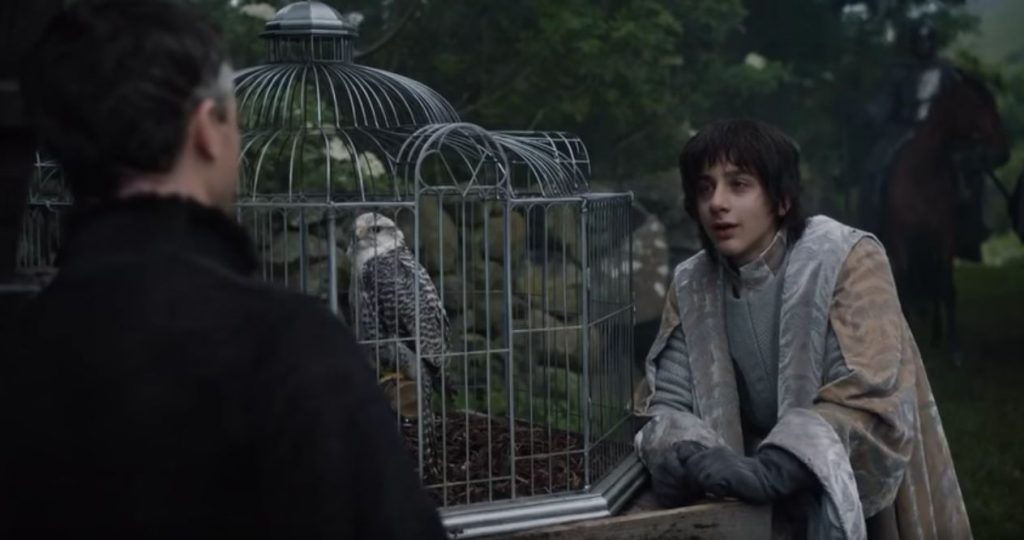
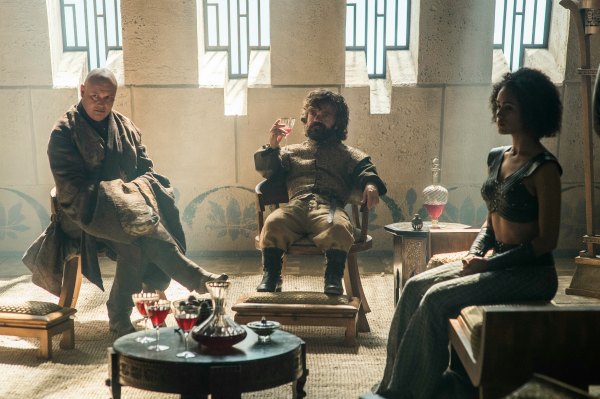
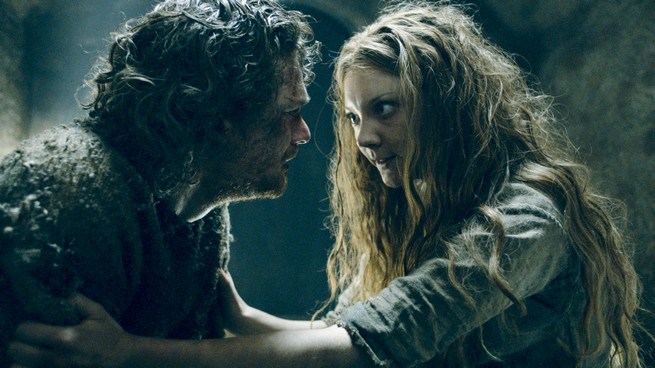
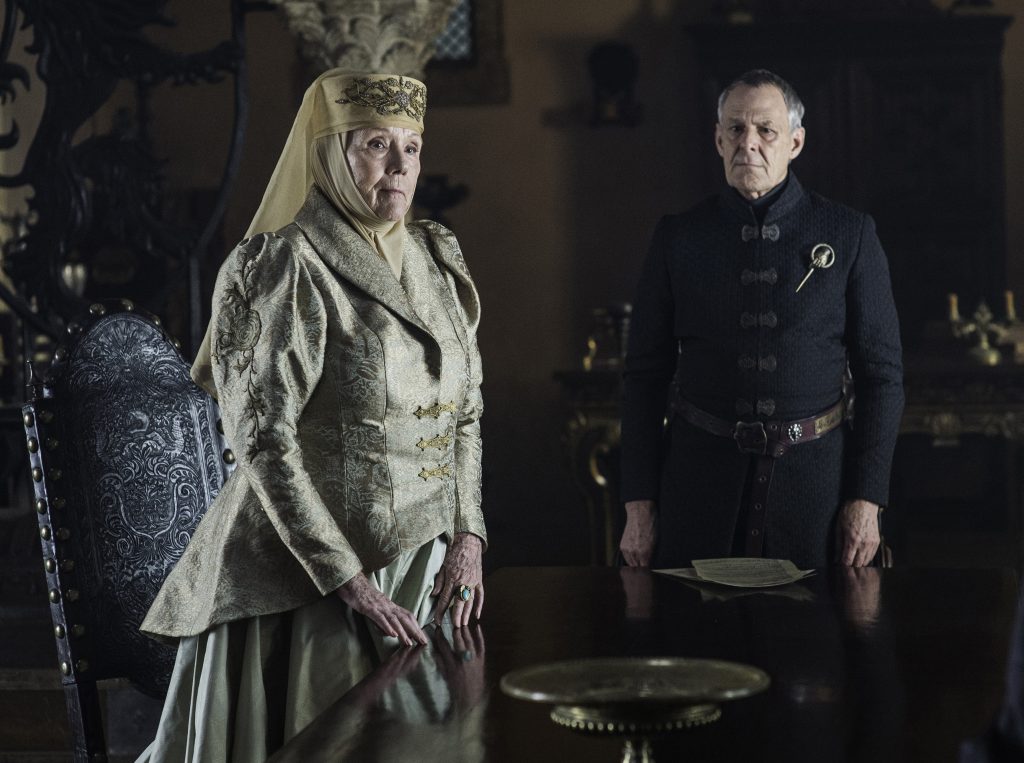
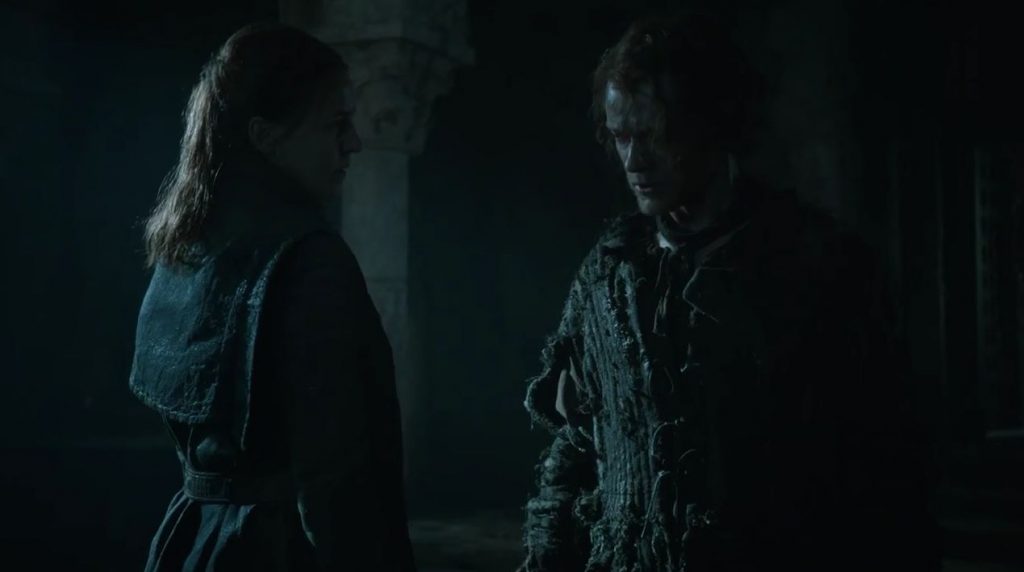
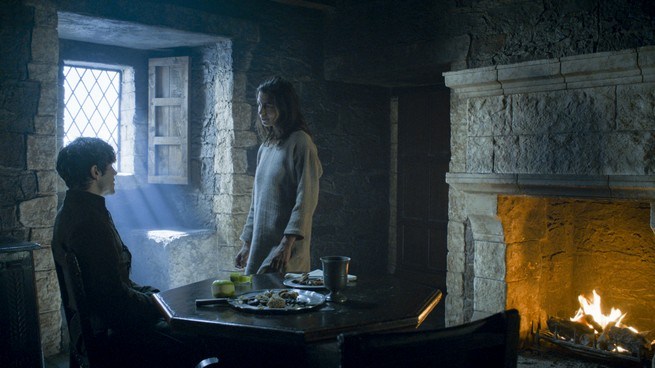
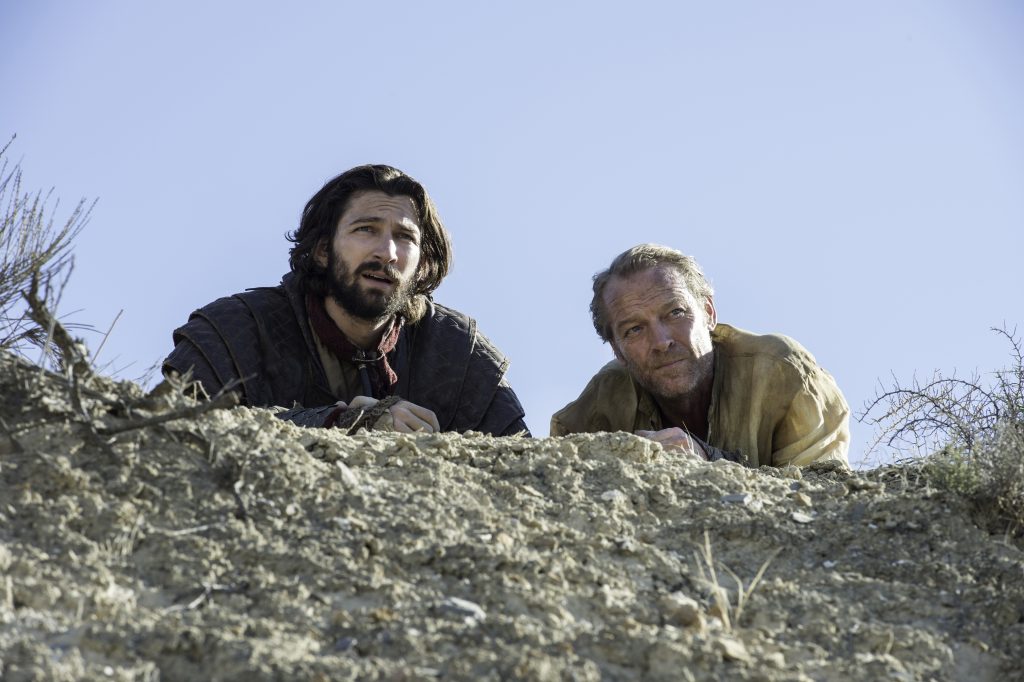
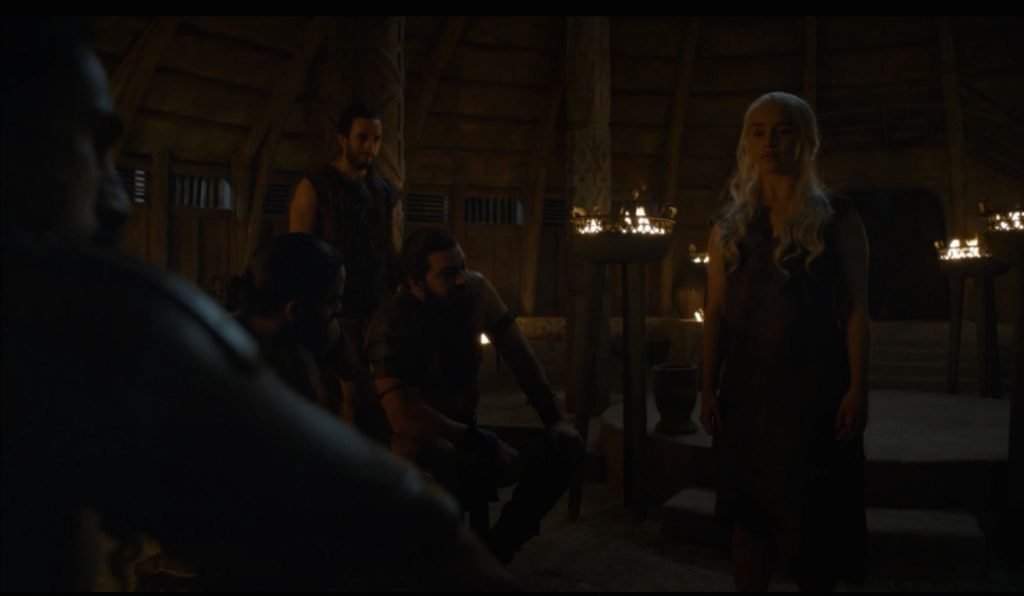
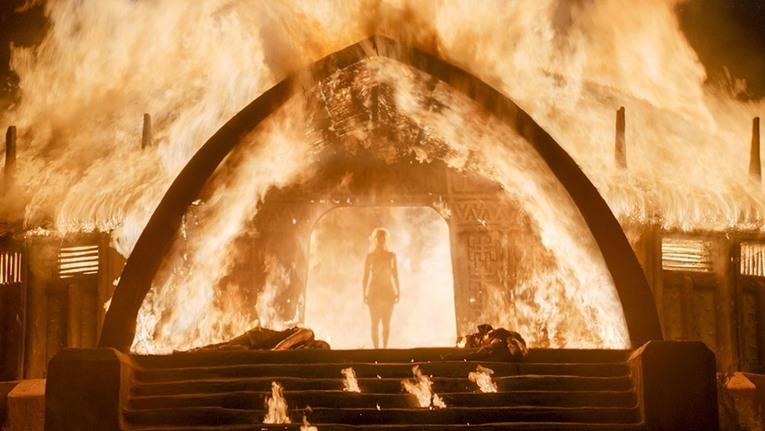
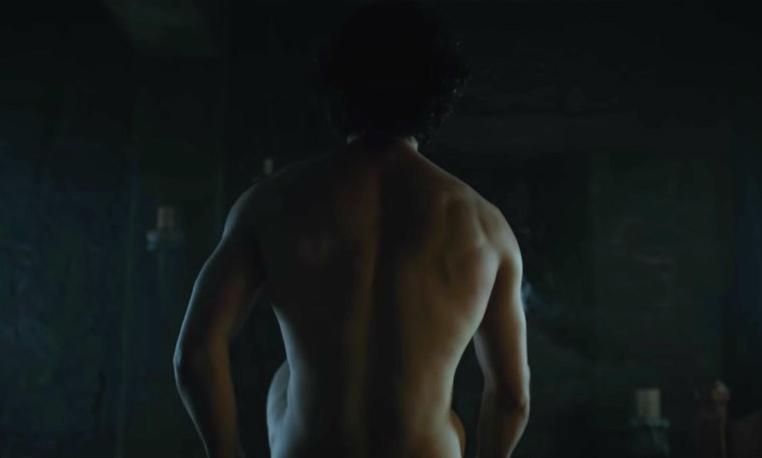
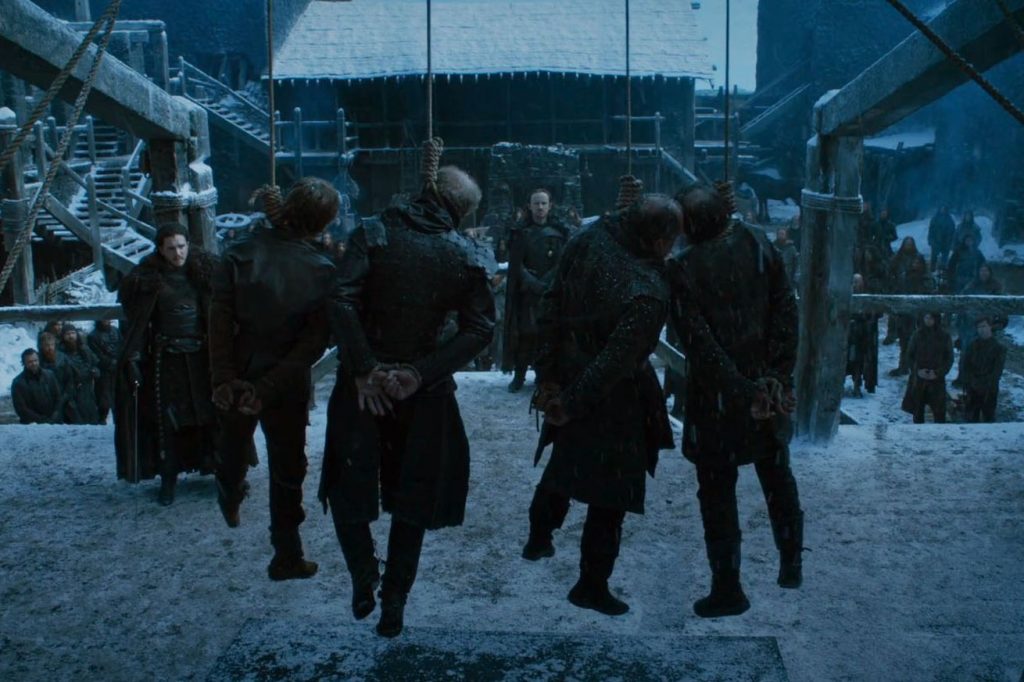

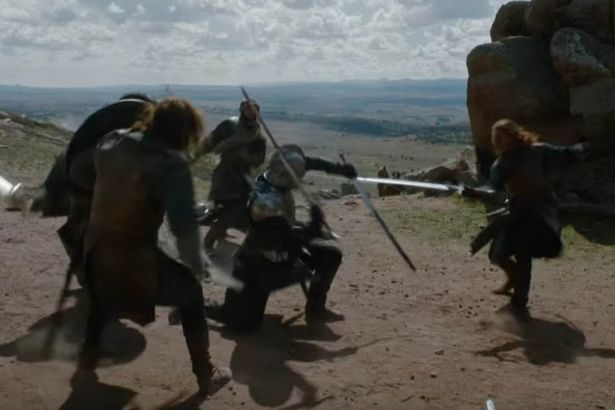
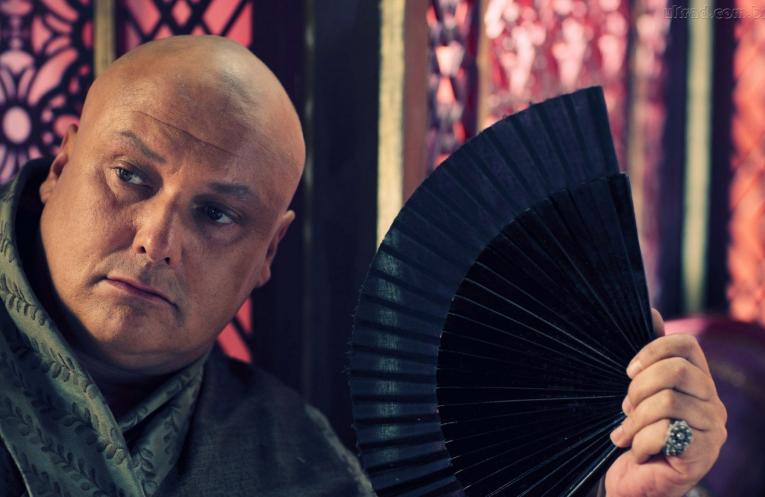
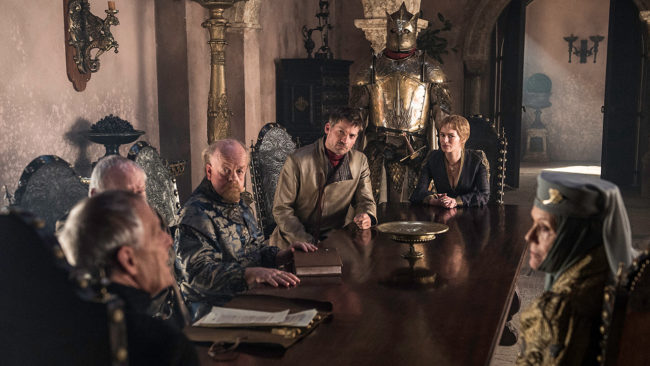

 Ramsay – A carriage with the Umber sigils approaches Winterfell. Ramsay and Karstark entertain a young lord Umber. The guy isn’t buying Ramsay’s “My poor dad died of poison” story, but doesn’t care. He has that amusingly frank GOT tone as he refuses to swear to Ramsay — for what good would it do — they’re already both Oathbreakers. He has a gift, Osha (long time no see) and a MUCH bigger Rickon. It would be hard to tell if he’s even the same actor, but I think he is. Oh, and sadly, a hot dog on a stick in the form of the Direwolf Shaggydog’s head. Sigh. So many bastards in this show. Now only Ghost, Summer, and Arya’s forgotten wolf are left.
Ramsay – A carriage with the Umber sigils approaches Winterfell. Ramsay and Karstark entertain a young lord Umber. The guy isn’t buying Ramsay’s “My poor dad died of poison” story, but doesn’t care. He has that amusingly frank GOT tone as he refuses to swear to Ramsay — for what good would it do — they’re already both Oathbreakers. He has a gift, Osha (long time no see) and a MUCH bigger Rickon. It would be hard to tell if he’s even the same actor, but I think he is. Oh, and sadly, a hot dog on a stick in the form of the Direwolf Shaggydog’s head. Sigh. So many bastards in this show. Now only Ghost, Summer, and Arya’s forgotten wolf are left.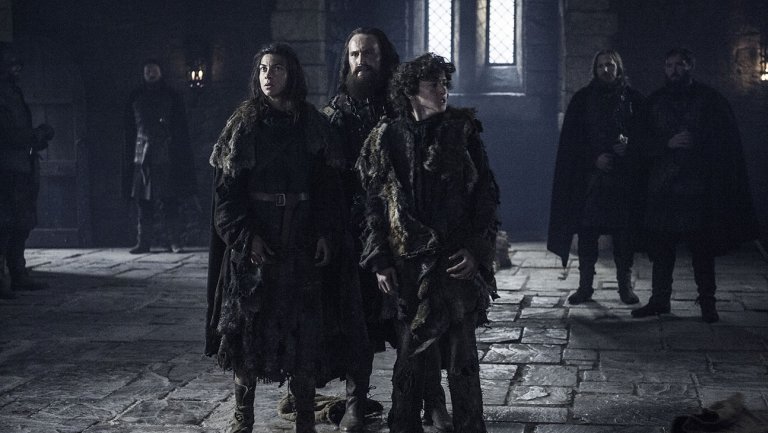
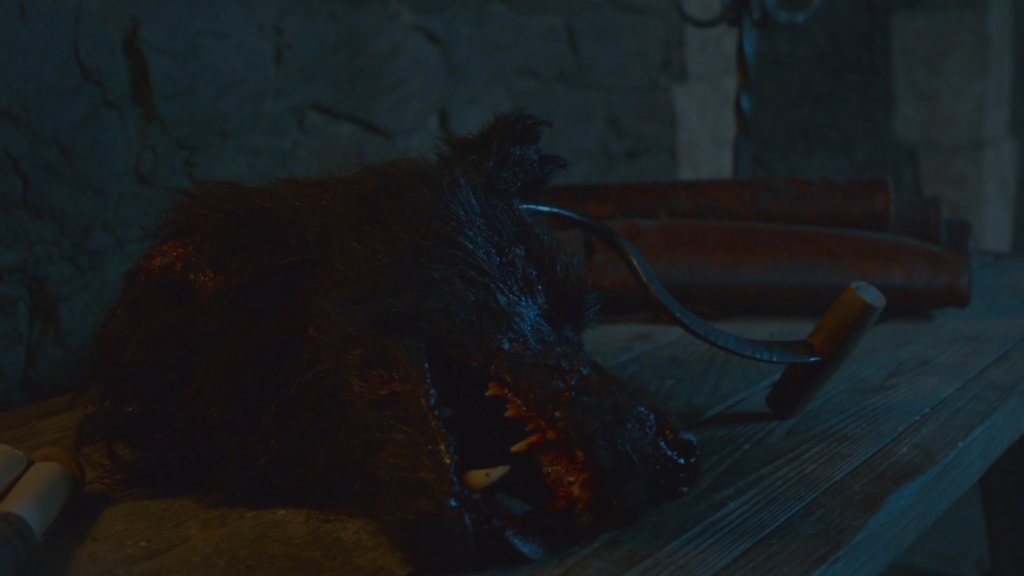
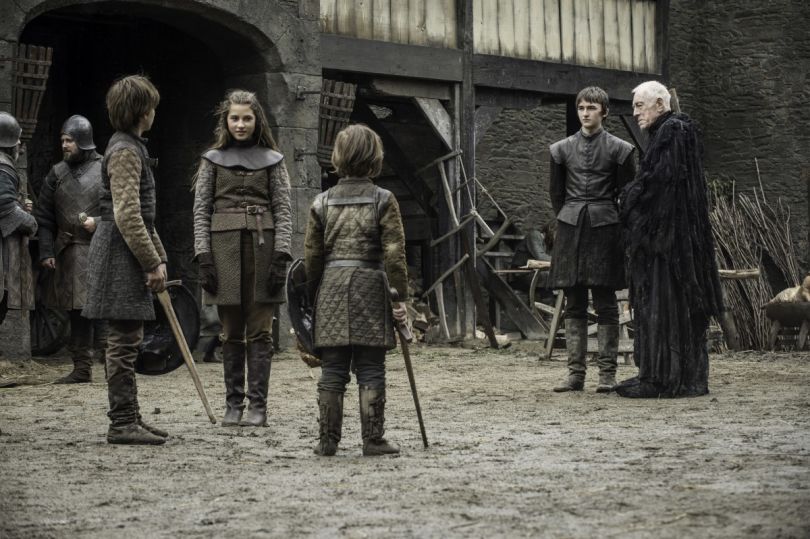
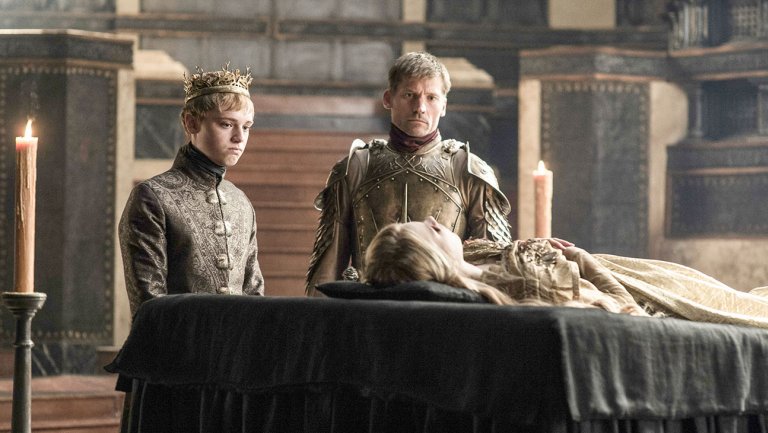

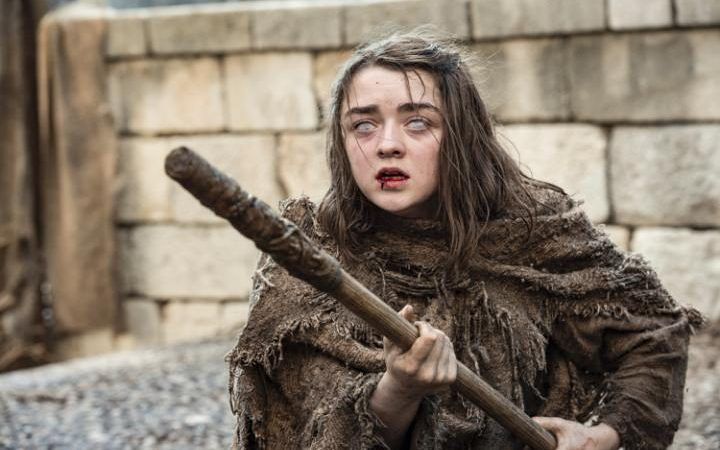
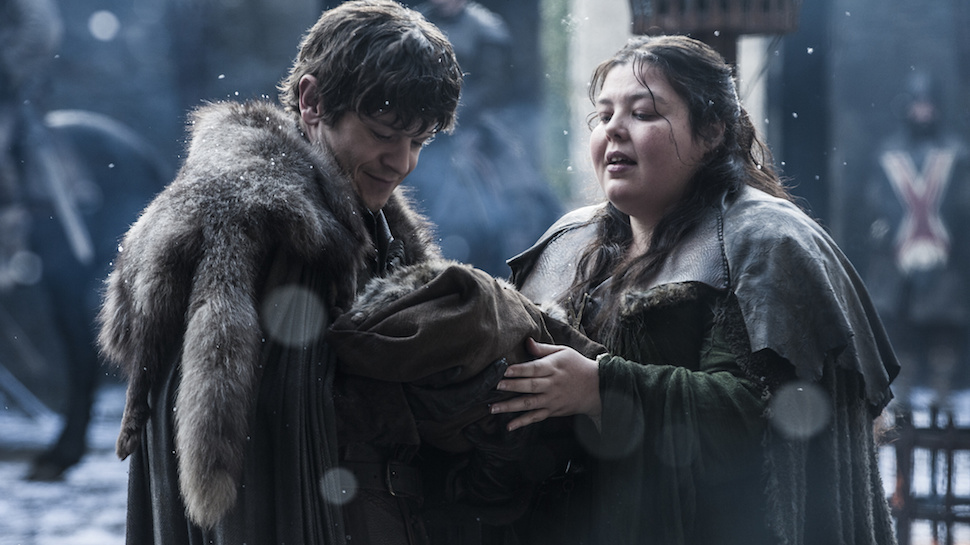
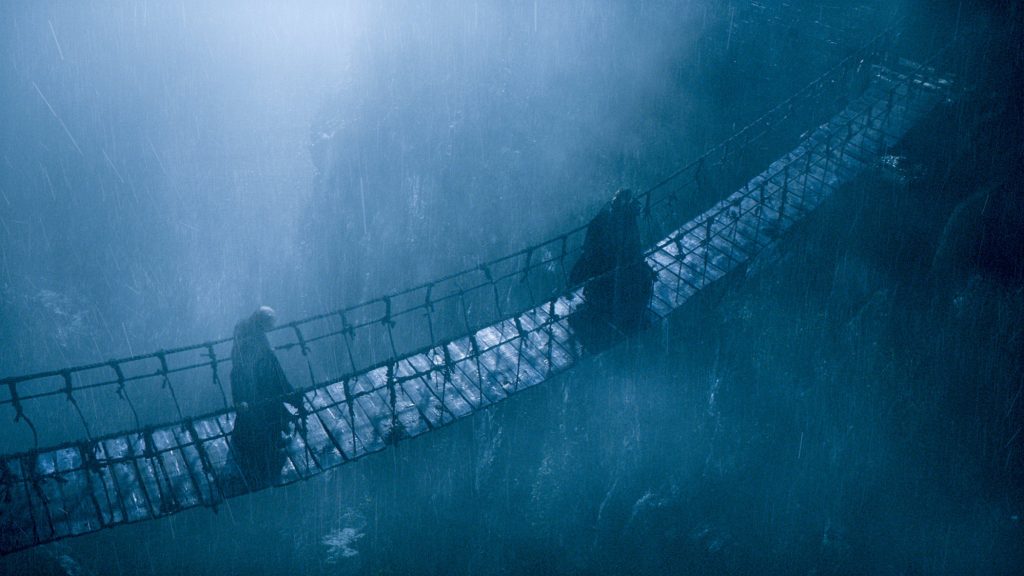

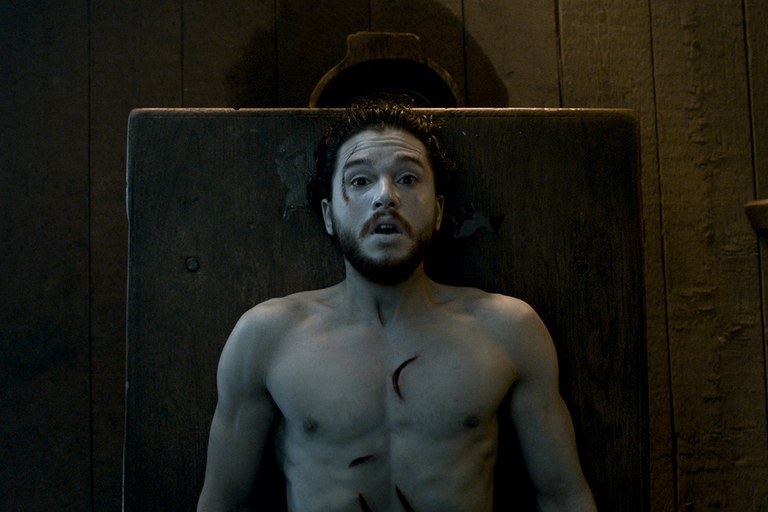
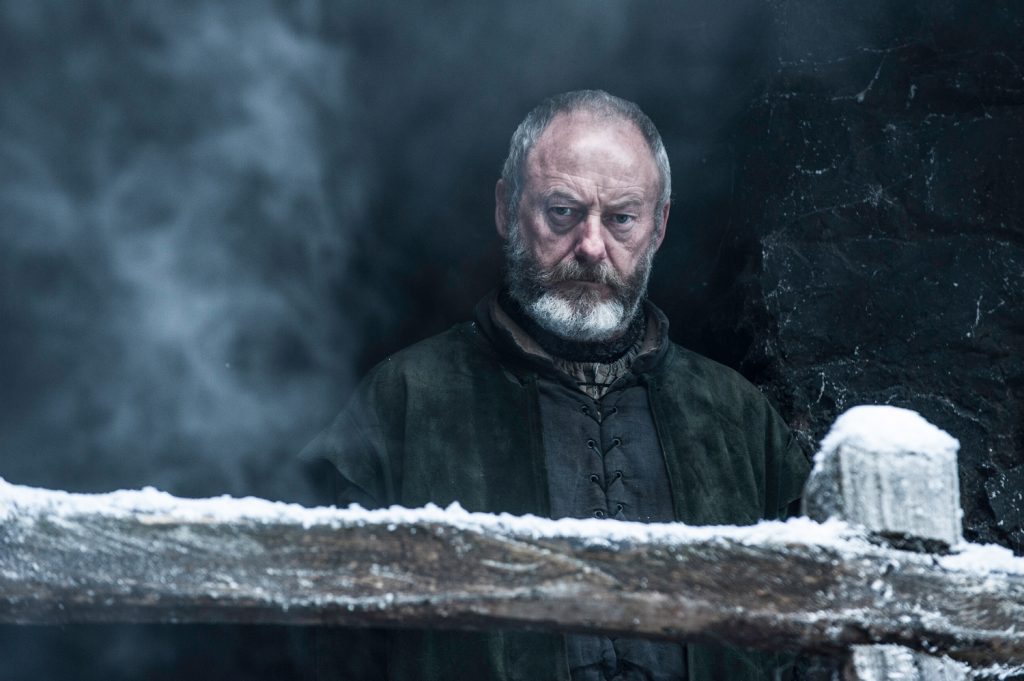 Next, Alliser Thorne sits in the main hall and tries to spin his treachery. He takes full on credit and goes for a half-assed Julius Caesar style pitch mostly focused on Jon’s terrible direction of leadership and his helping the Wildlings. I think this could have been better. Brutus, Cassius and all had a better argument (even though I’m a huge Caesar fan). They made the reasonable (to Romans) pitch about Caesar having taken too much power (kingship) unto himself. In the political context of the Roman Republic which like America valued the balance of power, and with the historic founding story involving the overthrow of Tarquin as example, they had some decent spin. Alliser Thorne not so much. But he does sound like he believes what he says, and I’ve always thought the show (and the actor) has done a good job humanizing his role.
Next, Alliser Thorne sits in the main hall and tries to spin his treachery. He takes full on credit and goes for a half-assed Julius Caesar style pitch mostly focused on Jon’s terrible direction of leadership and his helping the Wildlings. I think this could have been better. Brutus, Cassius and all had a better argument (even though I’m a huge Caesar fan). They made the reasonable (to Romans) pitch about Caesar having taken too much power (kingship) unto himself. In the political context of the Roman Republic which like America valued the balance of power, and with the historic founding story involving the overthrow of Tarquin as example, they had some decent spin. Alliser Thorne not so much. But he does sound like he believes what he says, and I’ve always thought the show (and the actor) has done a good job humanizing his role.![ep601_publicity_still_11_00154954_a[1]](http://all-things-andy-gavin.com/wp-content/uploads/2016/04/ep601_publicity_still_11_00154954_a1.jpeg) Ramsay / Winterfell – With Joffery dead, Ramsay is easily everyone’s favorite villain on the show. Really, he does a fabulous job. Here he is delivering the eulogy over Myranda’s body, or at least musing about her in the presence of Maester Wolkan. There is some depth to him and you can see who he liked the hot-but-evil bitch. Textbook touch when he orders her body fed to the dogs.
Ramsay / Winterfell – With Joffery dead, Ramsay is easily everyone’s favorite villain on the show. Really, he does a fabulous job. Here he is delivering the eulogy over Myranda’s body, or at least musing about her in the presence of Maester Wolkan. There is some depth to him and you can see who he liked the hot-but-evil bitch. Textbook touch when he orders her body fed to the dogs.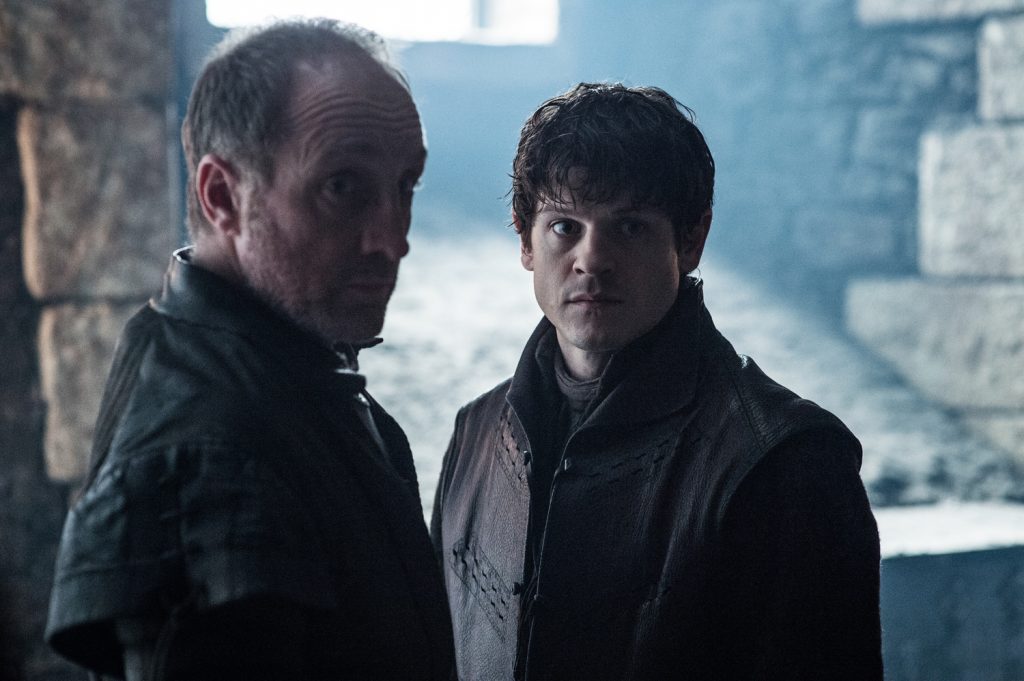 Sansa / Theon – I guess because of what is about to happen. Sansa and Theon run through the forest — perhaps even the very same set (I mean forest) that we saw way way back in the Season 1 Episode 1 intro. Theon is pretty nimble too for someone without most of his toes because he’s doing the leading. He even forces Sansa across a freezing river to “loose the trail” (hounds are barking in the distance). They make it across, but are in serious danger of dying of hyperthermia and have to take a break under a tree to freeze to death.
Sansa / Theon – I guess because of what is about to happen. Sansa and Theon run through the forest — perhaps even the very same set (I mean forest) that we saw way way back in the Season 1 Episode 1 intro. Theon is pretty nimble too for someone without most of his toes because he’s doing the leading. He even forces Sansa across a freezing river to “loose the trail” (hounds are barking in the distance). They make it across, but are in serious danger of dying of hyperthermia and have to take a break under a tree to freeze to death.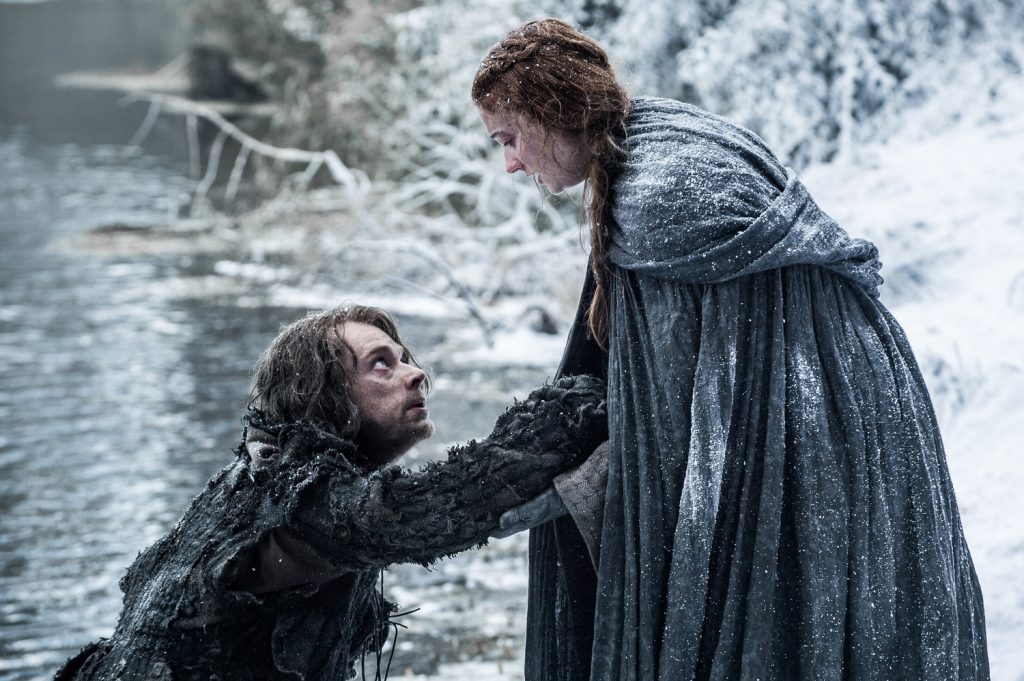 Brienne / Pod – ride in for the rescue. An oddball helter-skelter fight scene too as Brienne initially does well, then is knocked from her horse and barely — with the help of Theon and Pod — manages to do in all the Bolton soldiers. Sansa, again, cowers under the tree. After, Brienne kneels before Sansa and again offers her services. This time a grateful, less “innocent”, Sansa takes her up on the offer. The exchange of vows worked nicely, even more underscored by Sansa’s marginal memory of the oath.
Brienne / Pod – ride in for the rescue. An oddball helter-skelter fight scene too as Brienne initially does well, then is knocked from her horse and barely — with the help of Theon and Pod — manages to do in all the Bolton soldiers. Sansa, again, cowers under the tree. After, Brienne kneels before Sansa and again offers her services. This time a grateful, less “innocent”, Sansa takes her up on the offer. The exchange of vows worked nicely, even more underscored by Sansa’s marginal memory of the oath.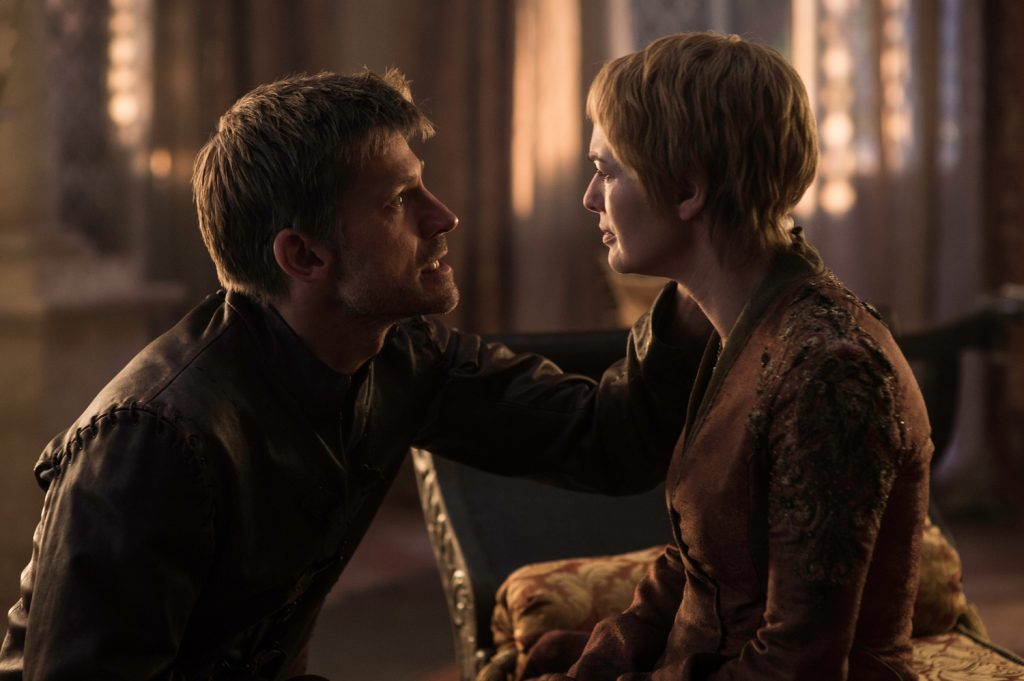 Margarey – Is still cooped up barefoot and dirty in her cell. An annoying Septa reads scripture to her and demands confession. The High Septon swaps in to try good cop. Marg still isn’t ready to yield and asks after Loras, but we don’t learn anything.
Margarey – Is still cooped up barefoot and dirty in her cell. An annoying Septa reads scripture to her and demands confession. The High Septon swaps in to try good cop. Marg still isn’t ready to yield and asks after Loras, but we don’t learn anything. Dorne – Price Doran is limping along with Ellaria Sand and they exchange what seems to be pleasantries about his and his brother’s personalities. But Tyene Sand (Bronn’s “girl”) stabs Hotah in the back and Ellaria takes out her pseudo-brother-in-law. It’s all too sad and still fairly cheesy.
Dorne – Price Doran is limping along with Ellaria Sand and they exchange what seems to be pleasantries about his and his brother’s personalities. But Tyene Sand (Bronn’s “girl”) stabs Hotah in the back and Ellaria takes out her pseudo-brother-in-law. It’s all too sad and still fairly cheesy.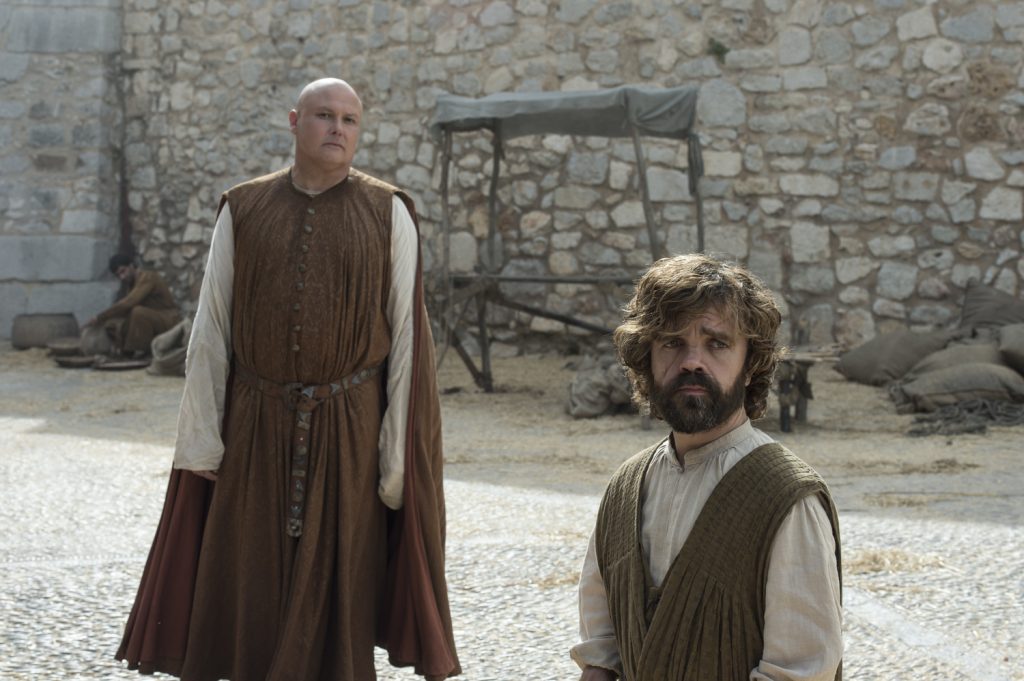 Jorah and Daario – a exploring Northern Ireland in search of Dany and the show reminds us gratuitously of Jorah’s grayscale by having him take a peek. No surprise, it’s bigger. They find charred ram, clearly Drogon’s leavings and then Dany’s ring. Not totally sure how they manage to do that other than it being on the one untrodden spot where she was standing — and magically figures out that the horde has her.
Jorah and Daario – a exploring Northern Ireland in search of Dany and the show reminds us gratuitously of Jorah’s grayscale by having him take a peek. No surprise, it’s bigger. They find charred ram, clearly Drogon’s leavings and then Dany’s ring. Not totally sure how they manage to do that other than it being on the one untrodden spot where she was standing — and magically figures out that the horde has her.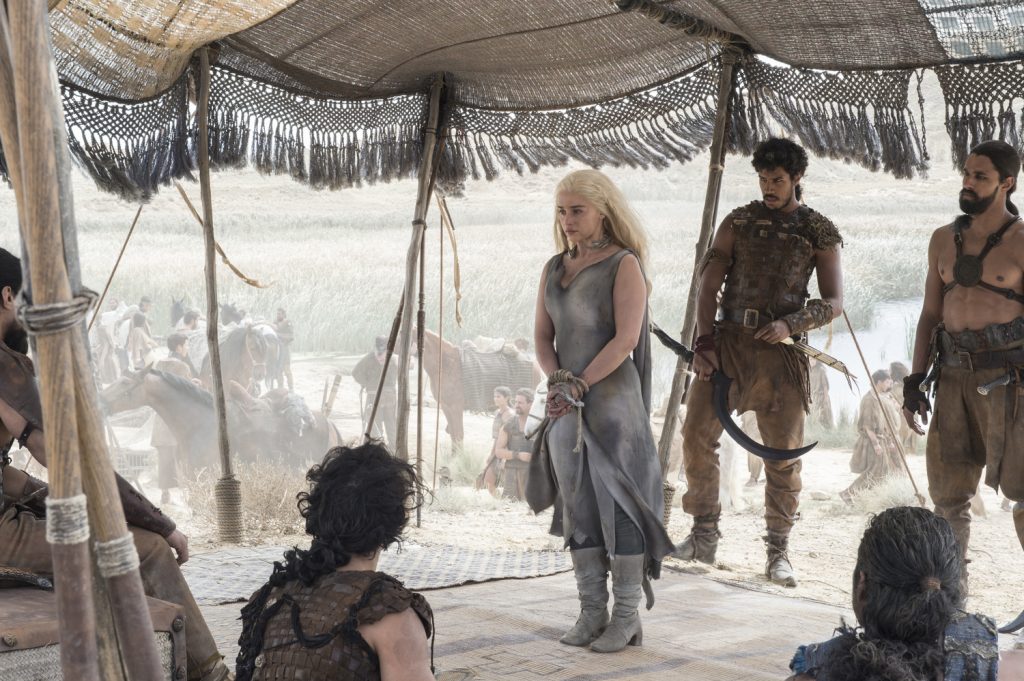 Arya – is not only still wearing uncomfortable white contact lenses, but is begging in the street. The Waif creeps up on her and beats her with a staff for a while. Clearly, in future episodes, Arya needs to listen to the Force and hone her blind-girl fighting skills!
Arya – is not only still wearing uncomfortable white contact lenses, but is begging in the street. The Waif creeps up on her and beats her with a staff for a while. Clearly, in future episodes, Arya needs to listen to the Force and hone her blind-girl fighting skills!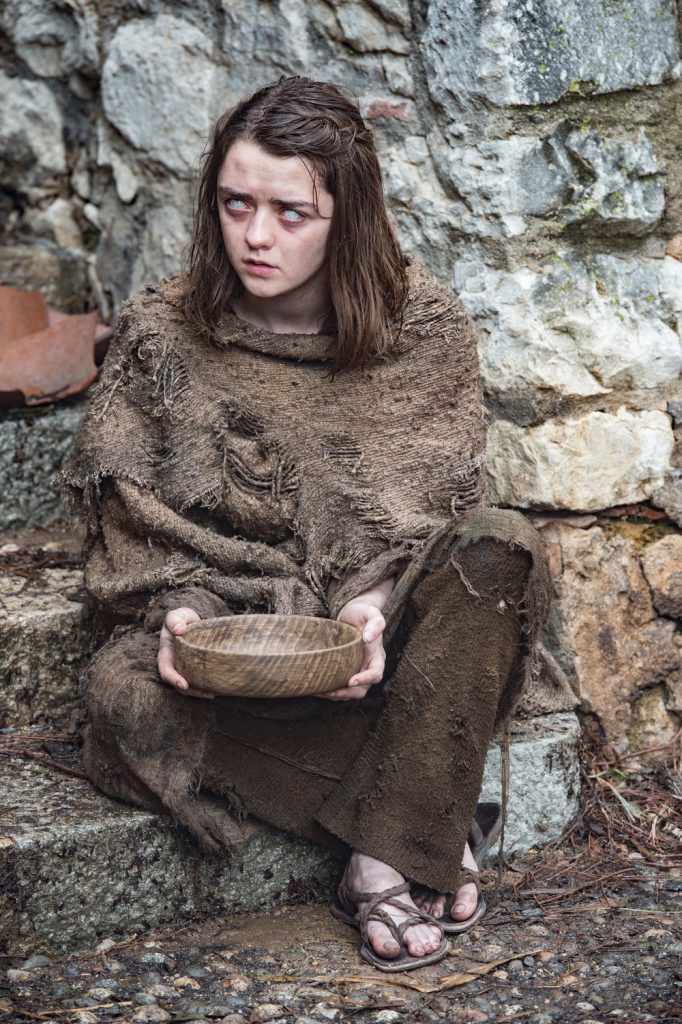 Overall, it’s great to have the show back but this is one of those episodes that has so much scene setting, and so many story threads that no one really gets that much time to move the plot. That being said, it’s not all just establishing position because a whole lot of stuff happens. As usual in this show everyone’s position is shifting rapidly and isn’t always what it seems. GRRM (and D&B) love to each plot line to alternate highs and lows. Although frankly, there are plenty of lows right now.
Overall, it’s great to have the show back but this is one of those episodes that has so much scene setting, and so many story threads that no one really gets that much time to move the plot. That being said, it’s not all just establishing position because a whole lot of stuff happens. As usual in this show everyone’s position is shifting rapidly and isn’t always what it seems. GRRM (and D&B) love to each plot line to alternate highs and lows. Although frankly, there are plenty of lows right now.